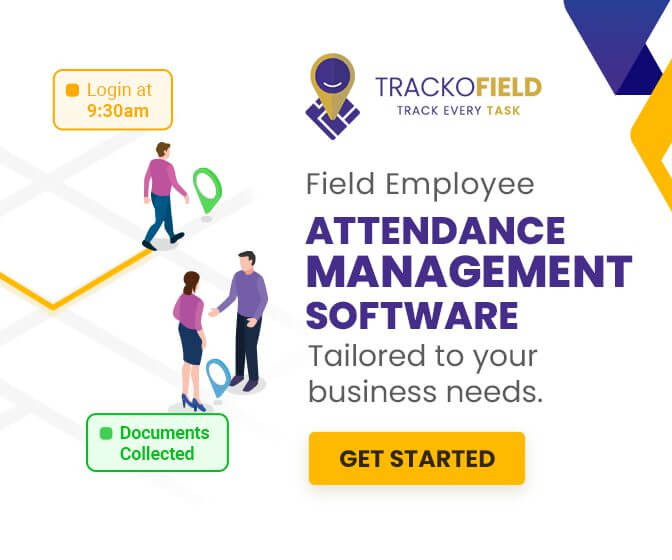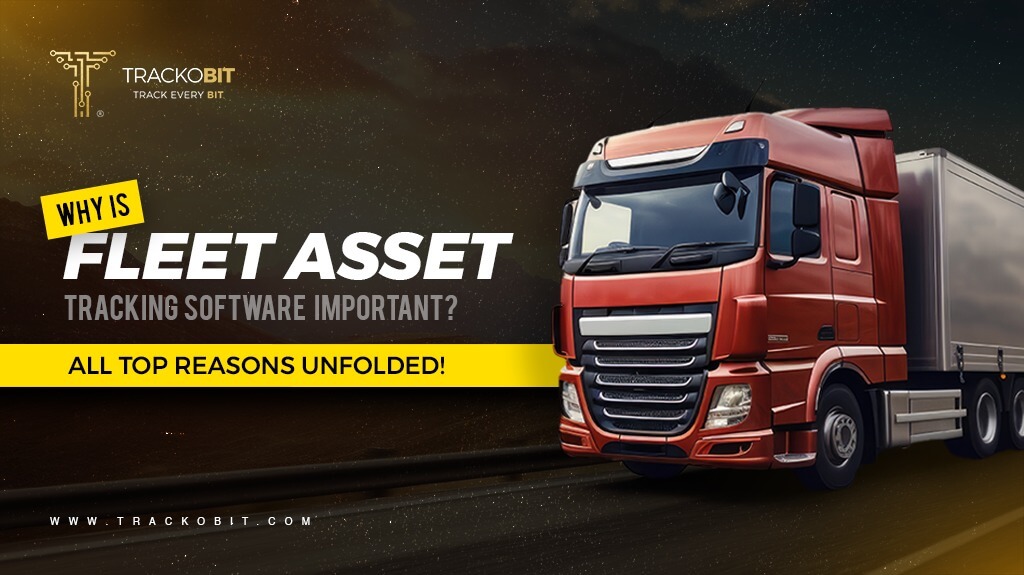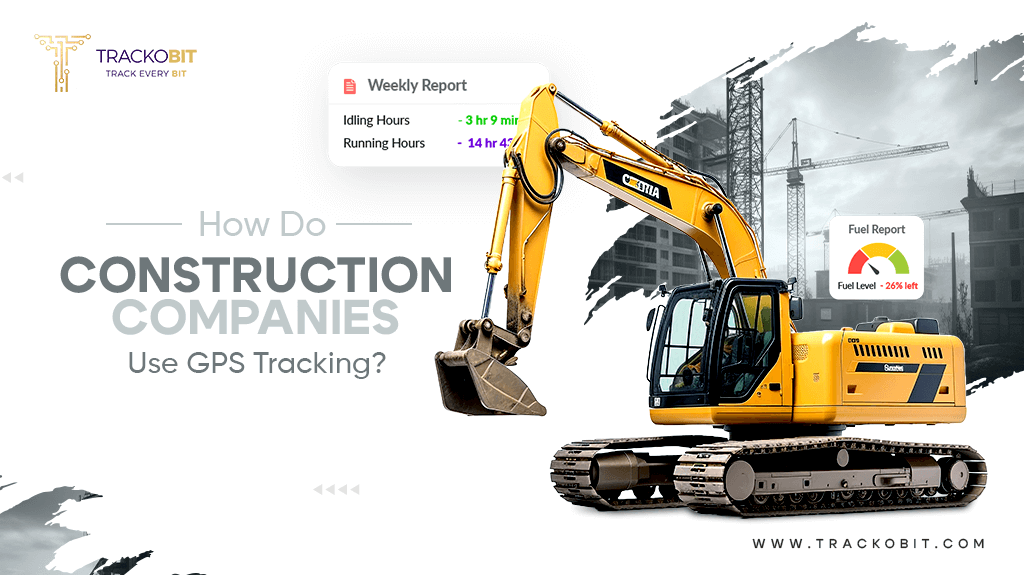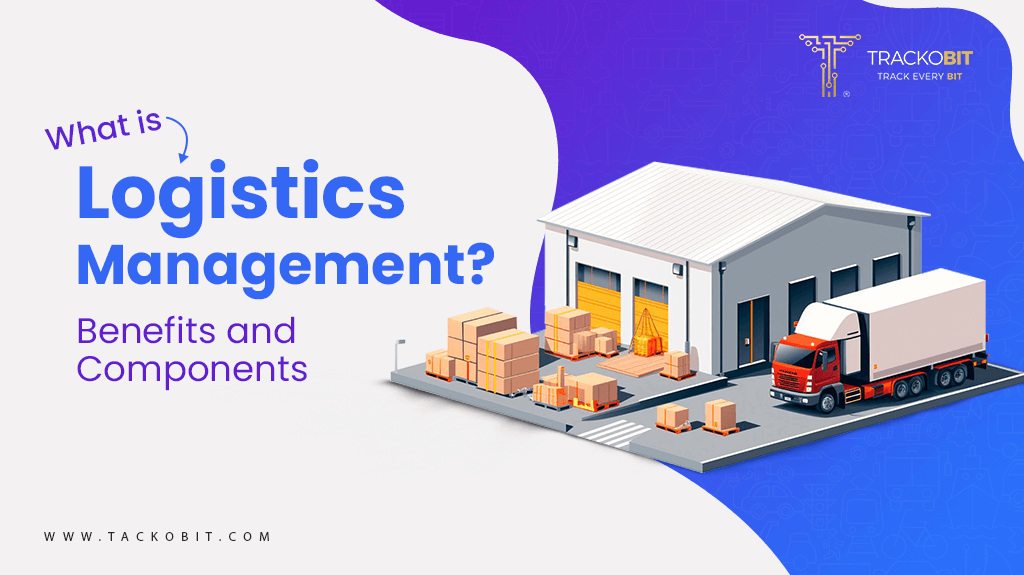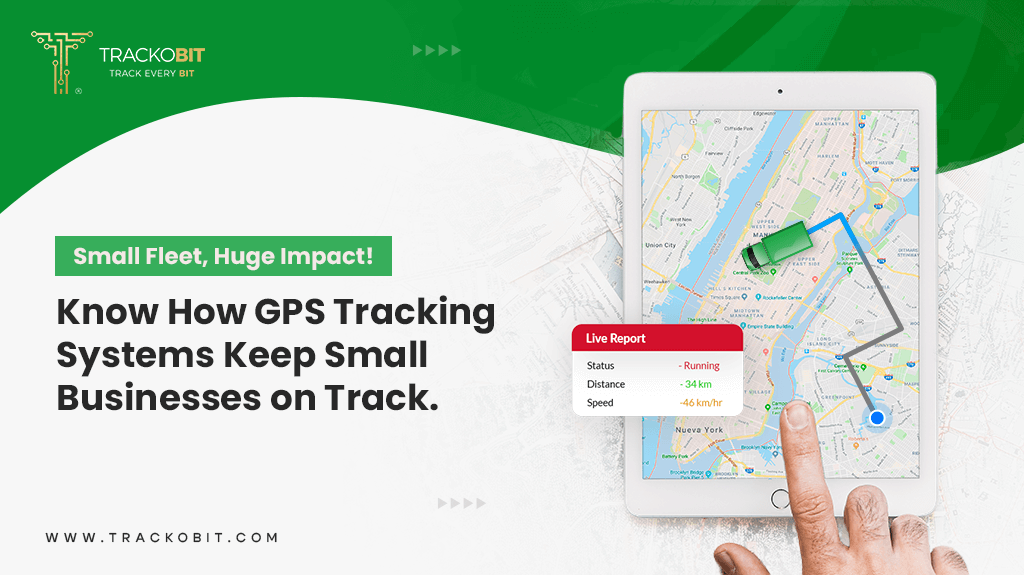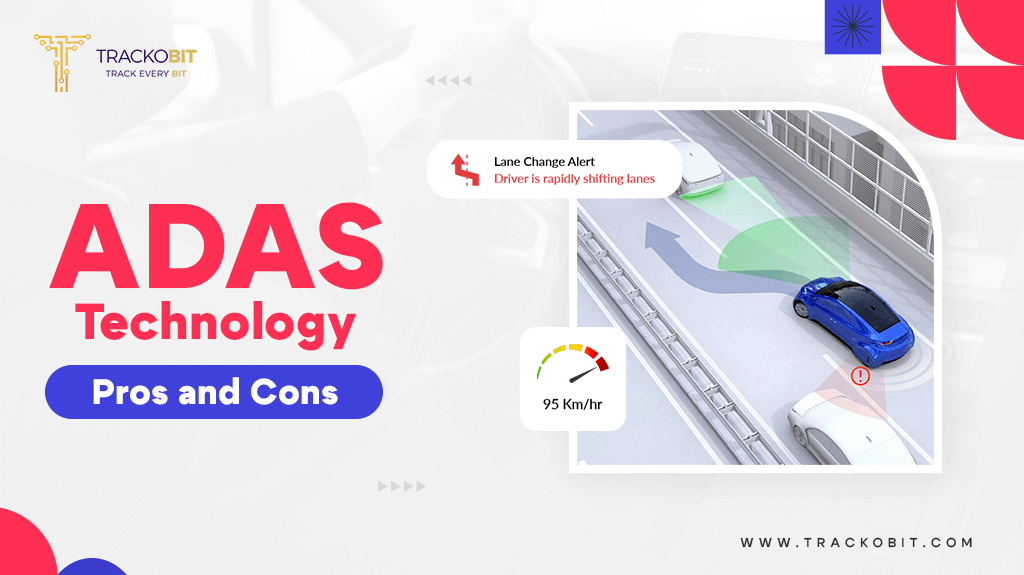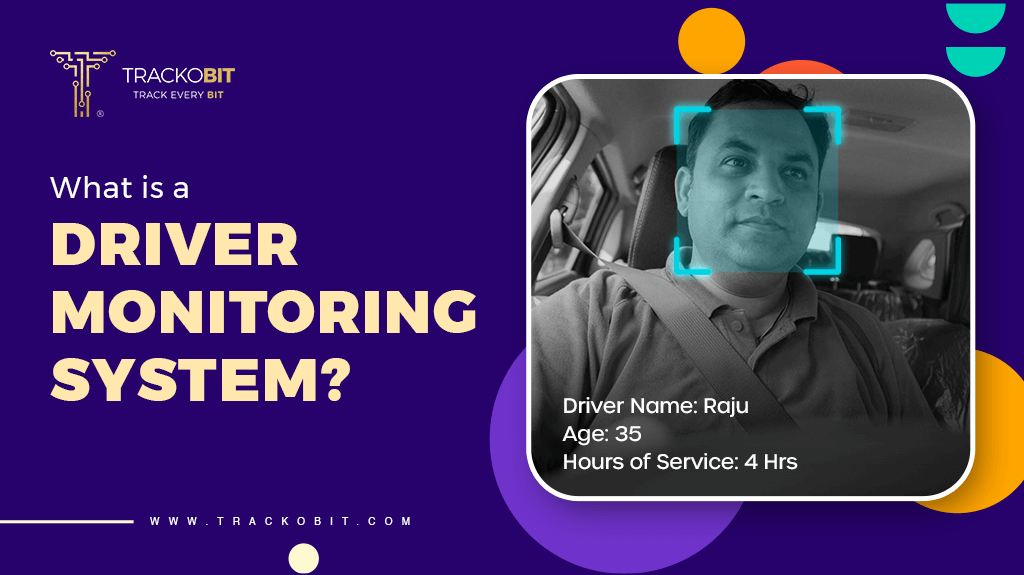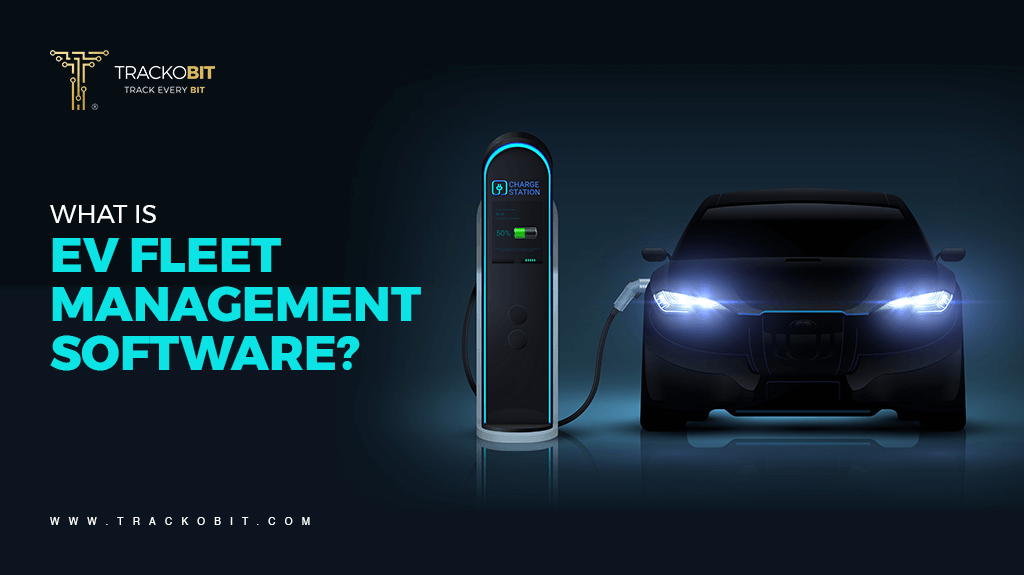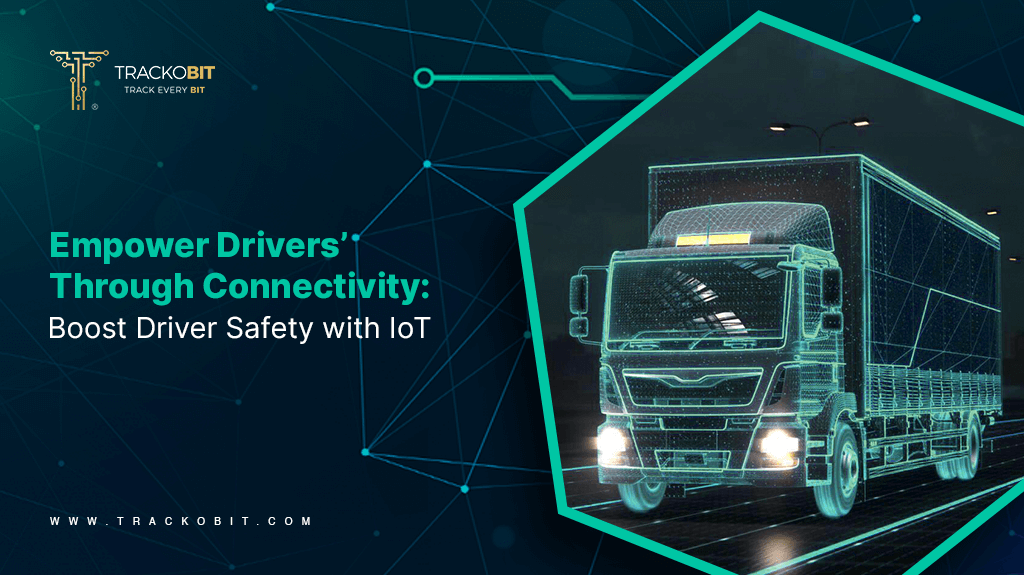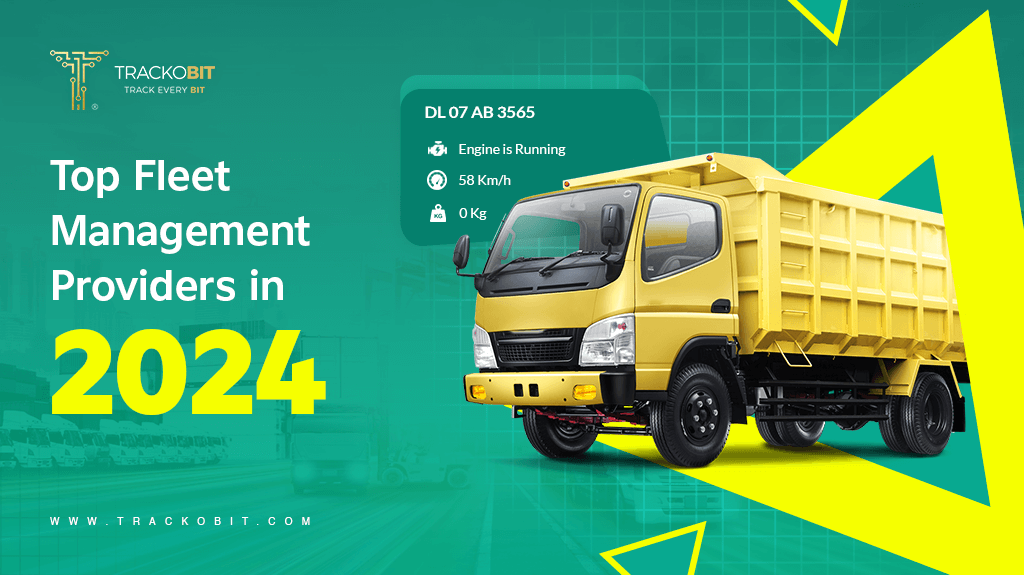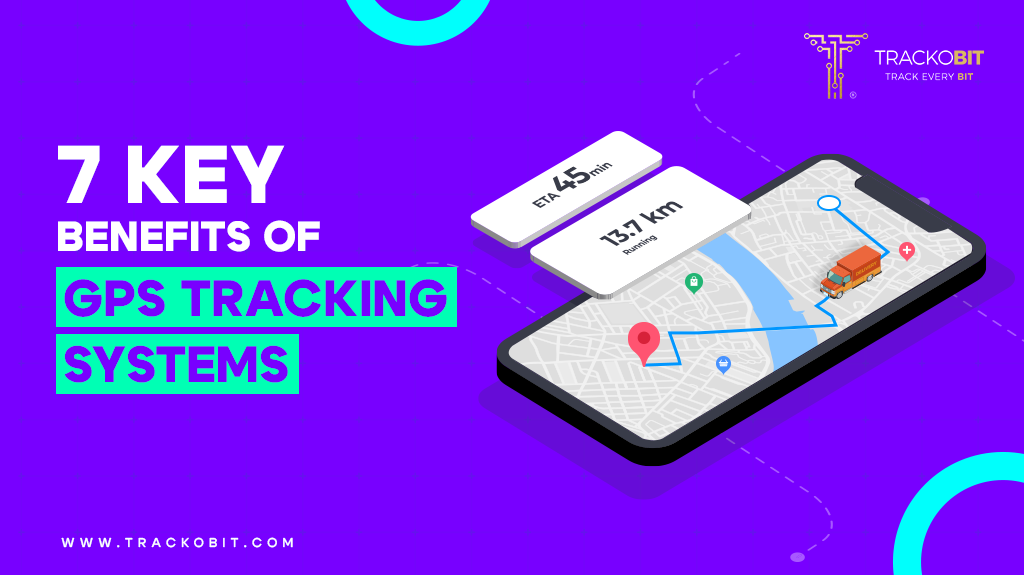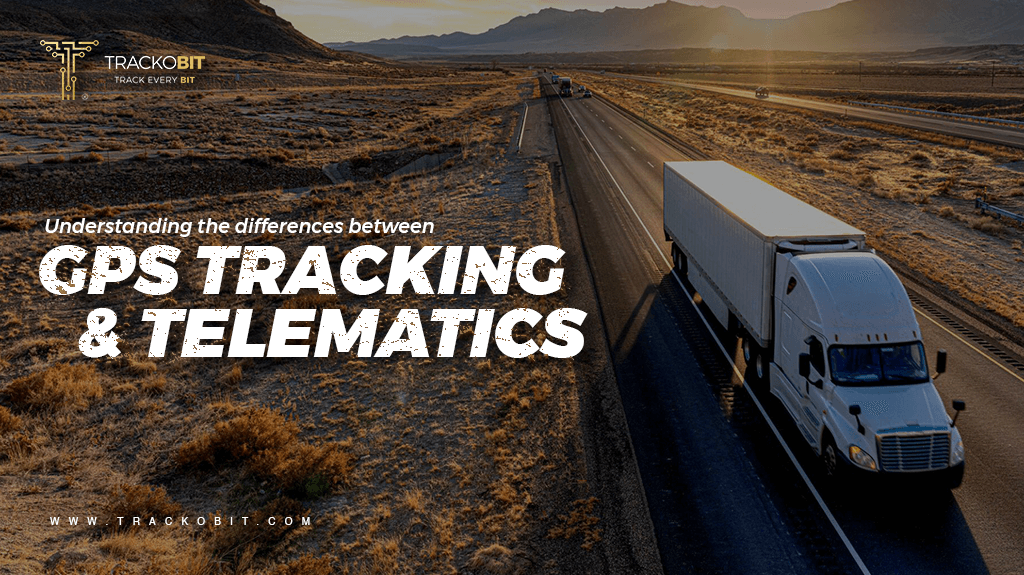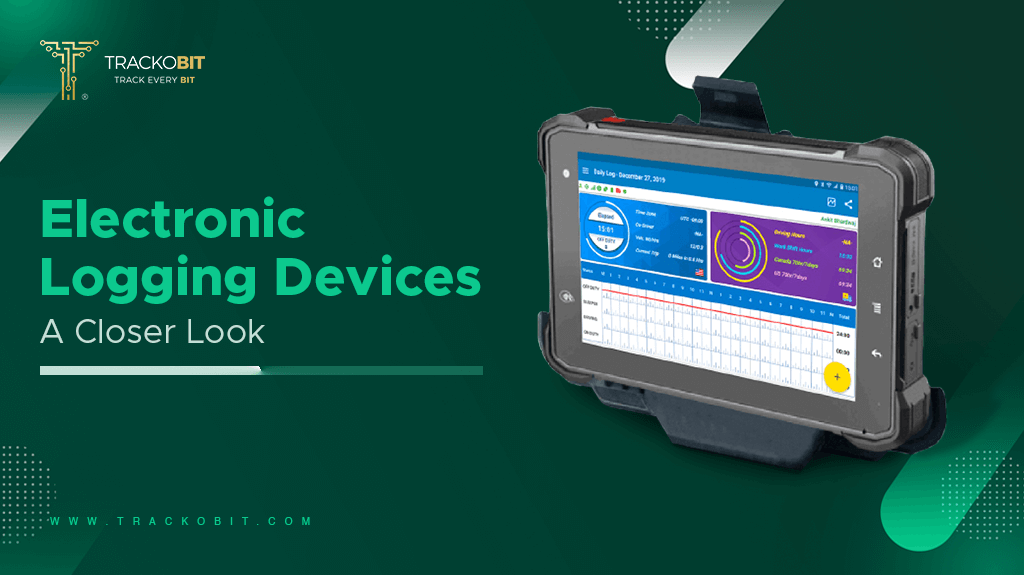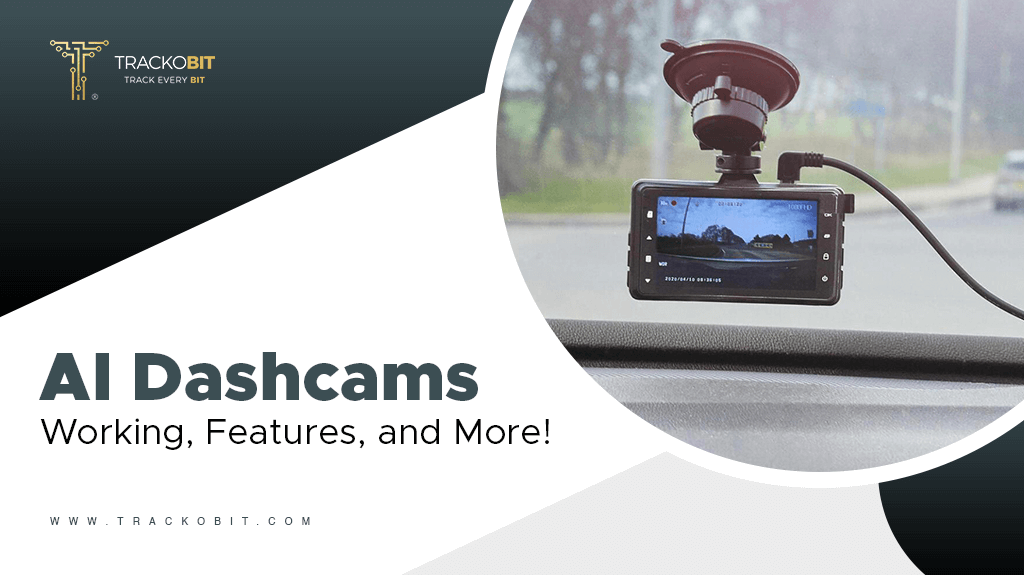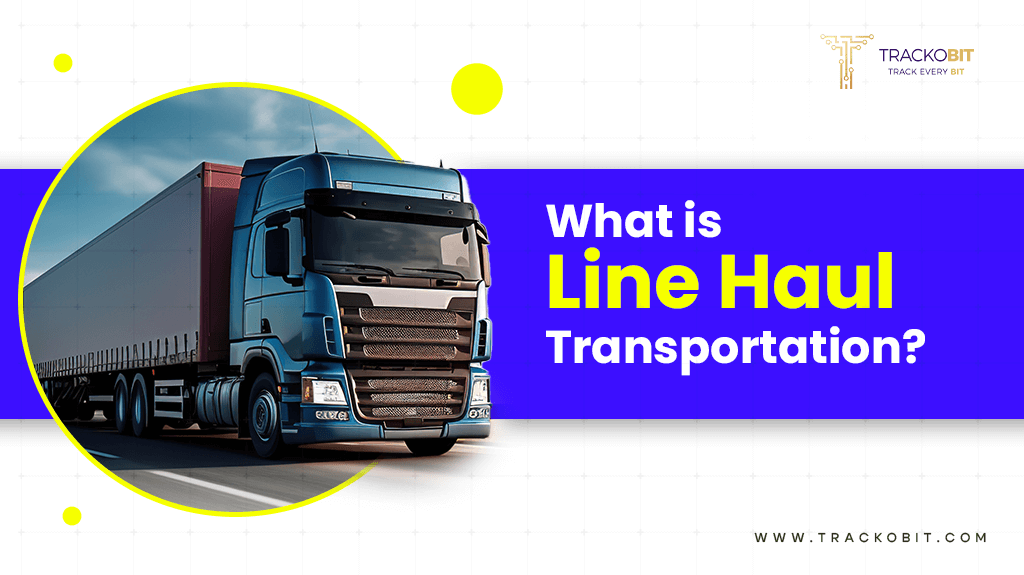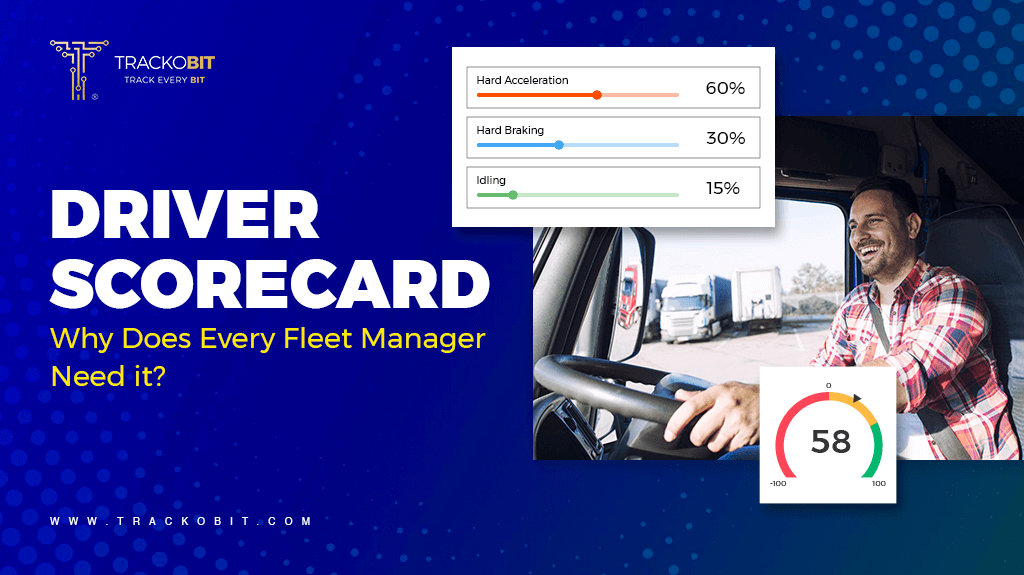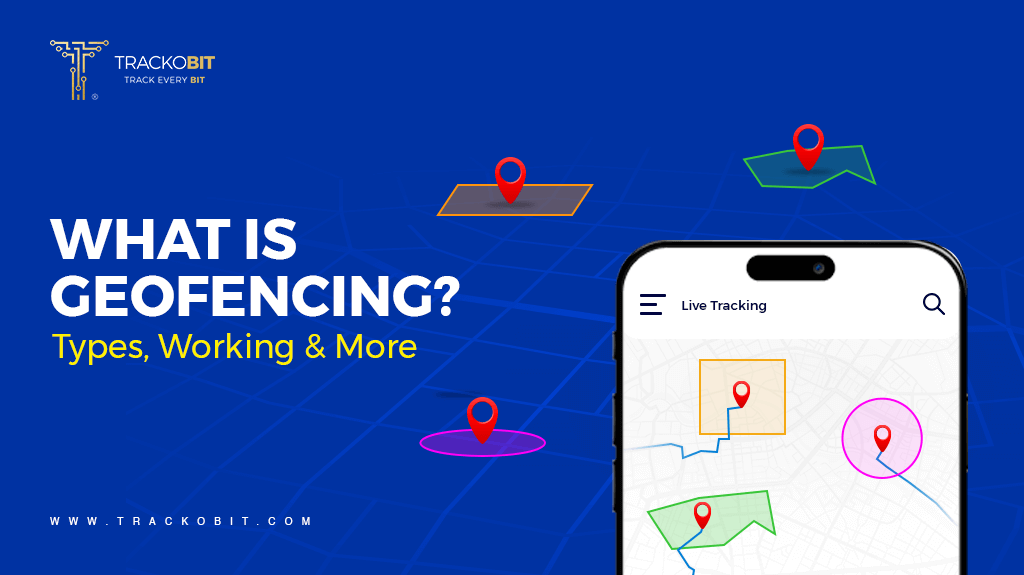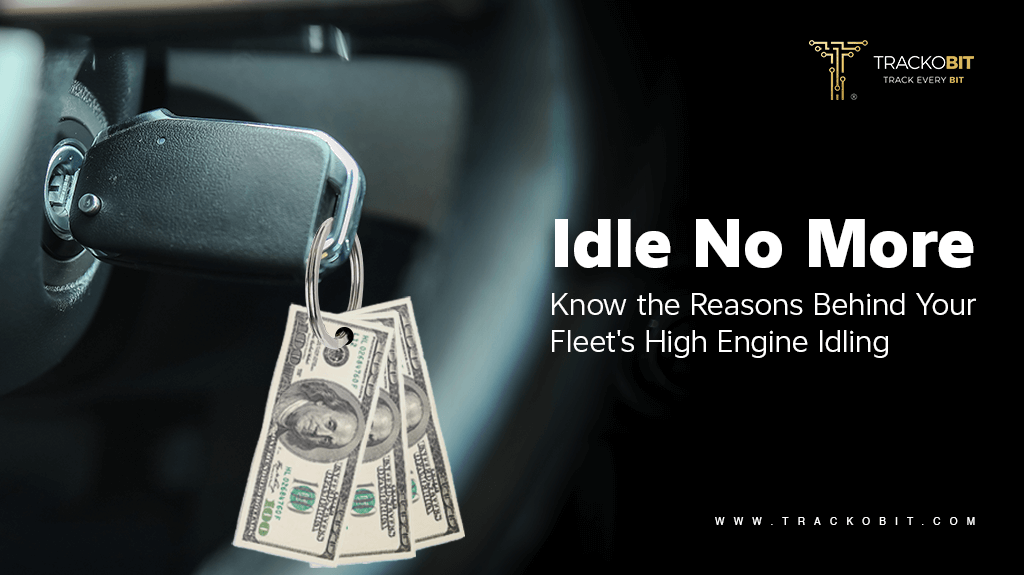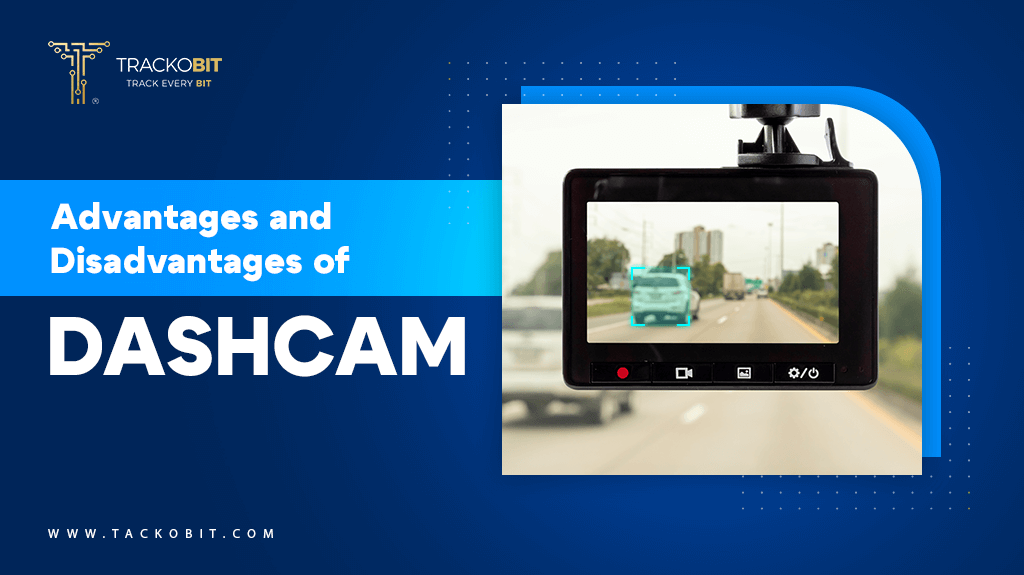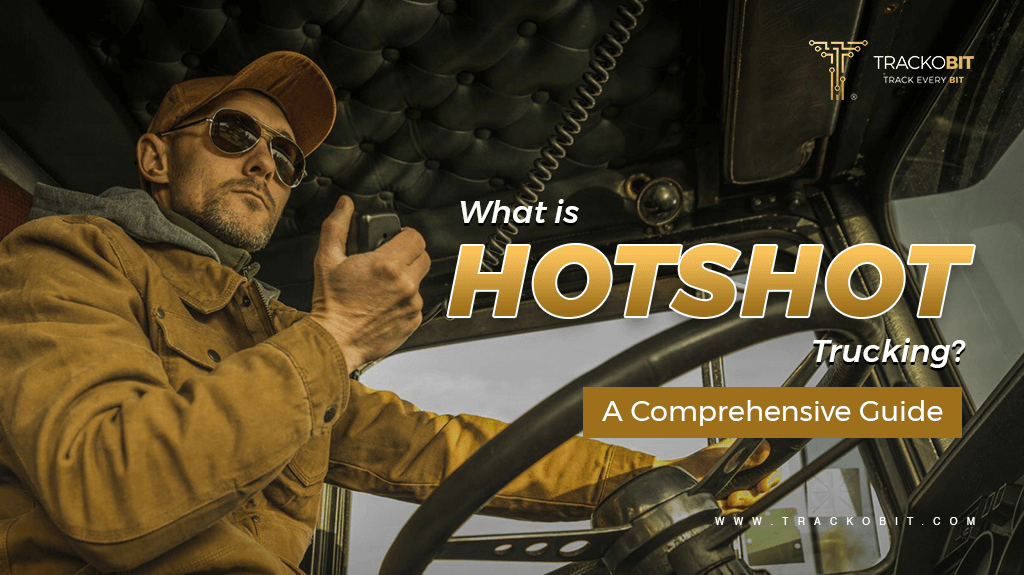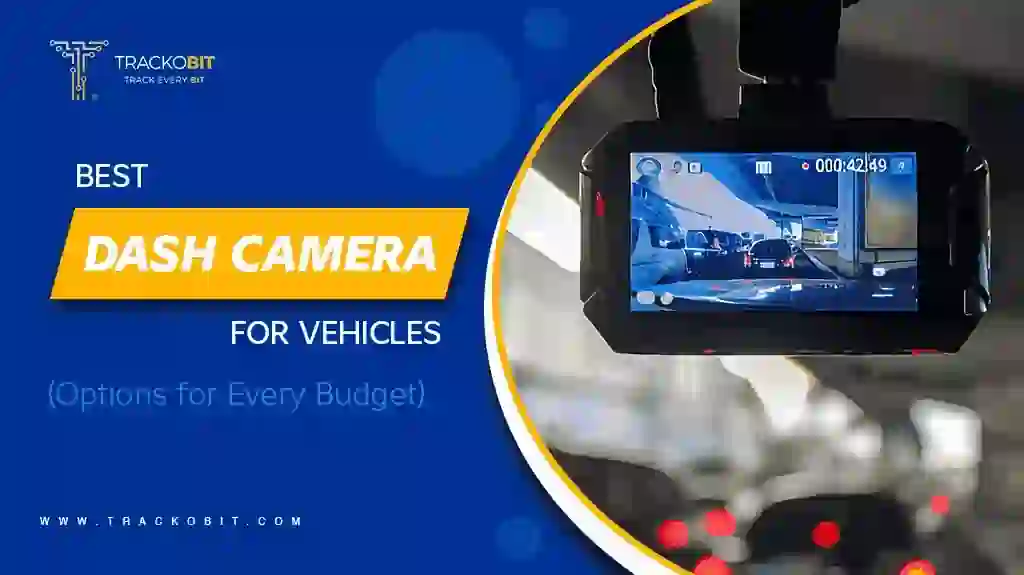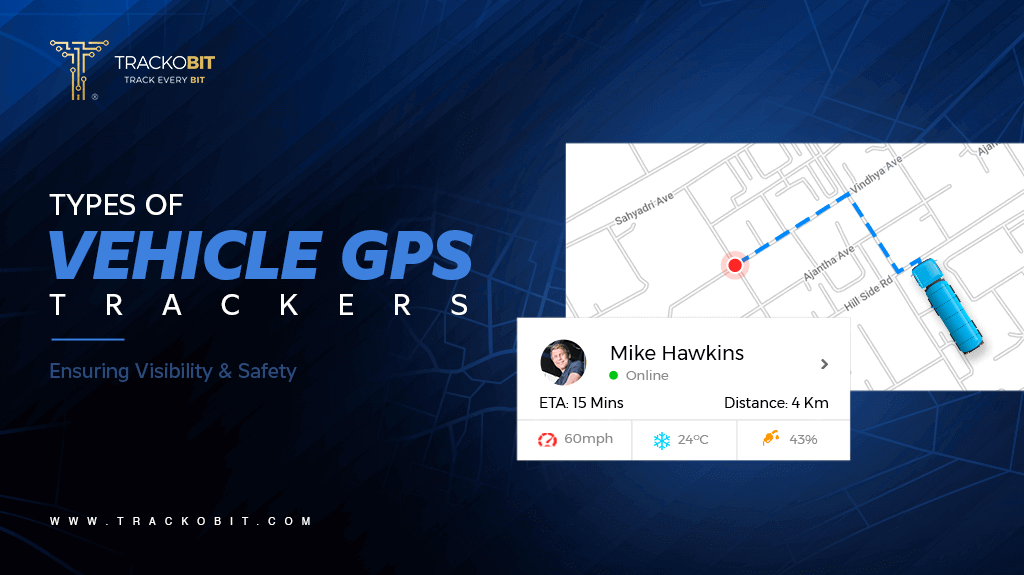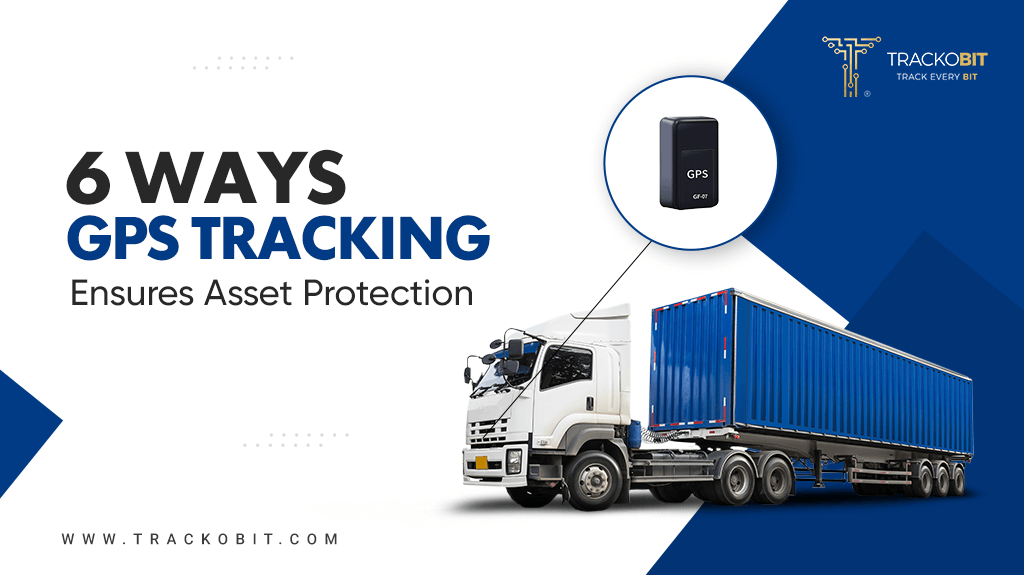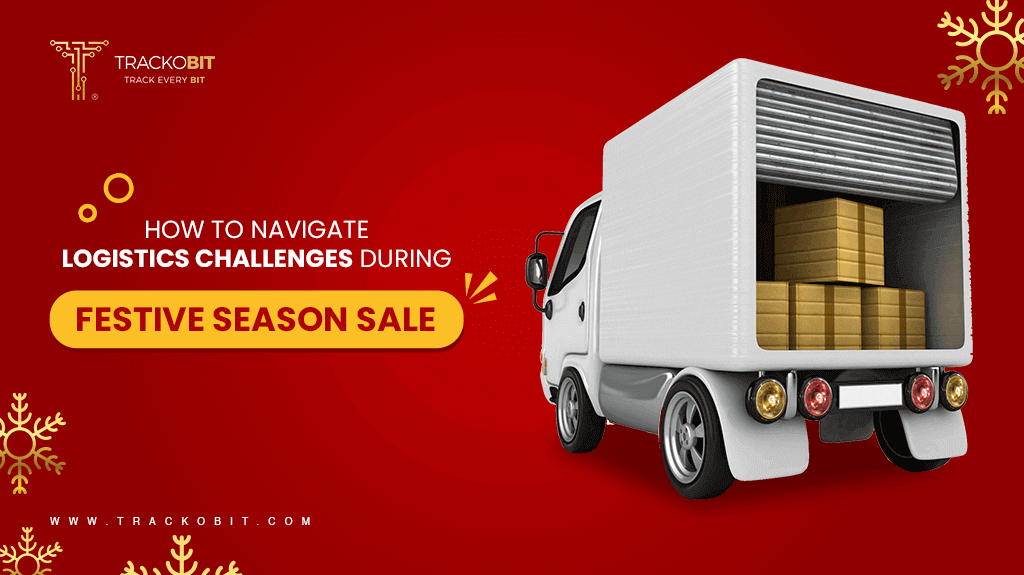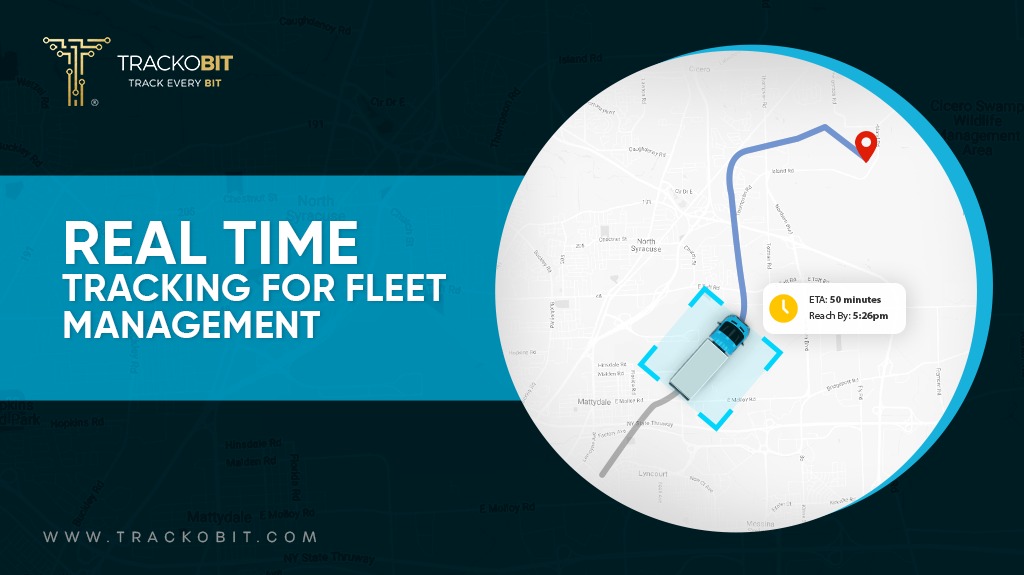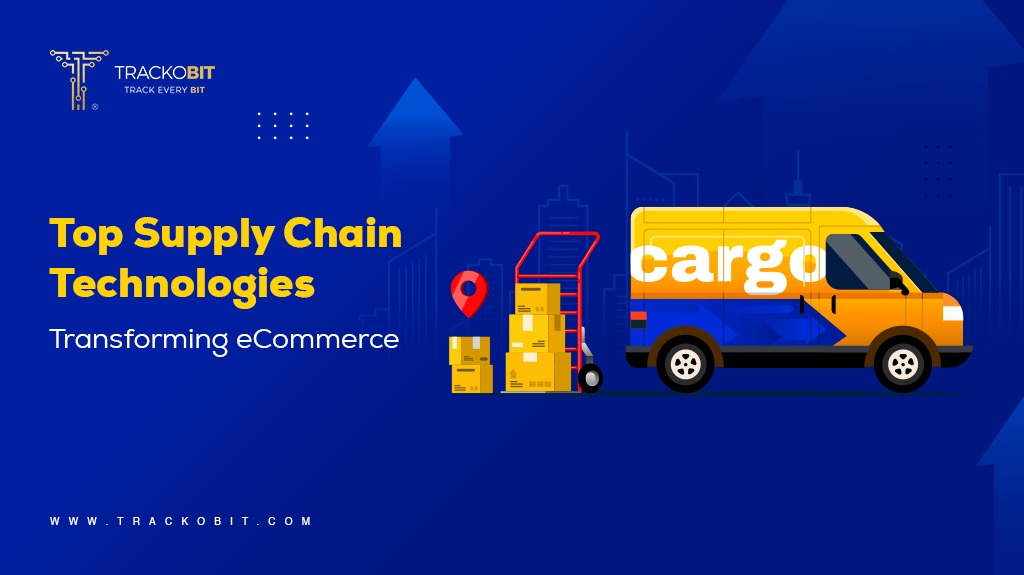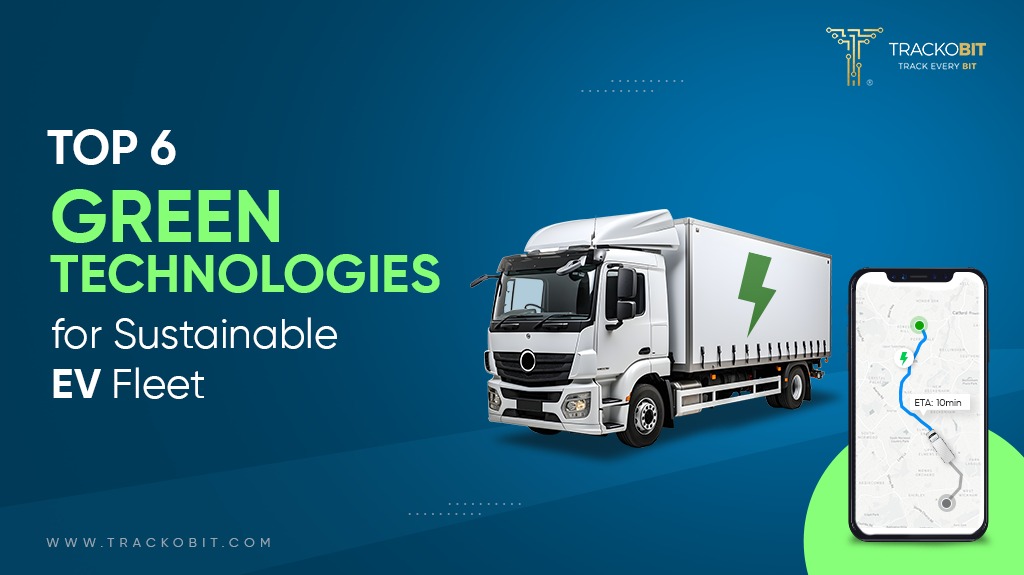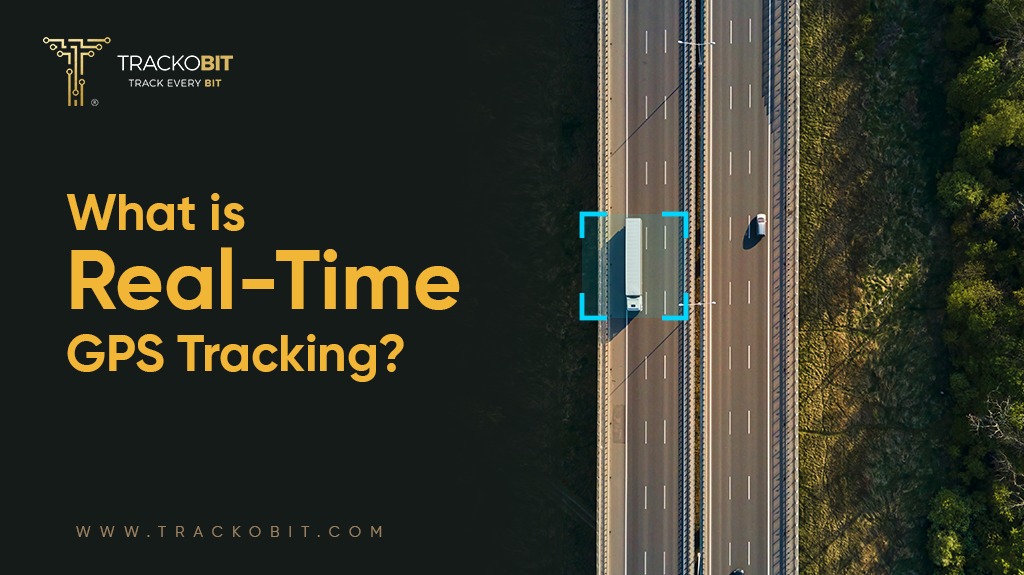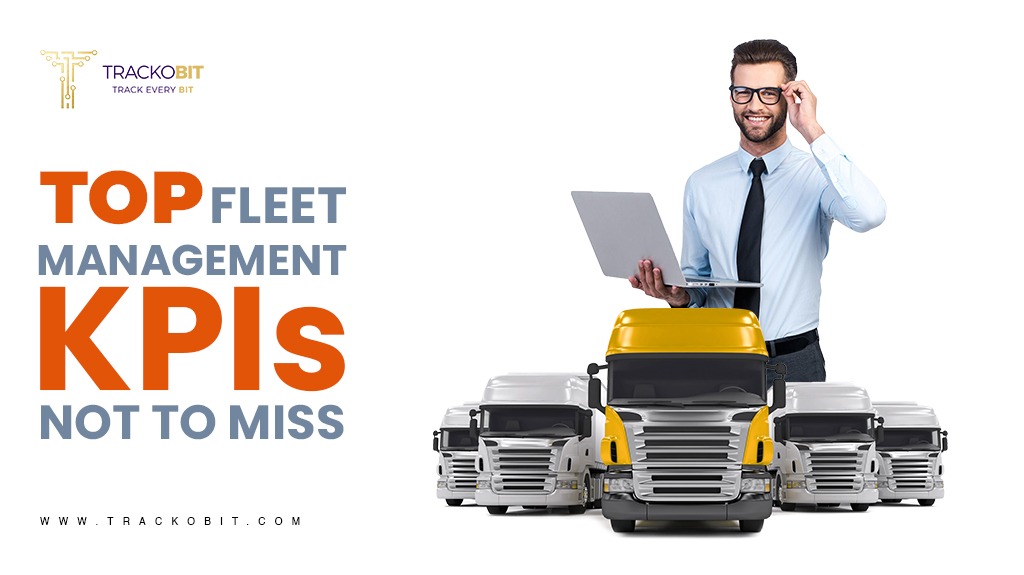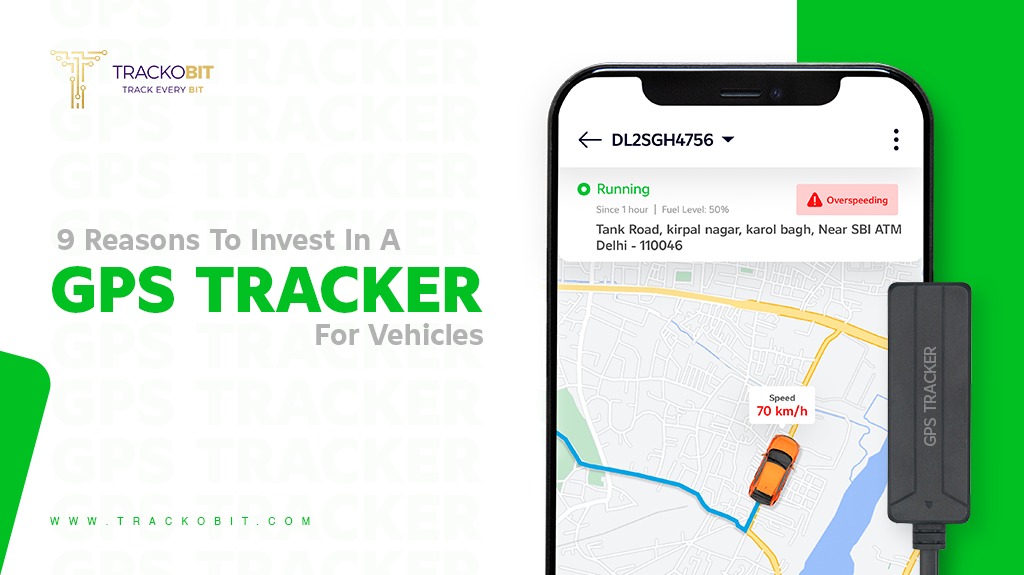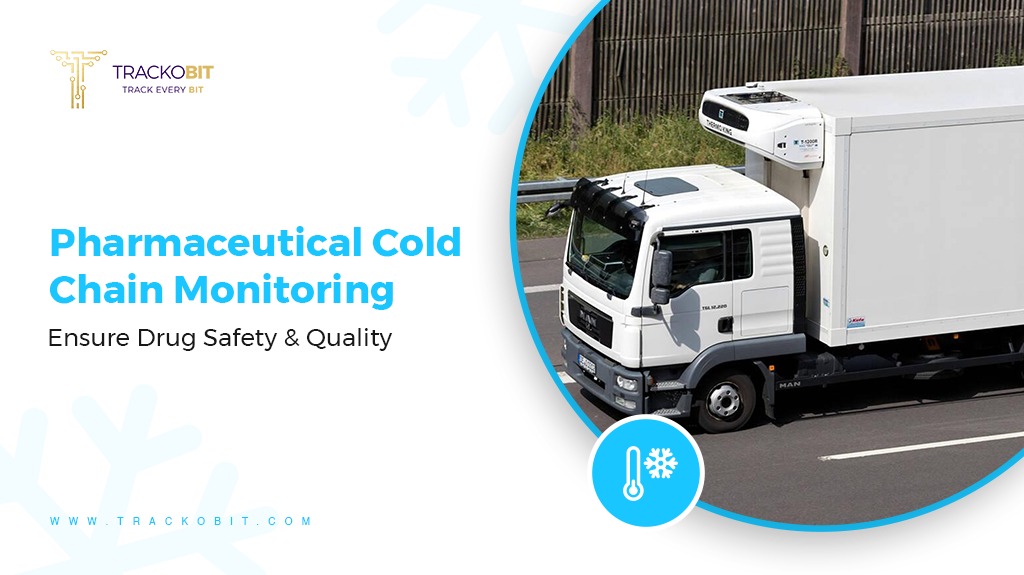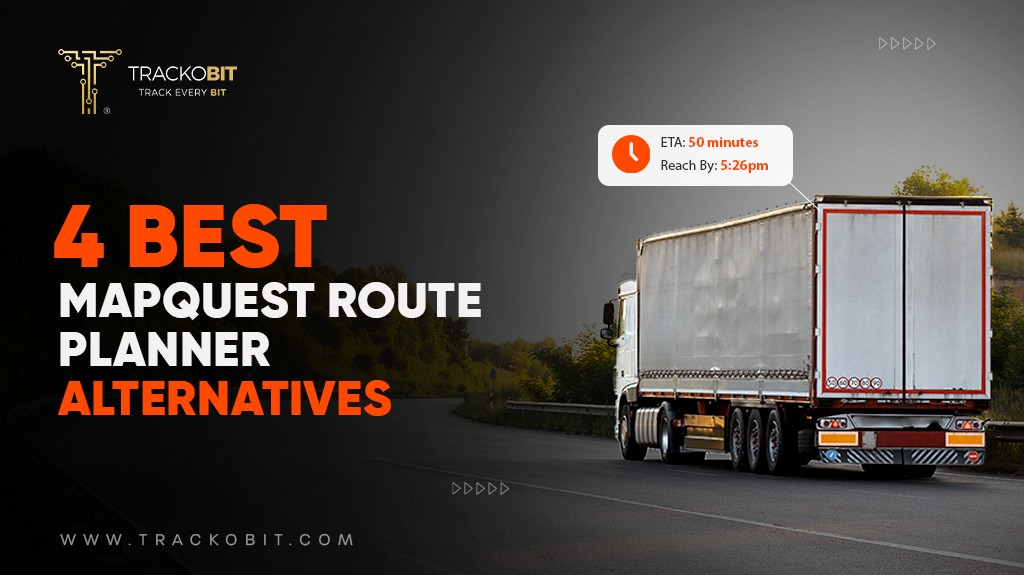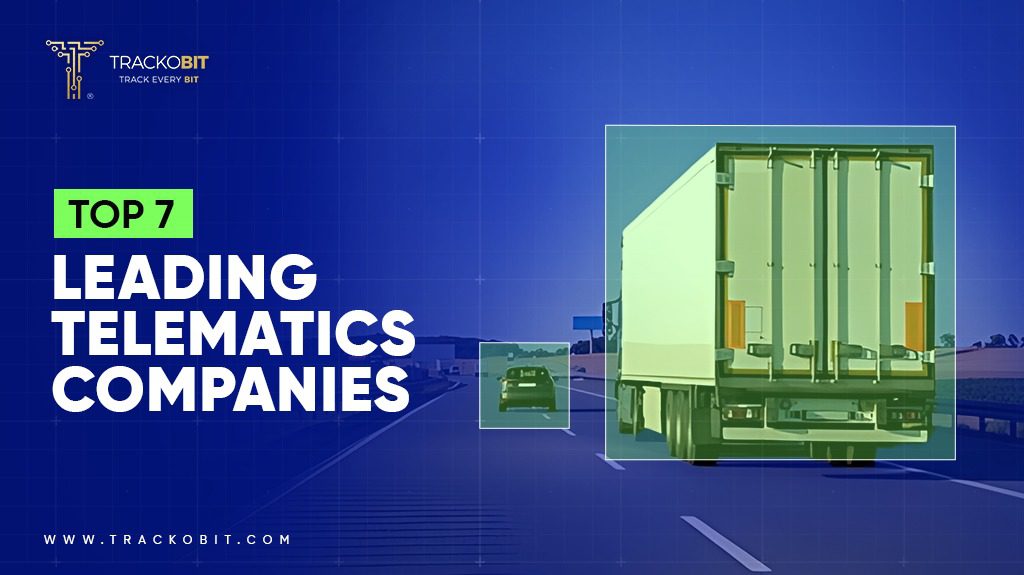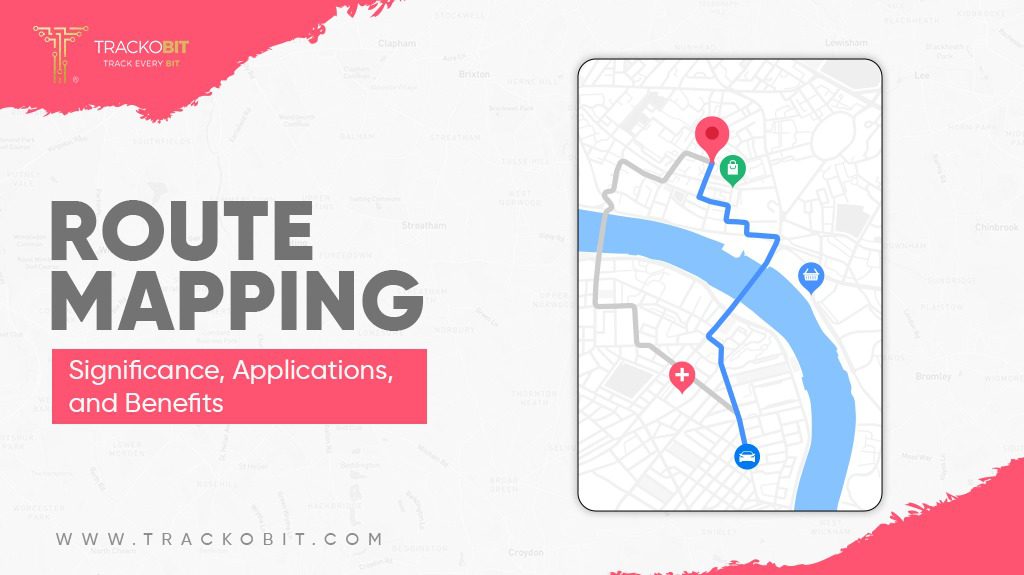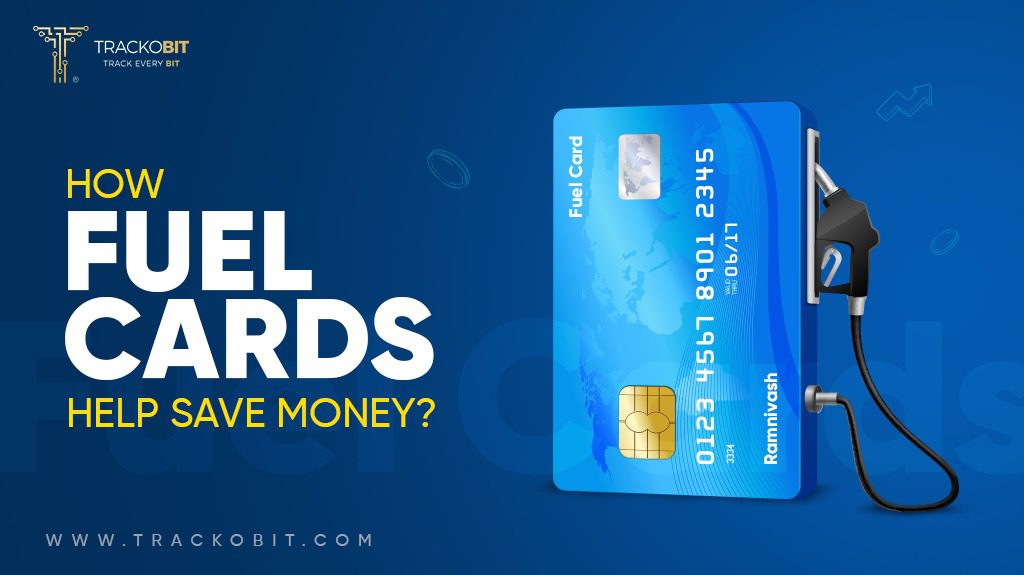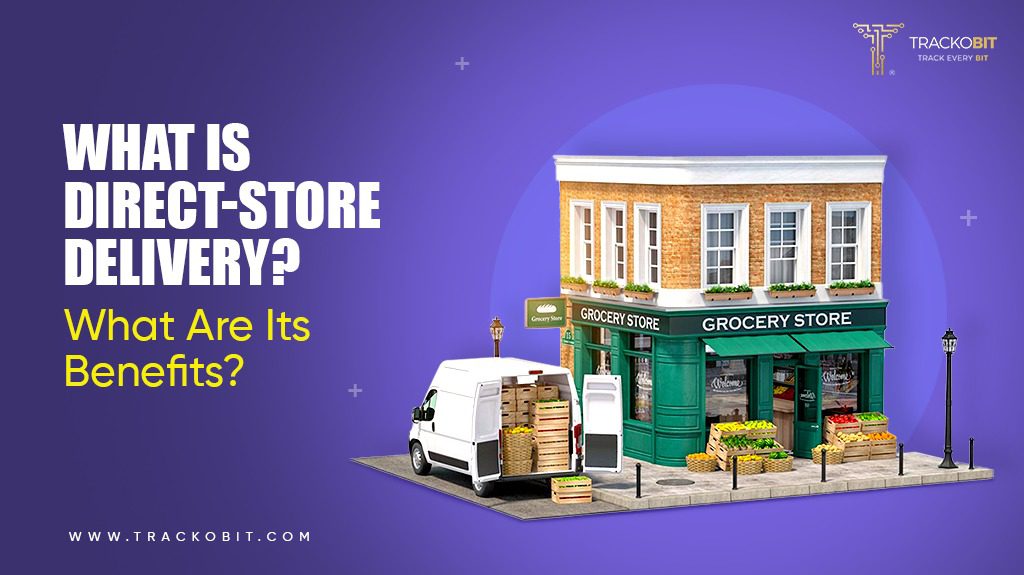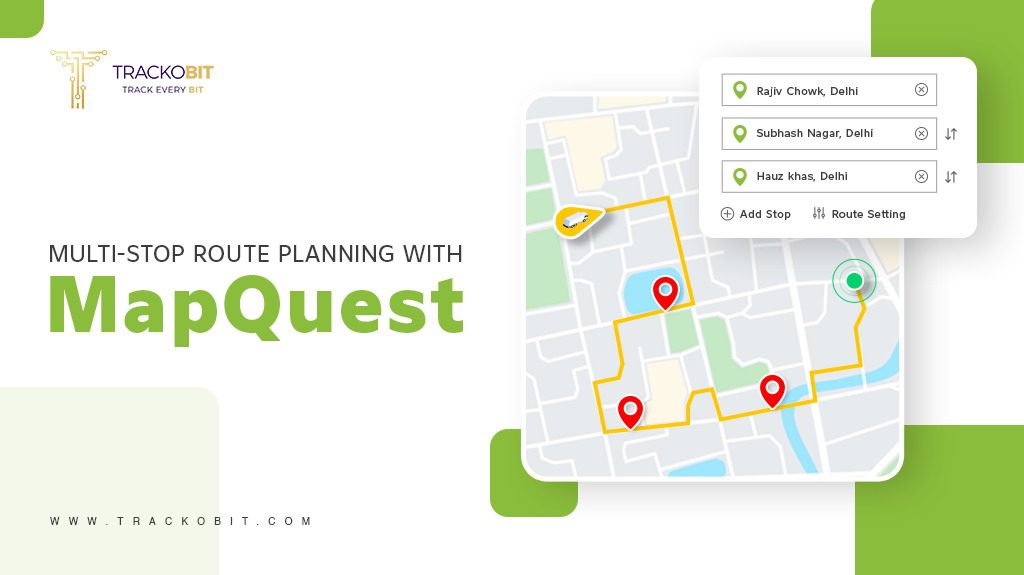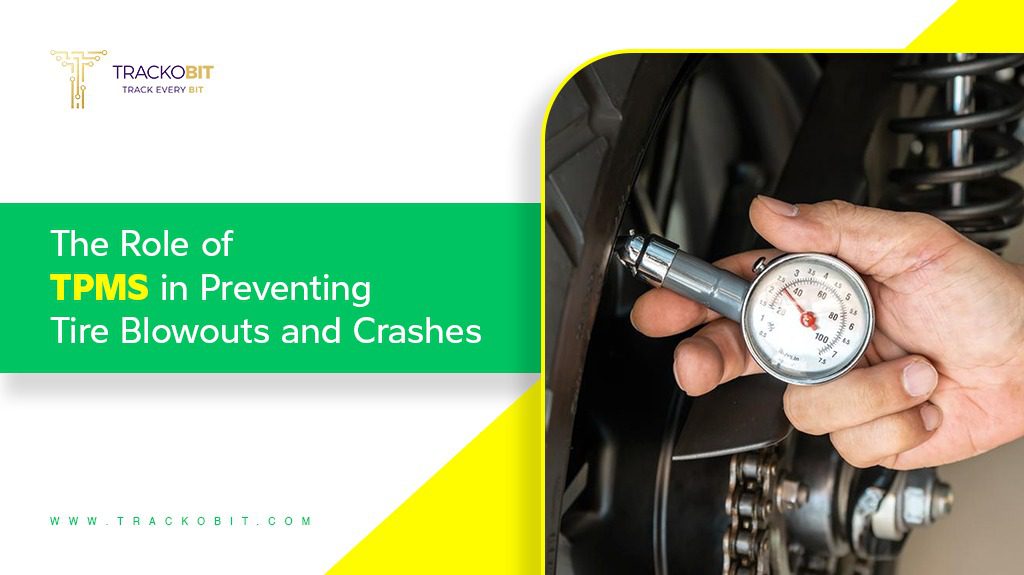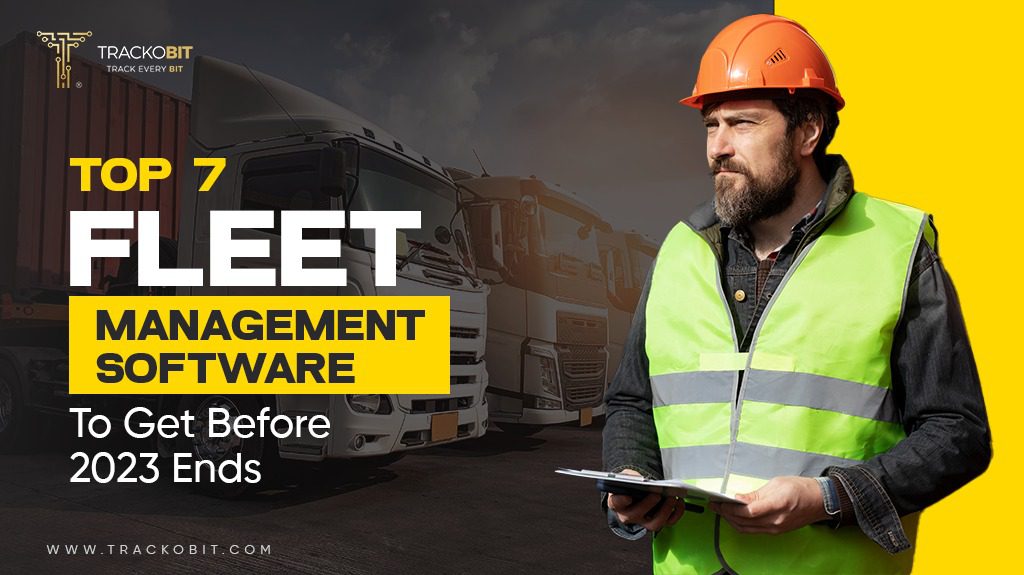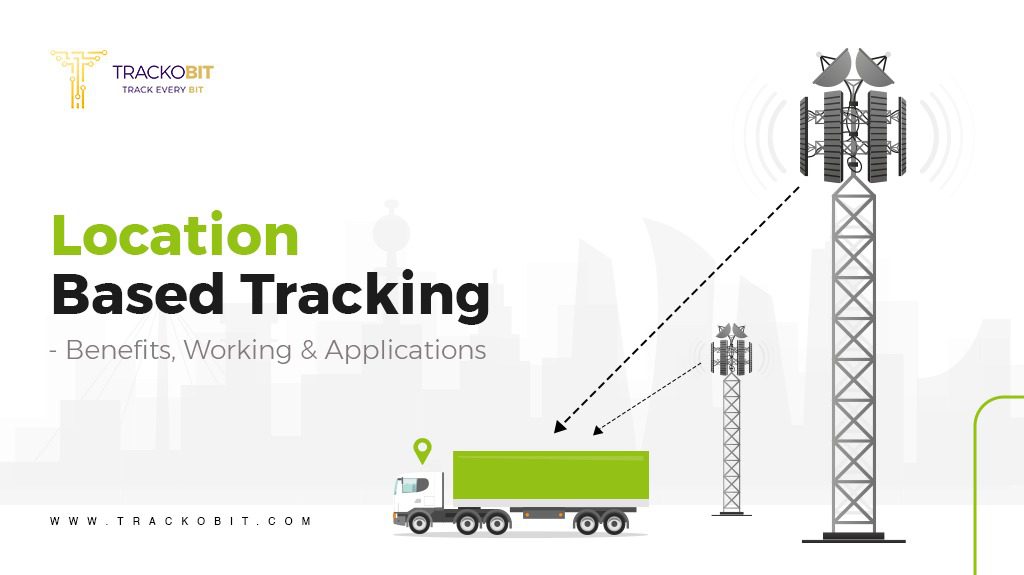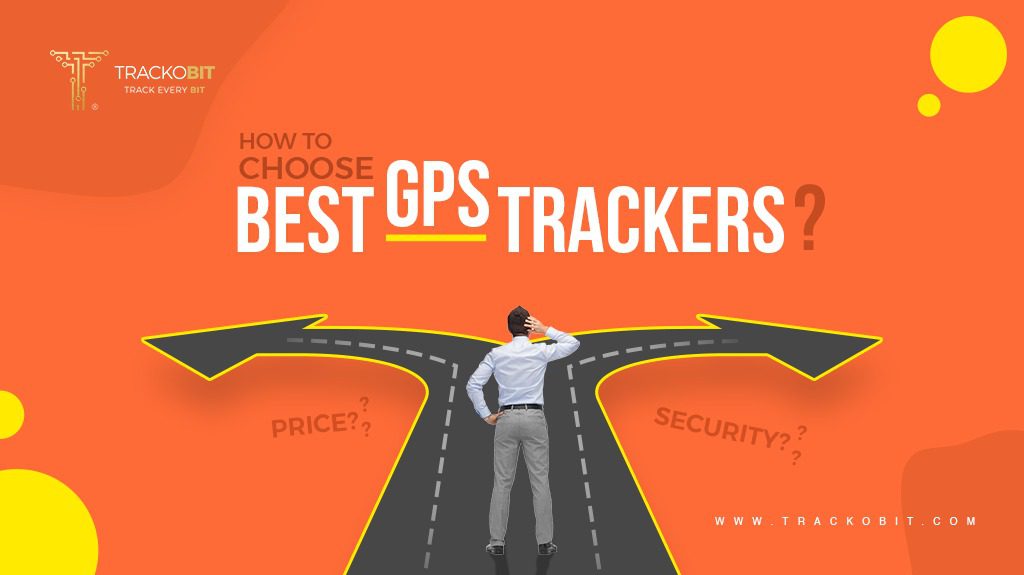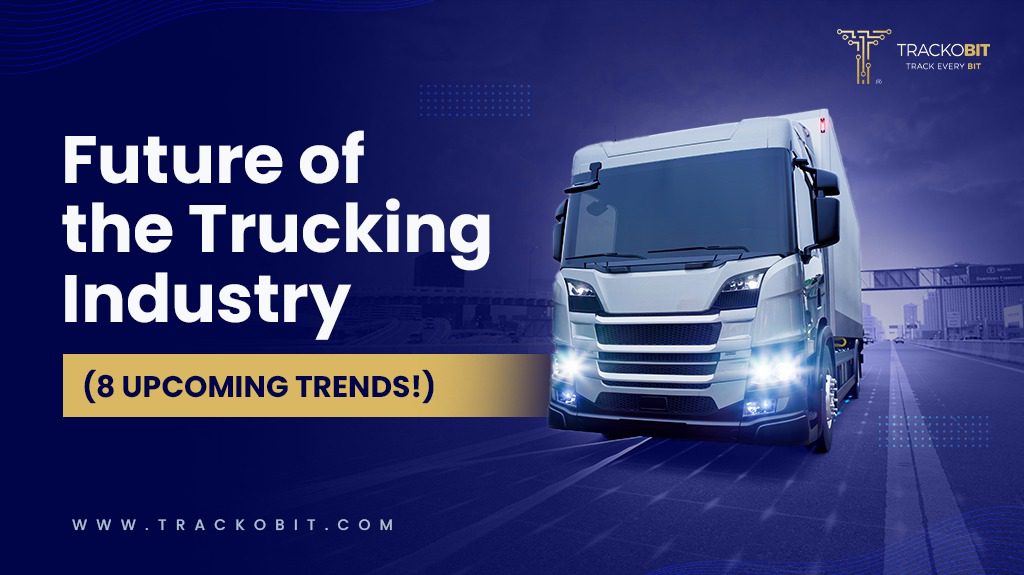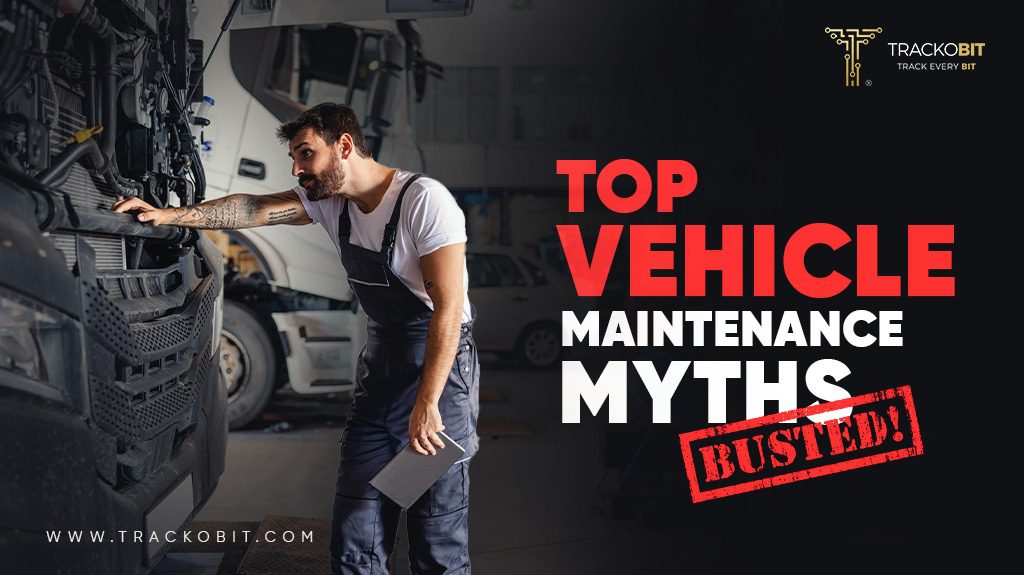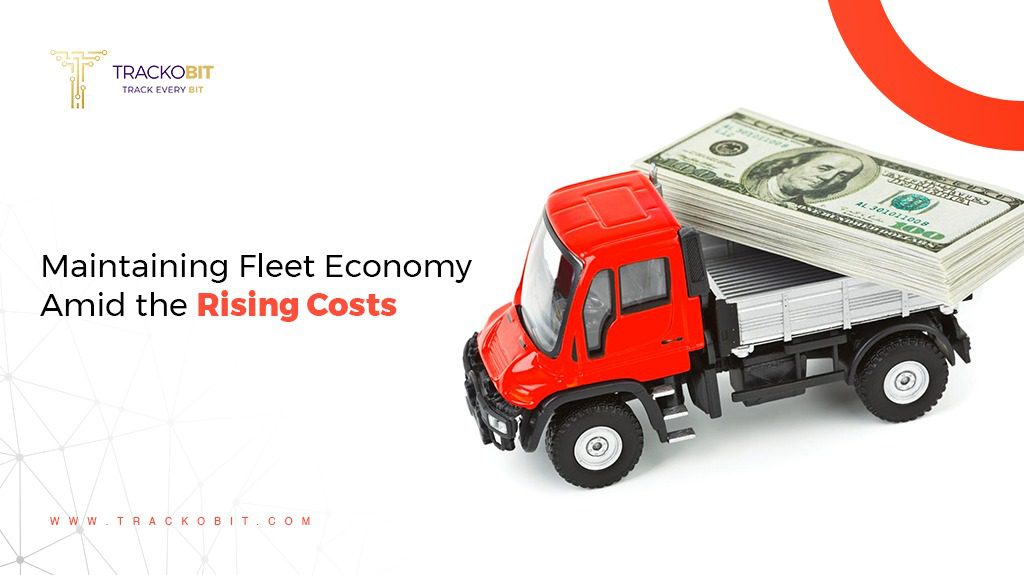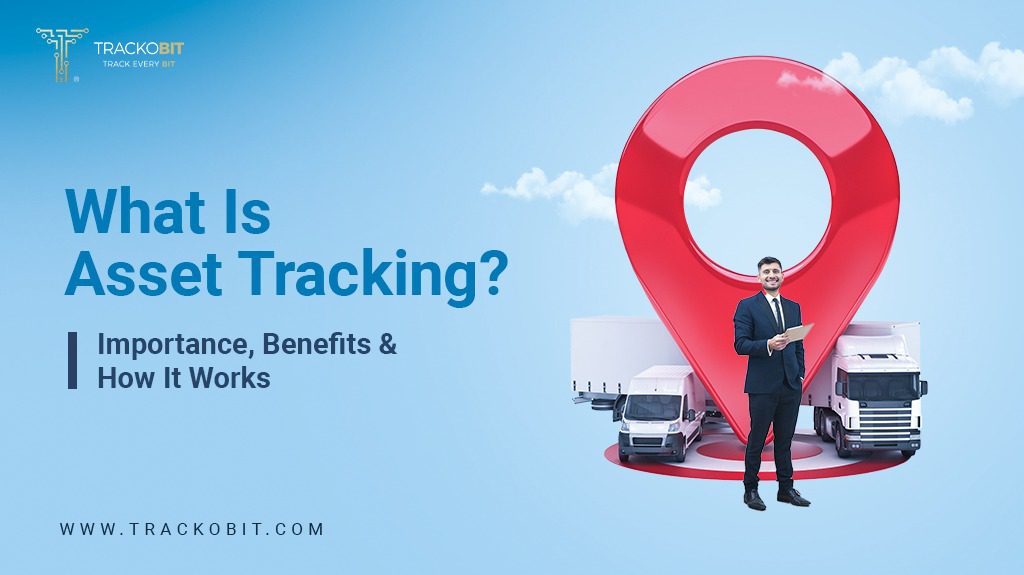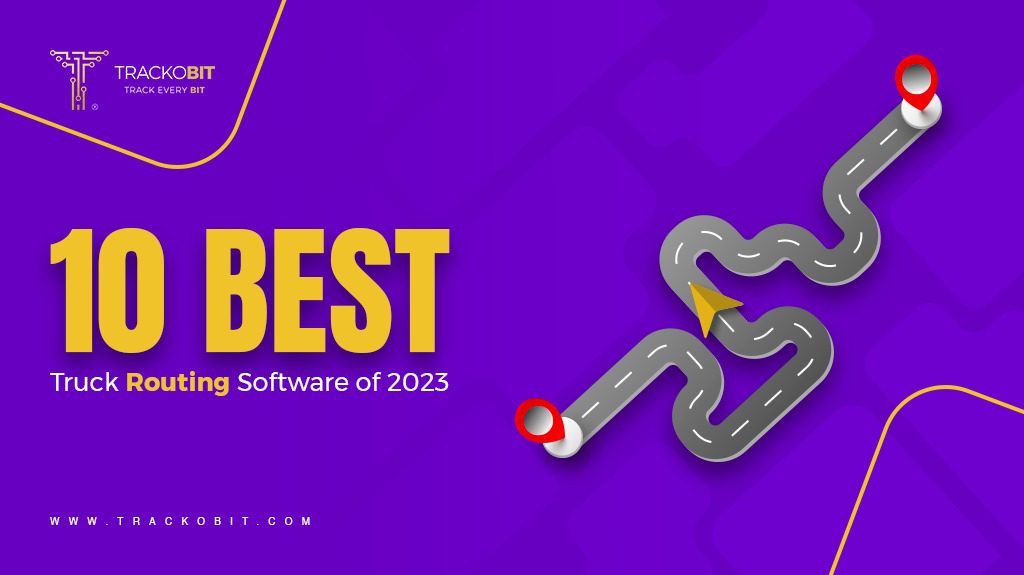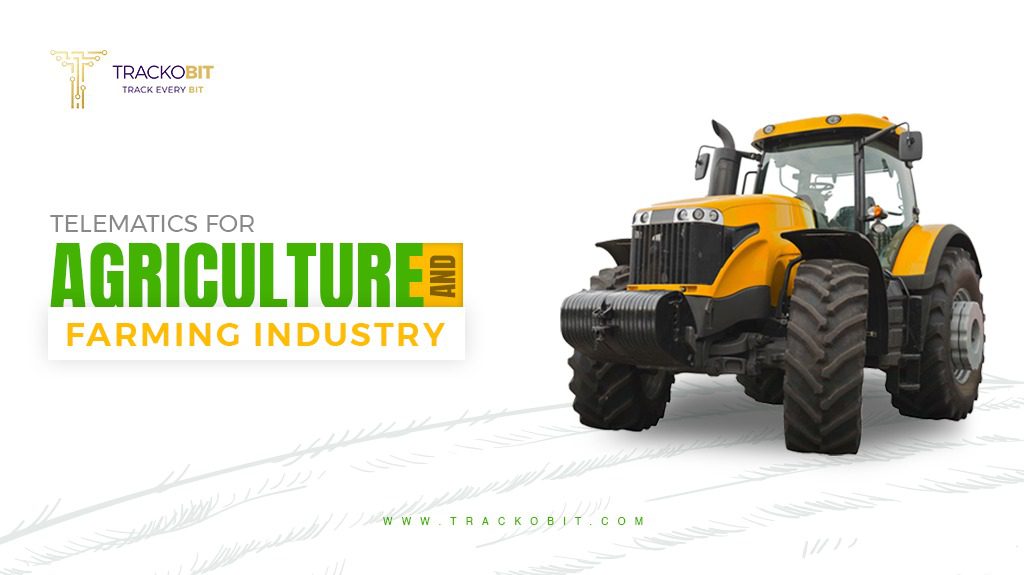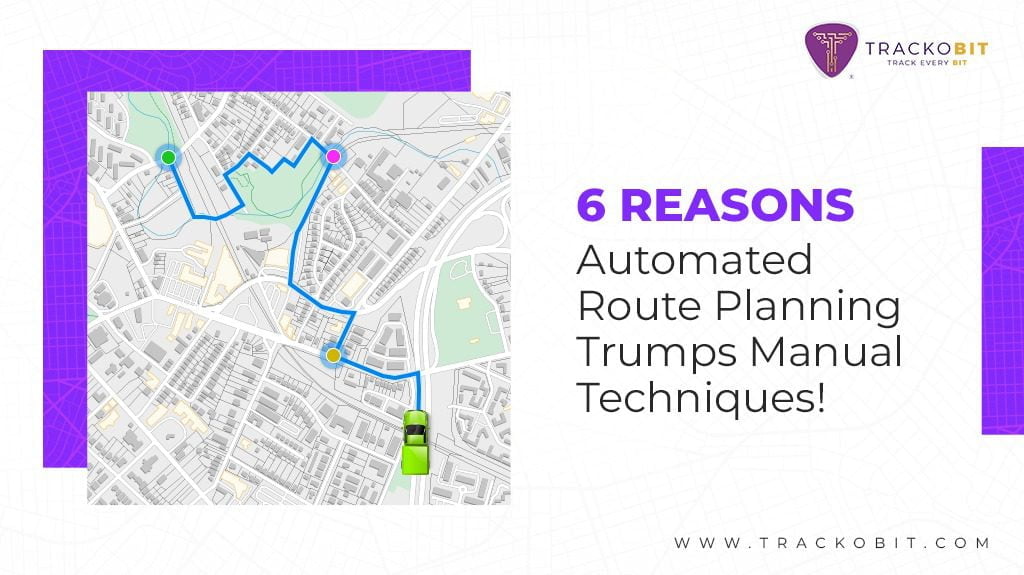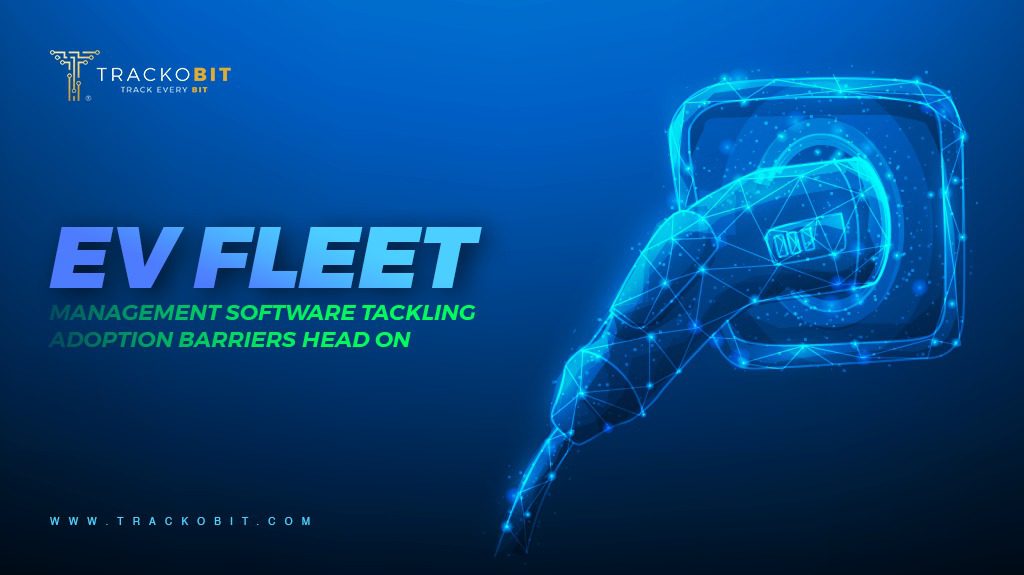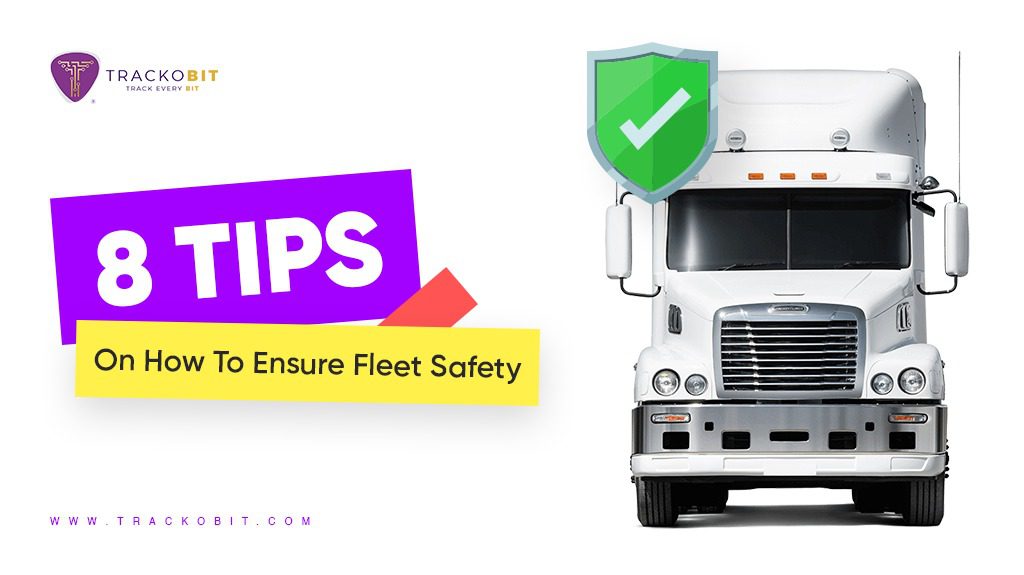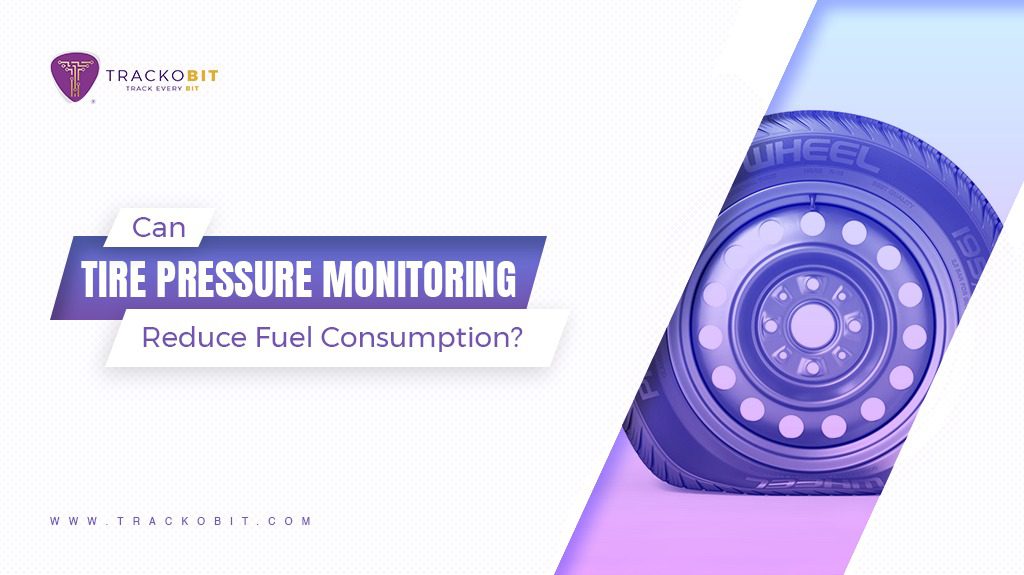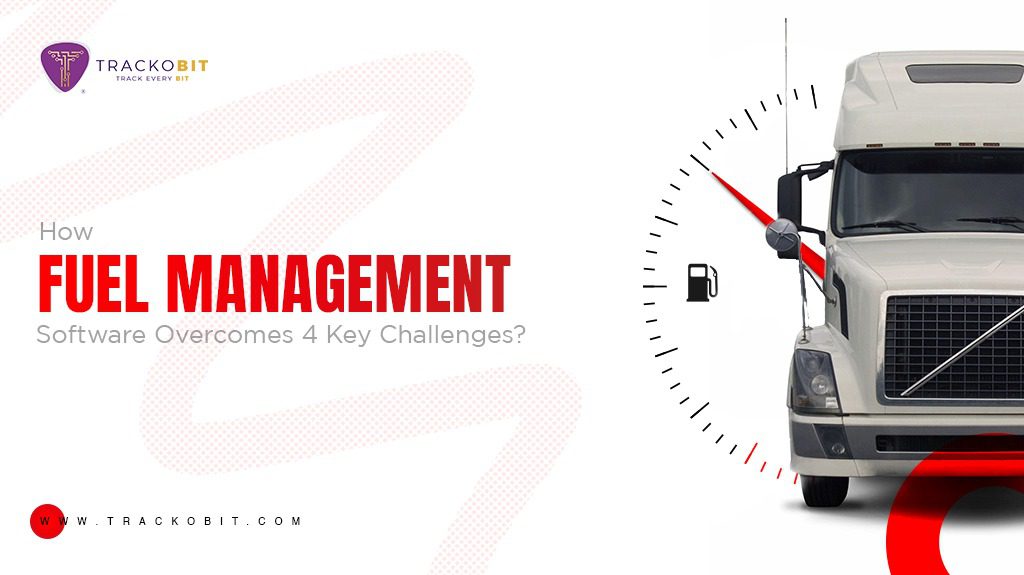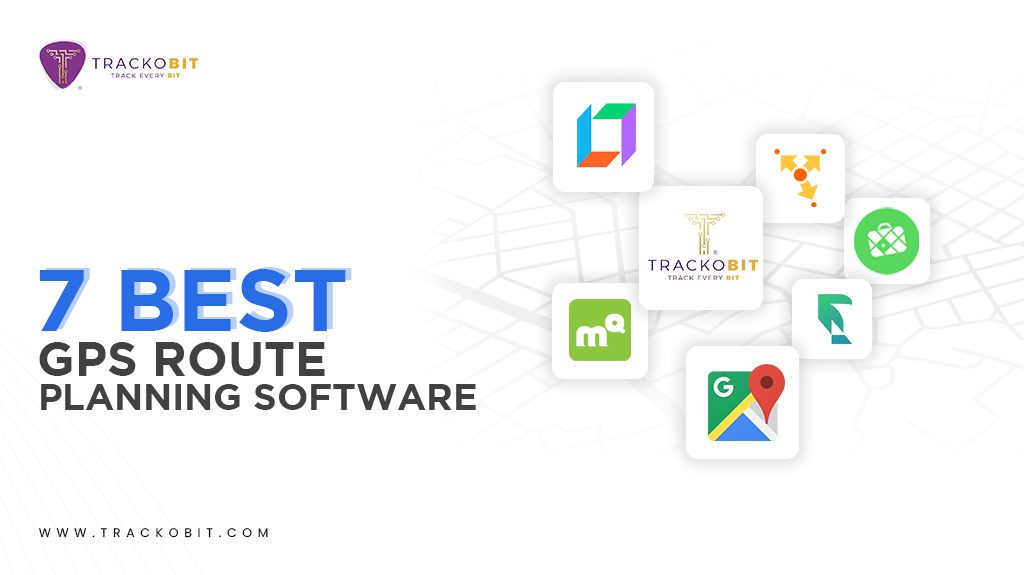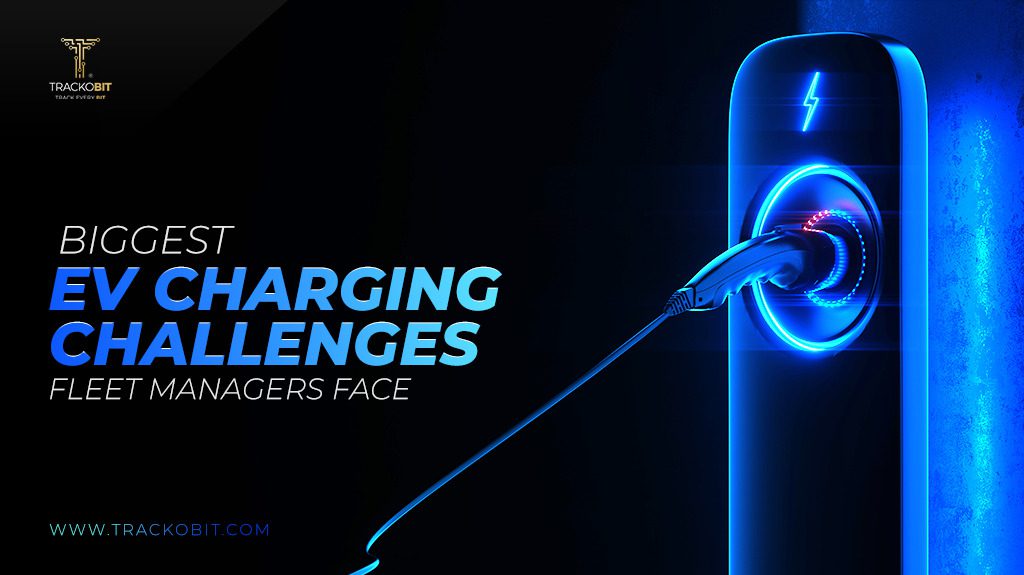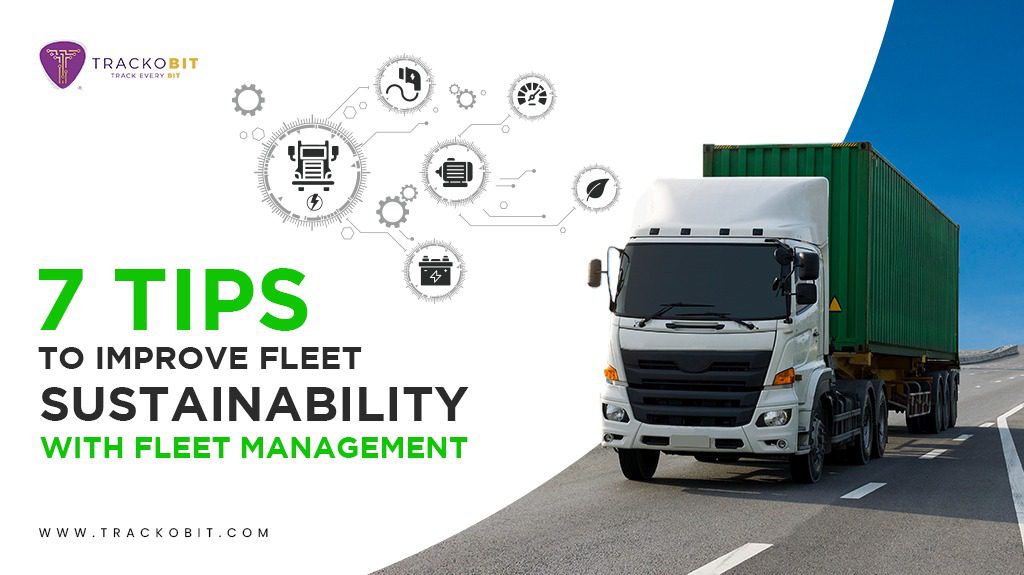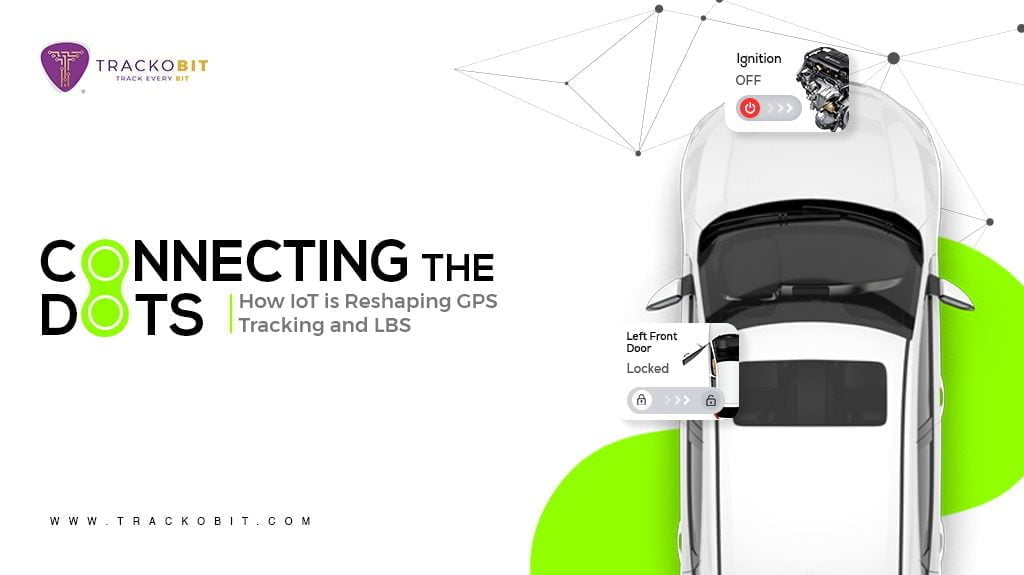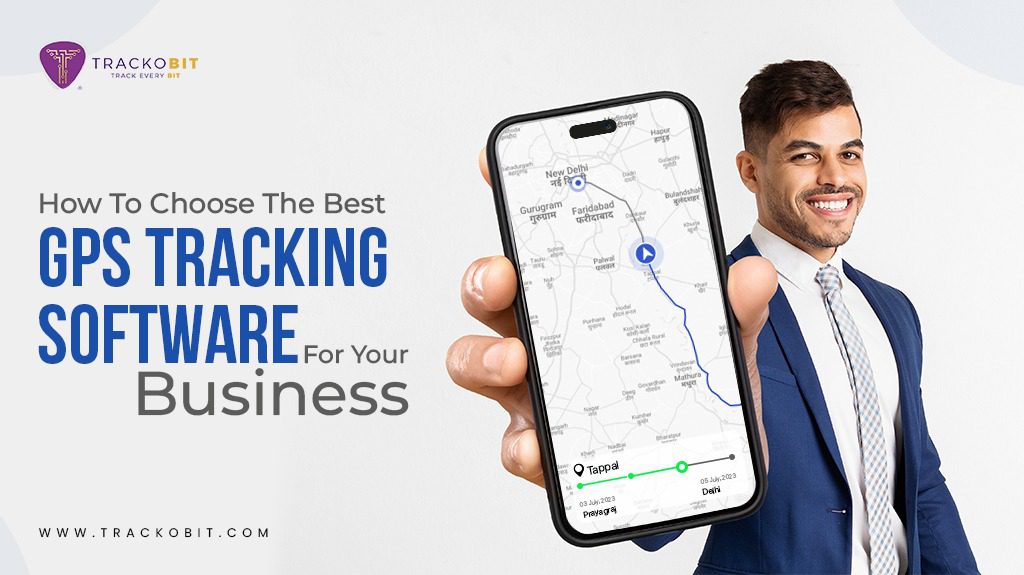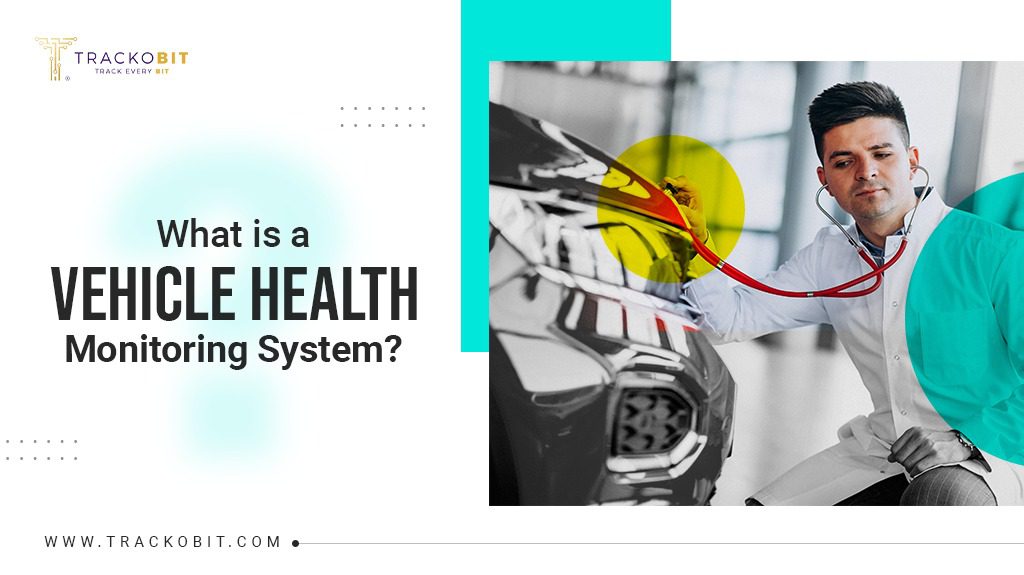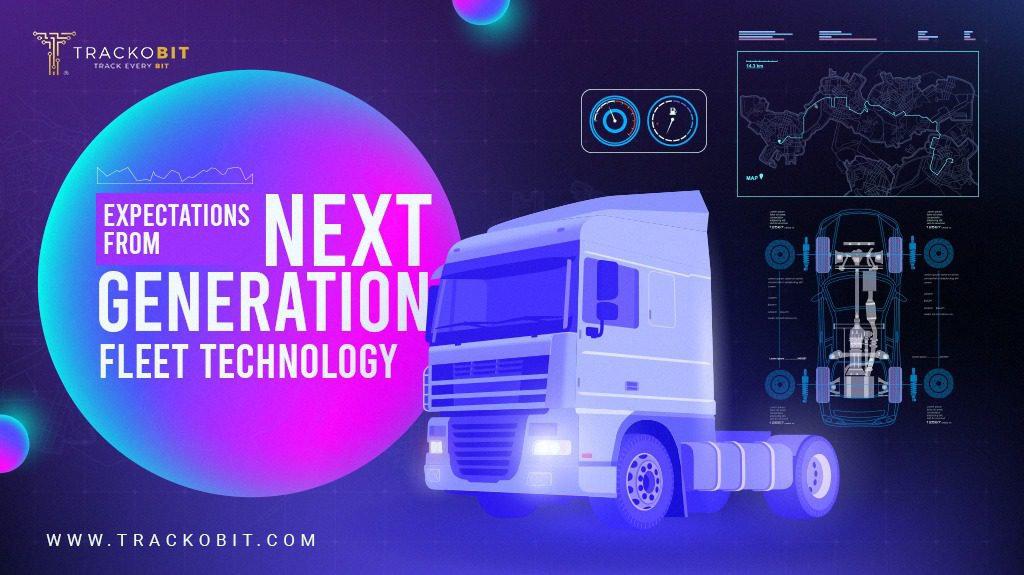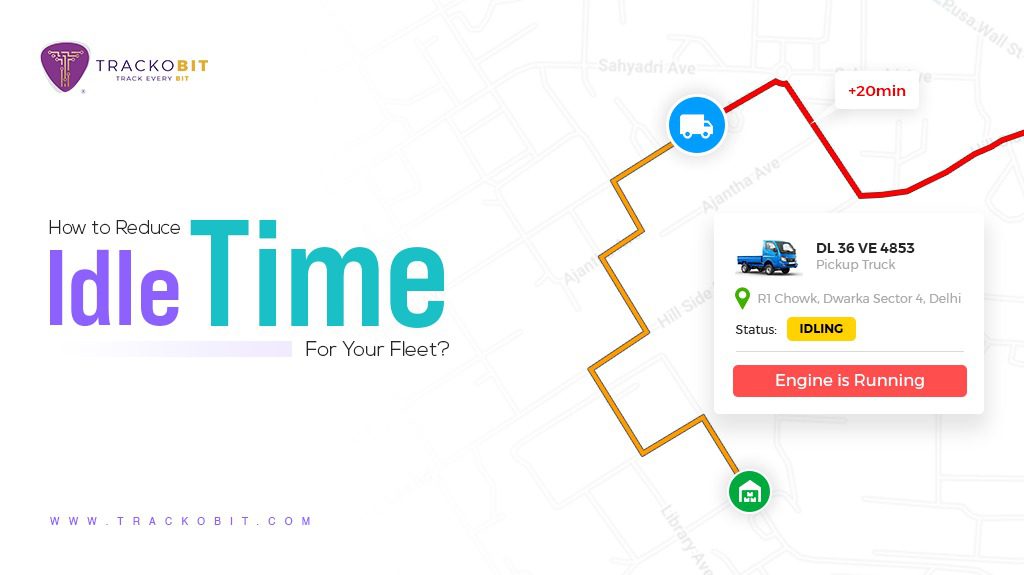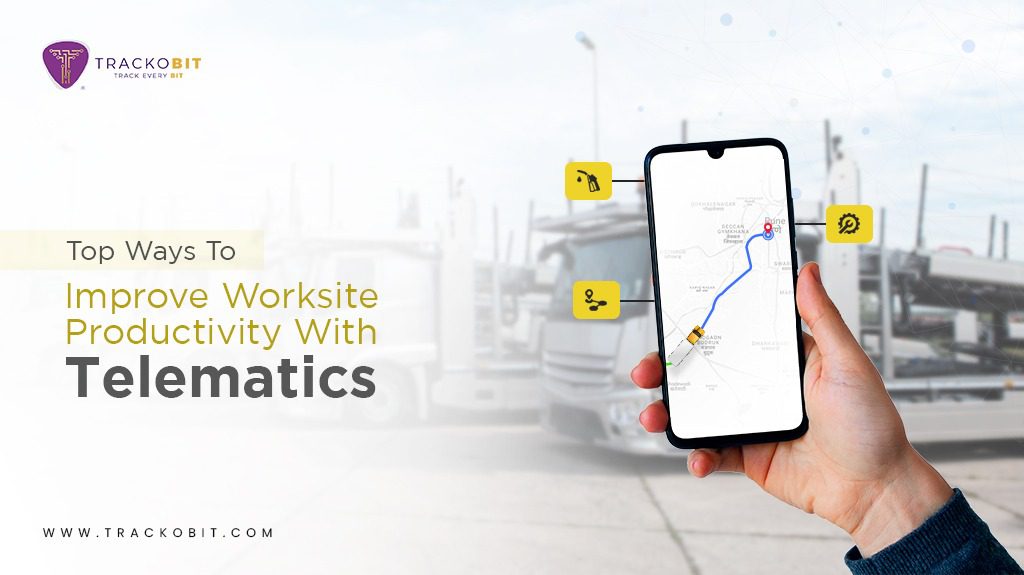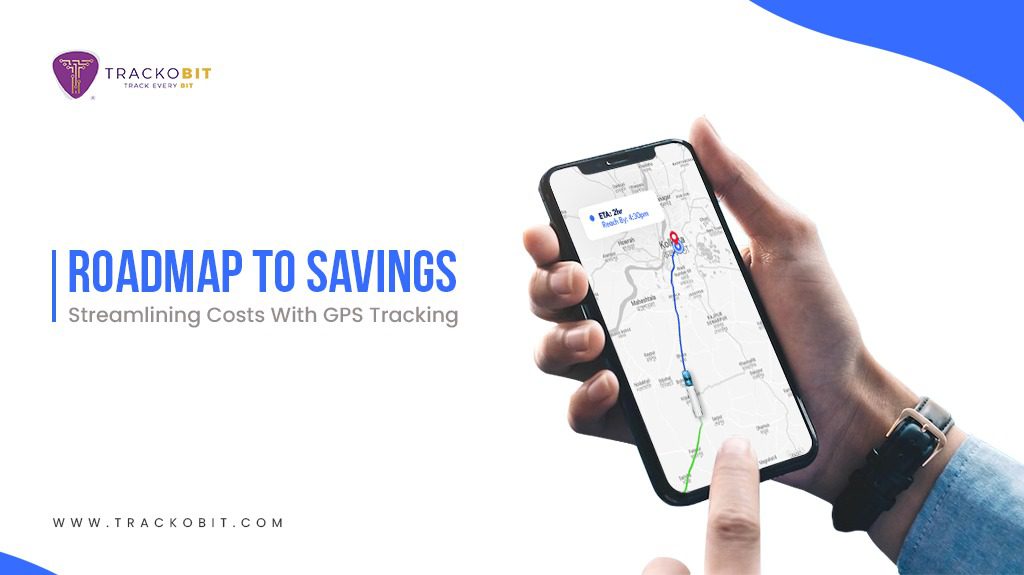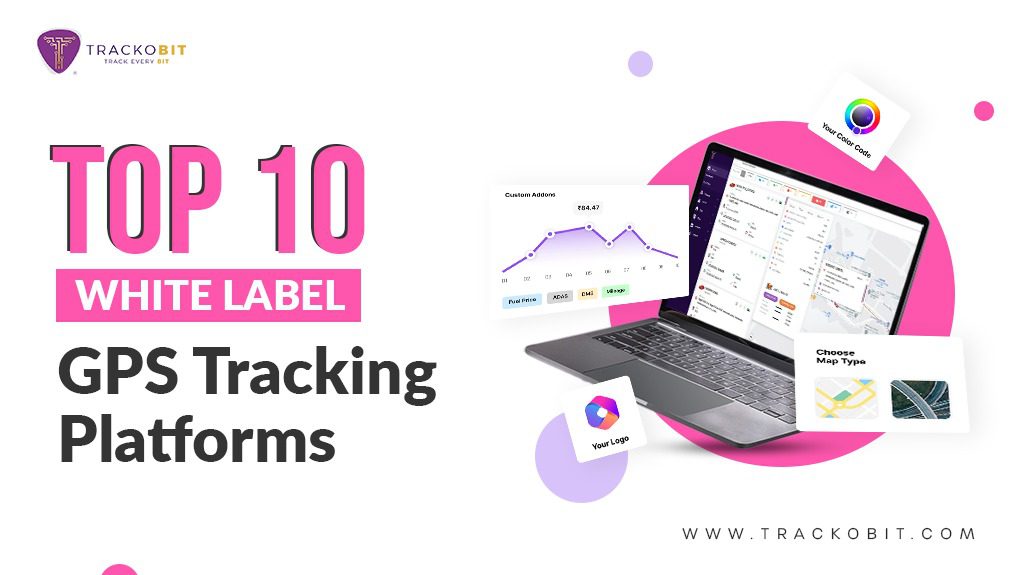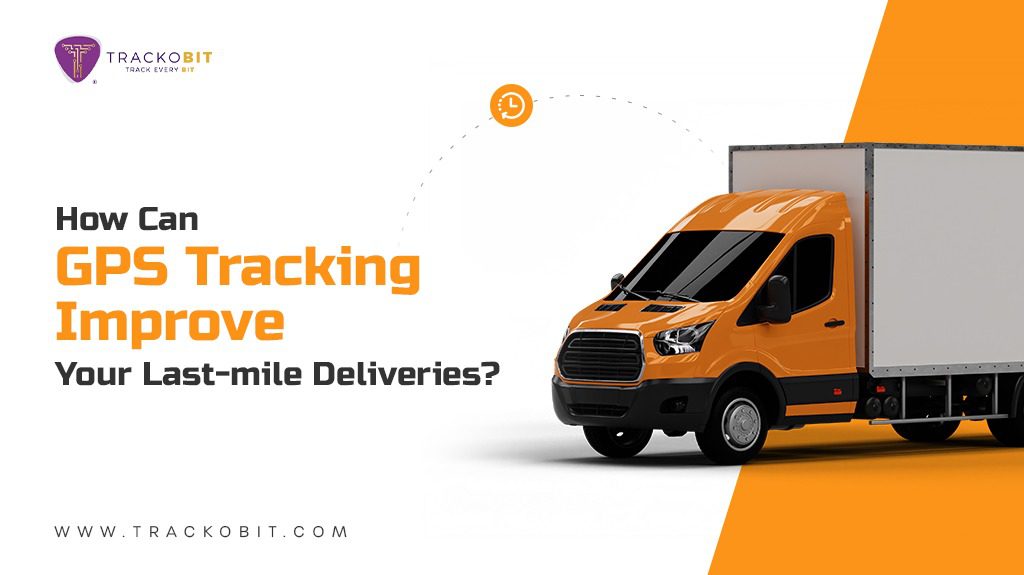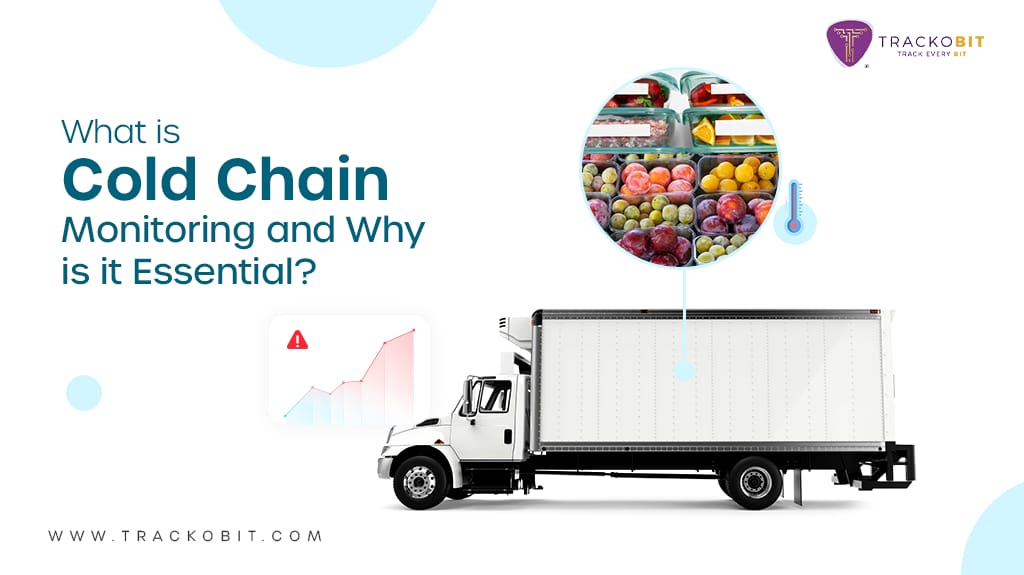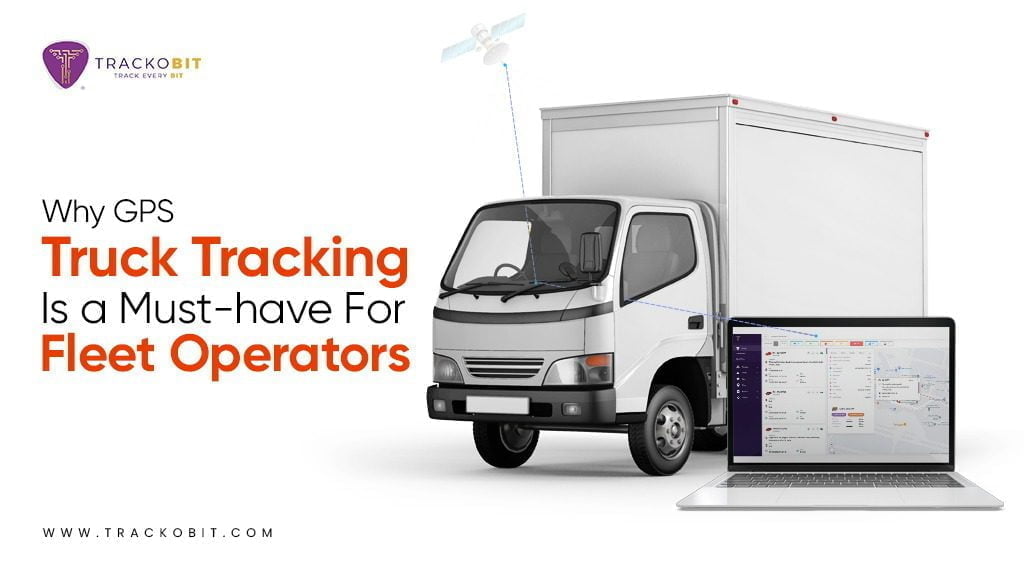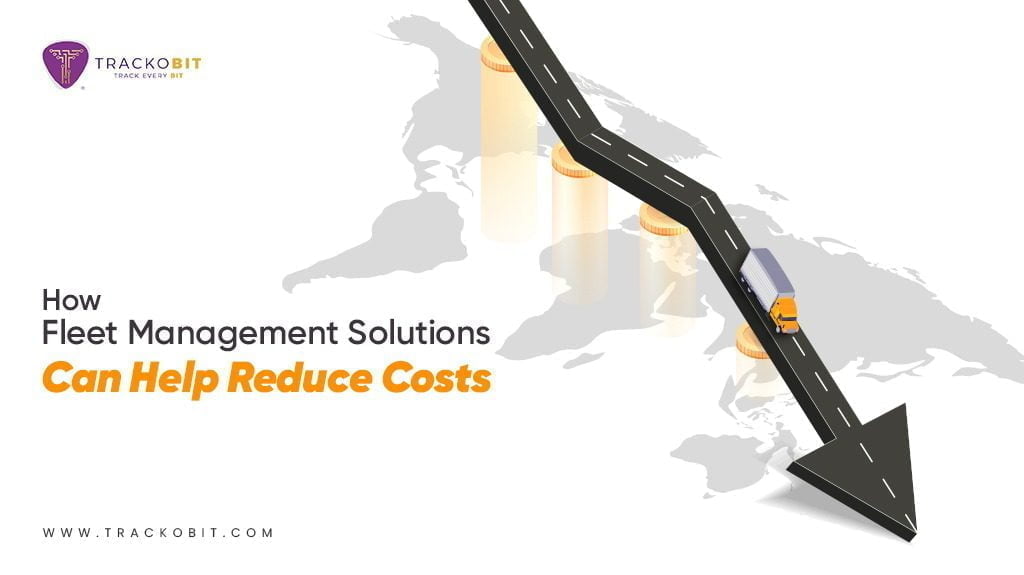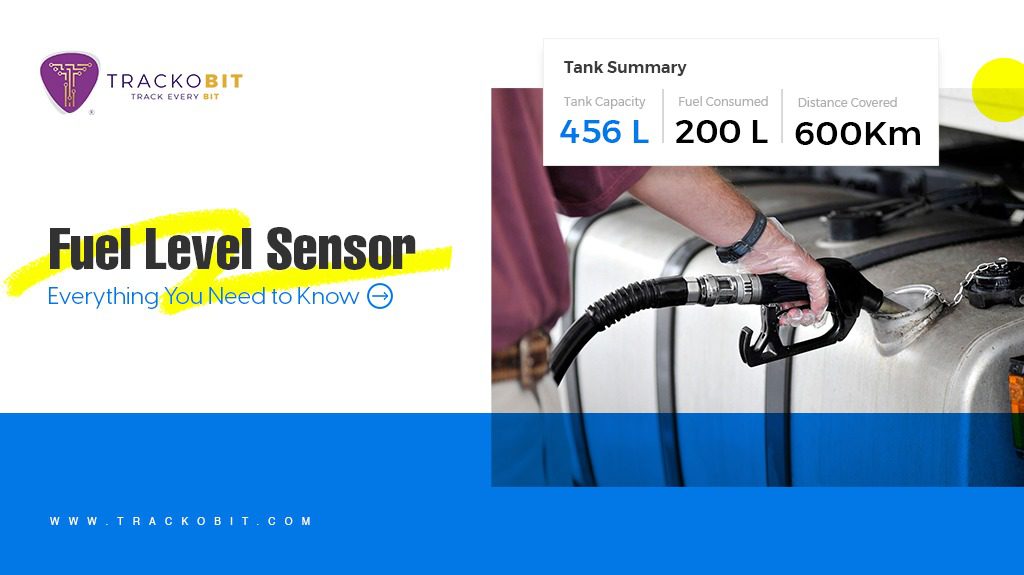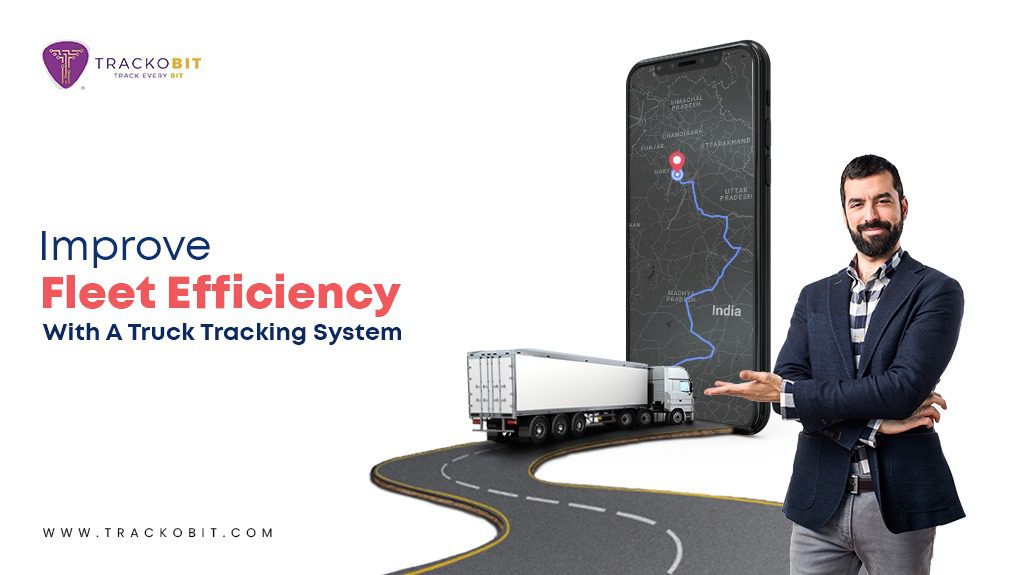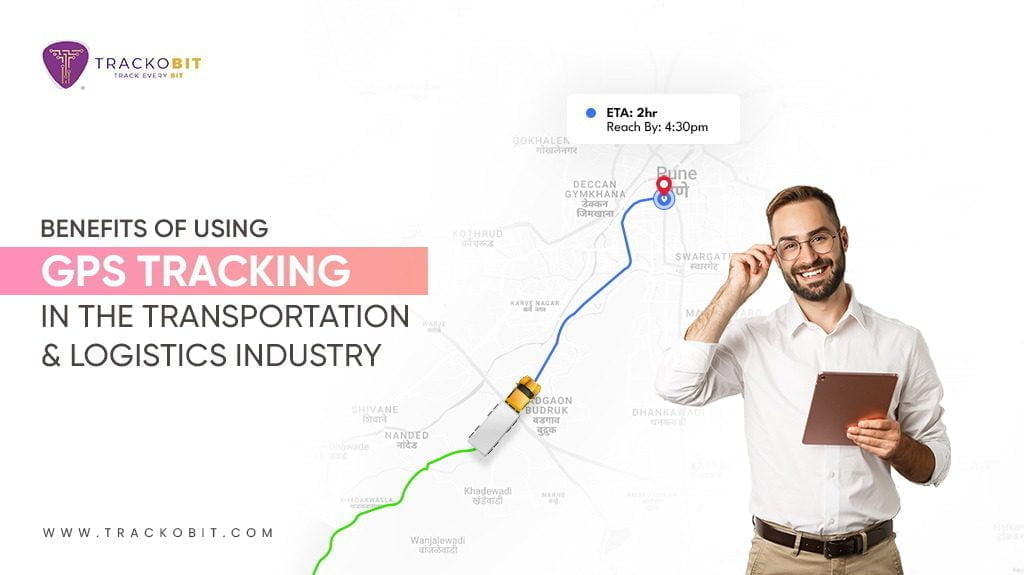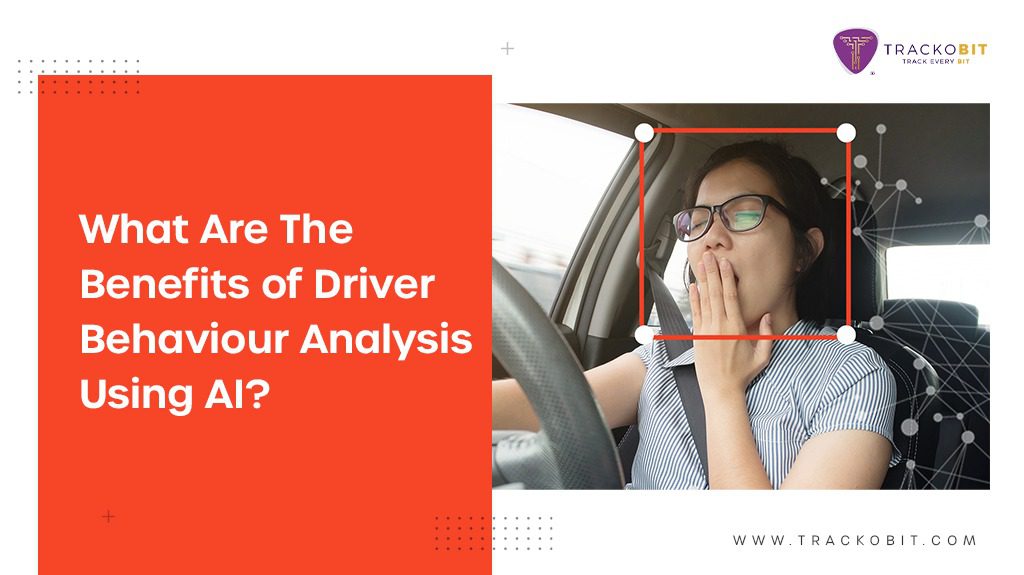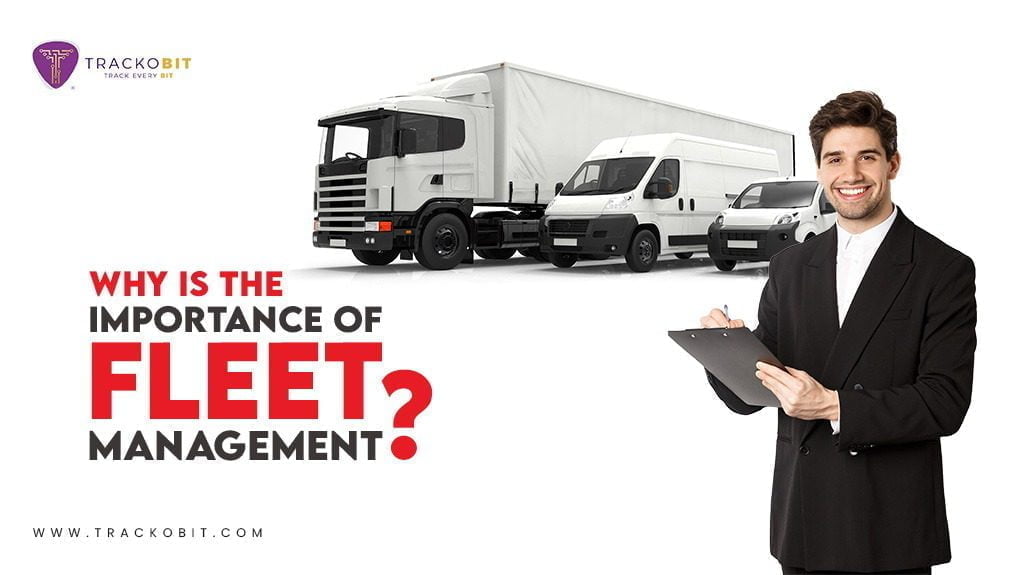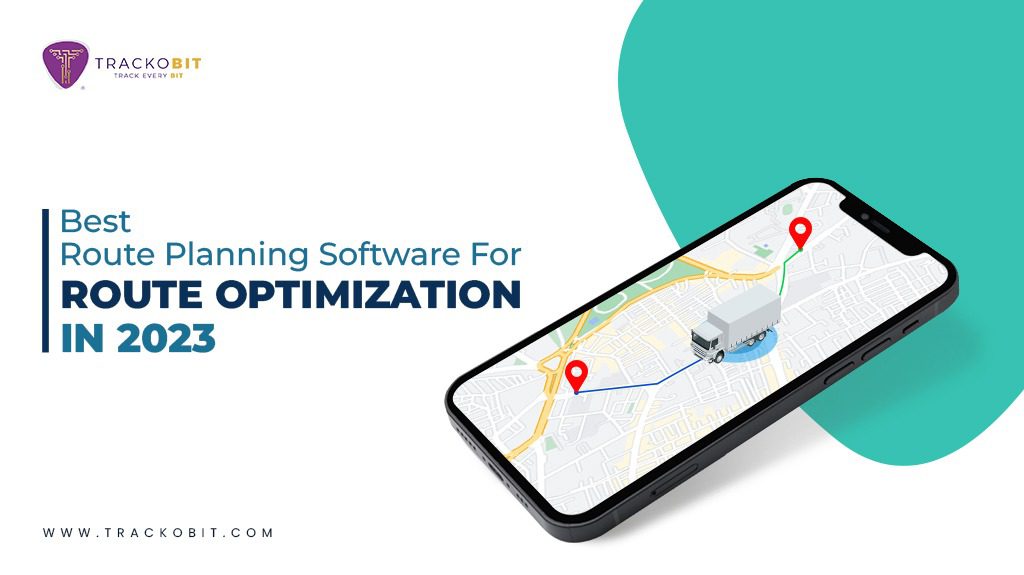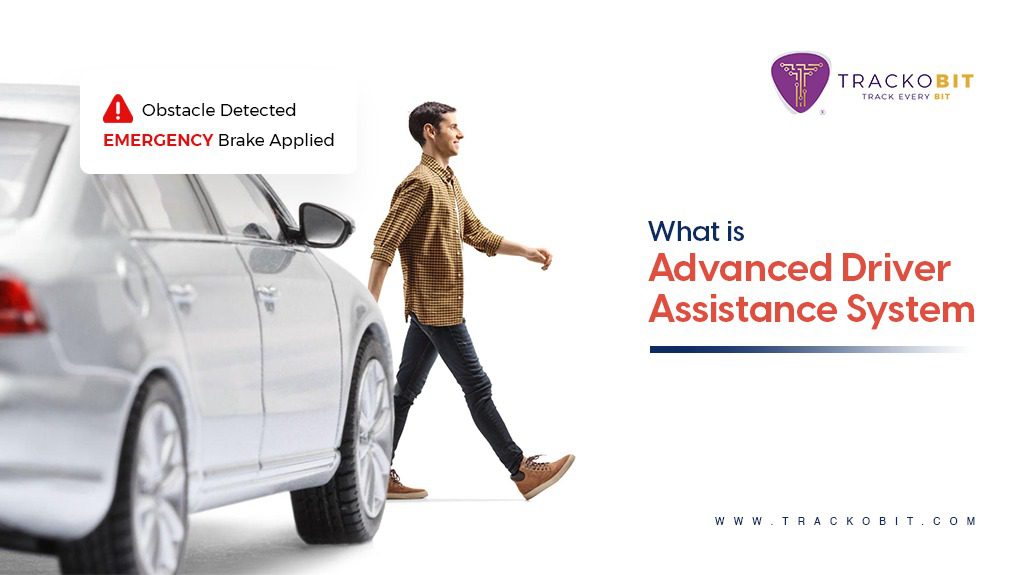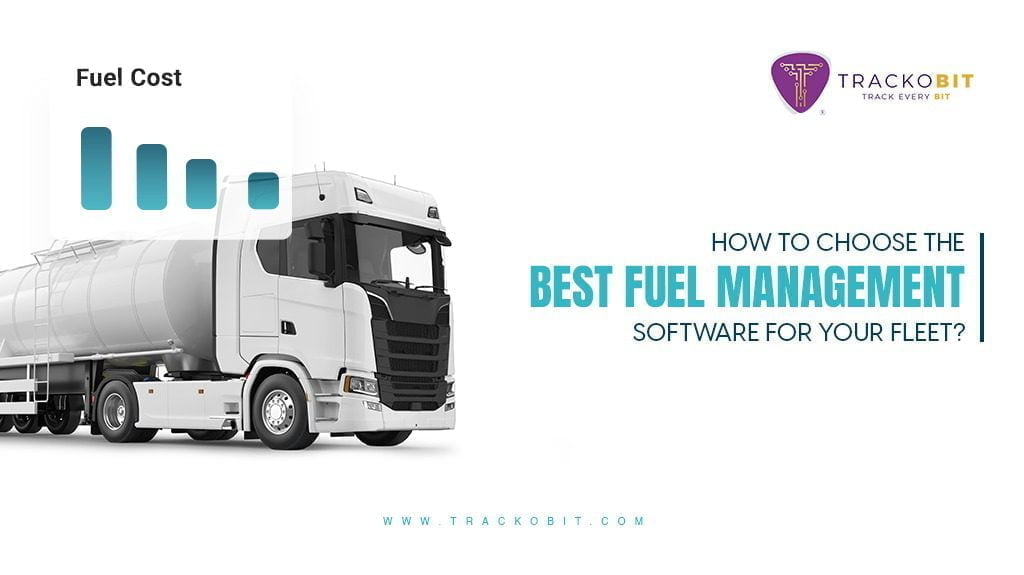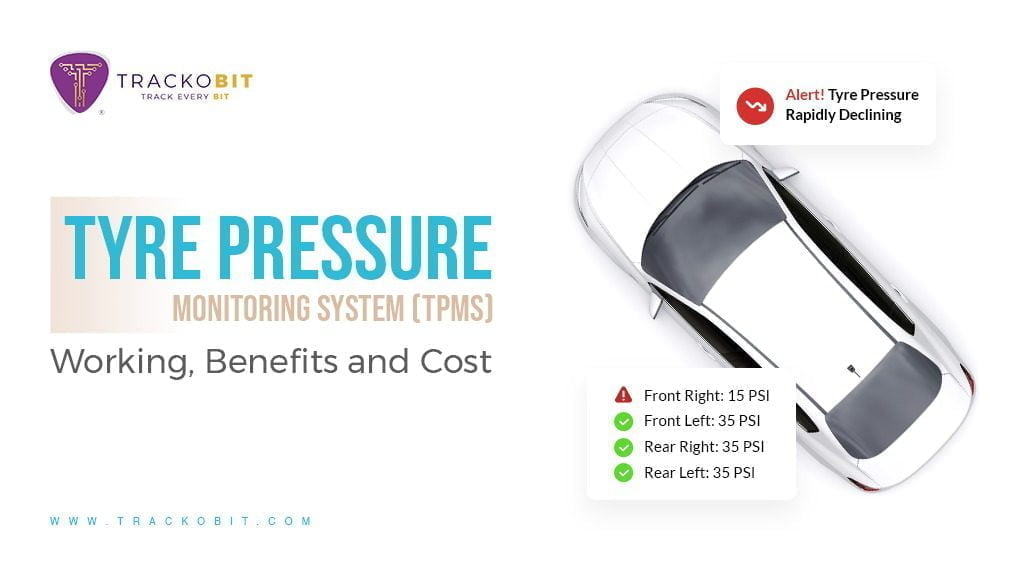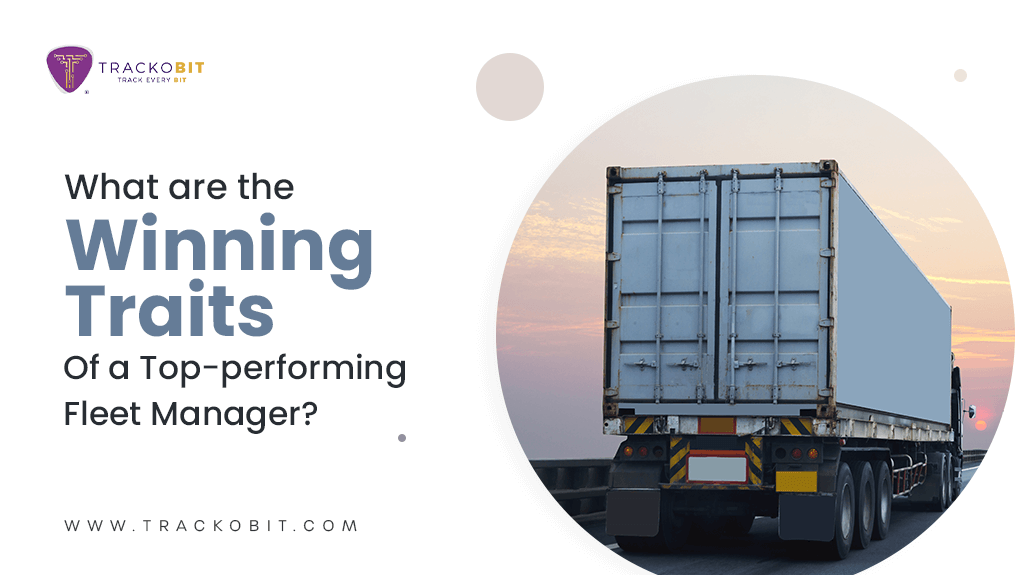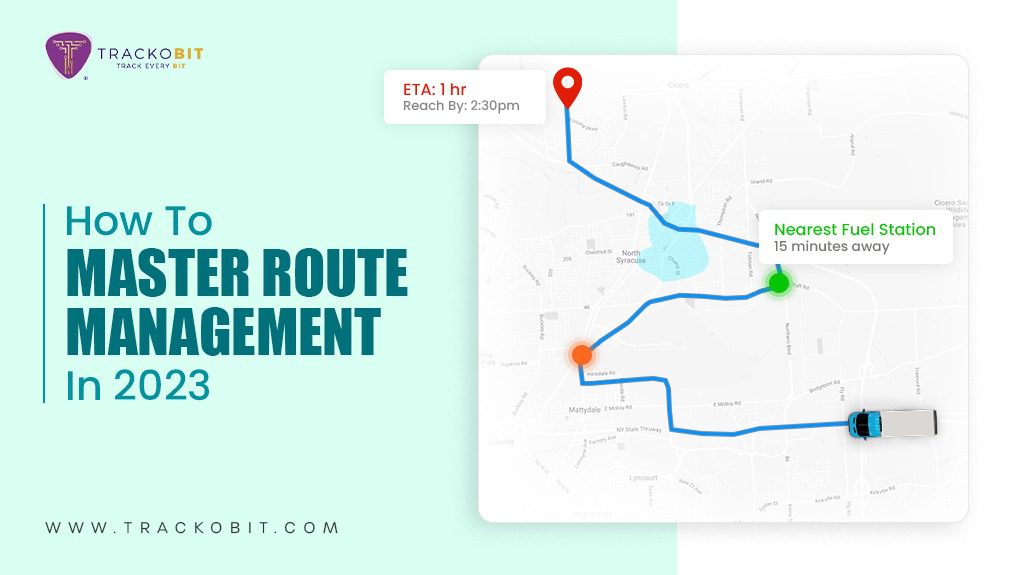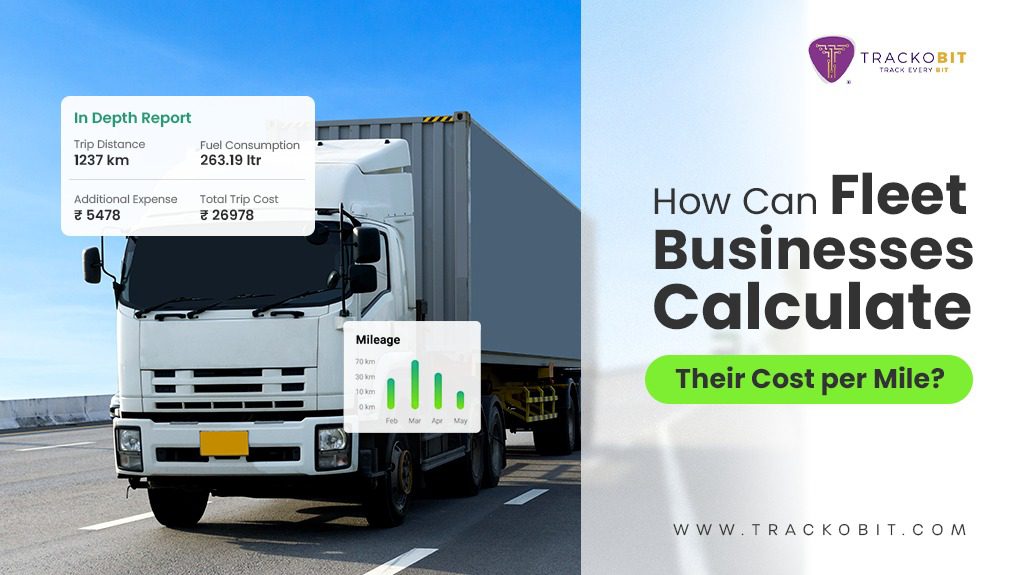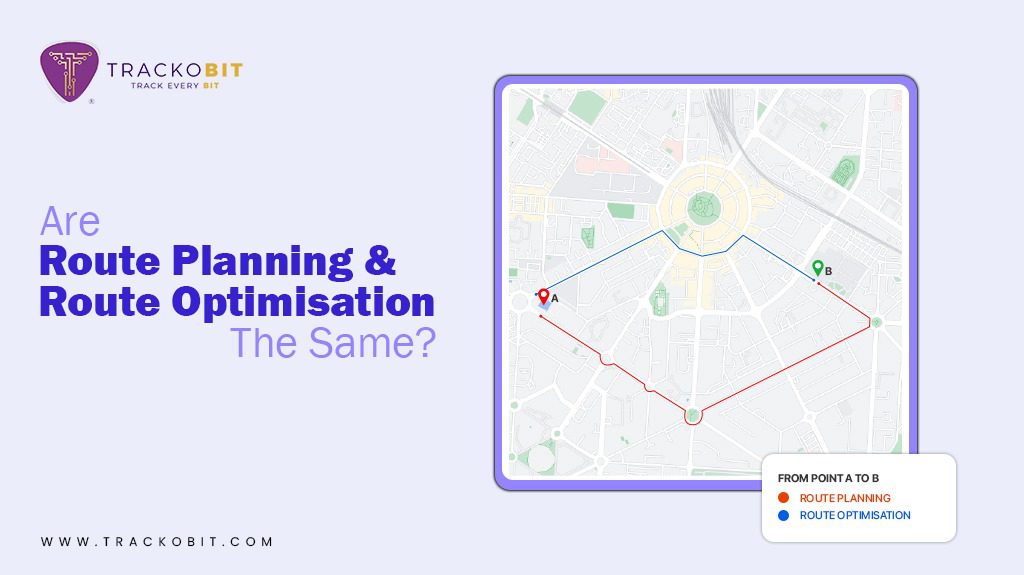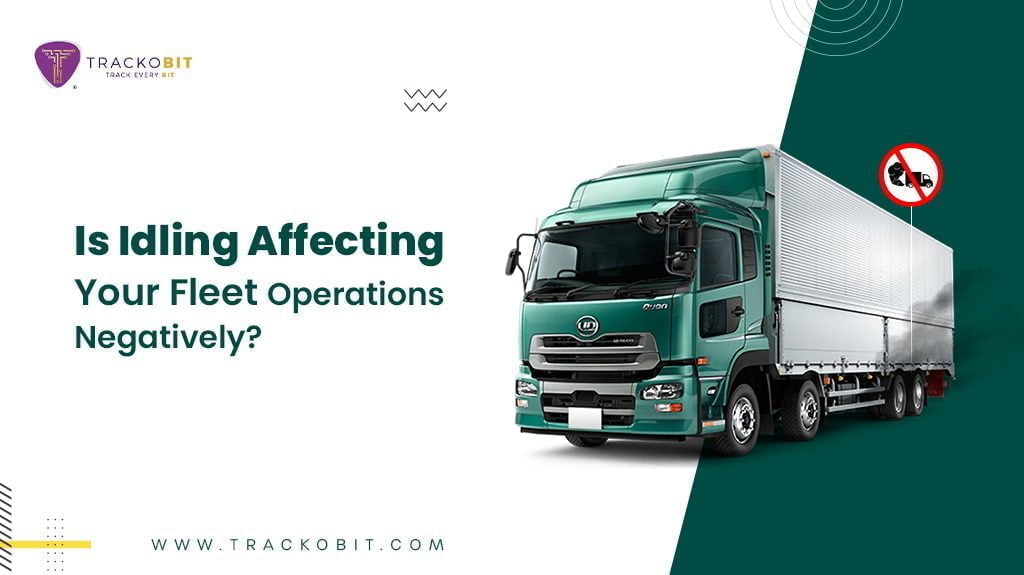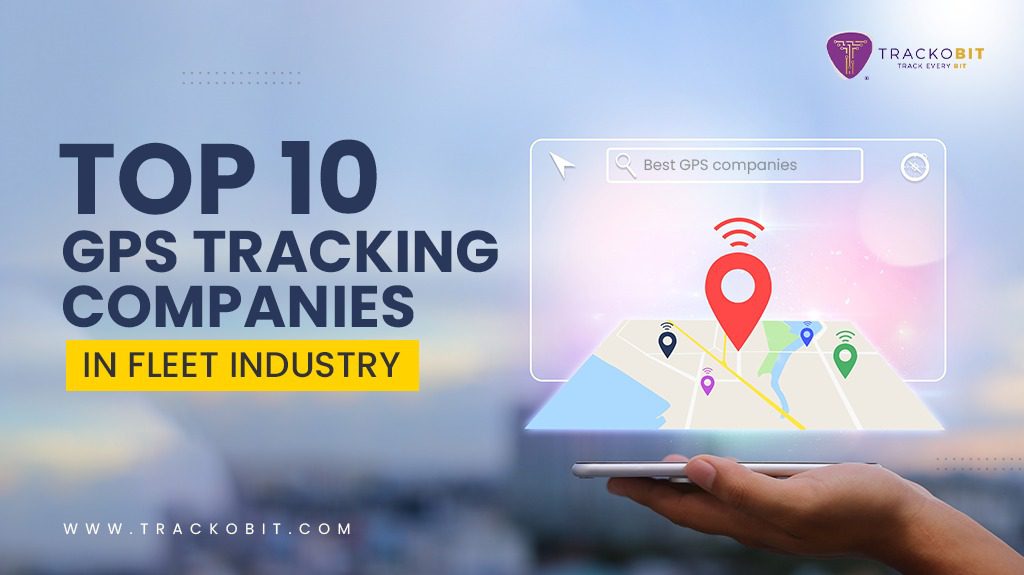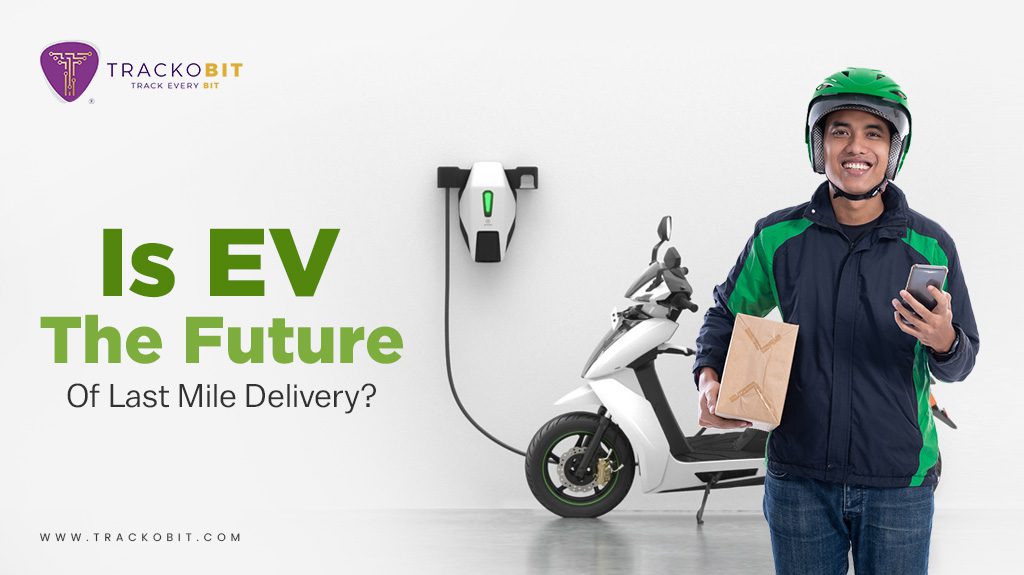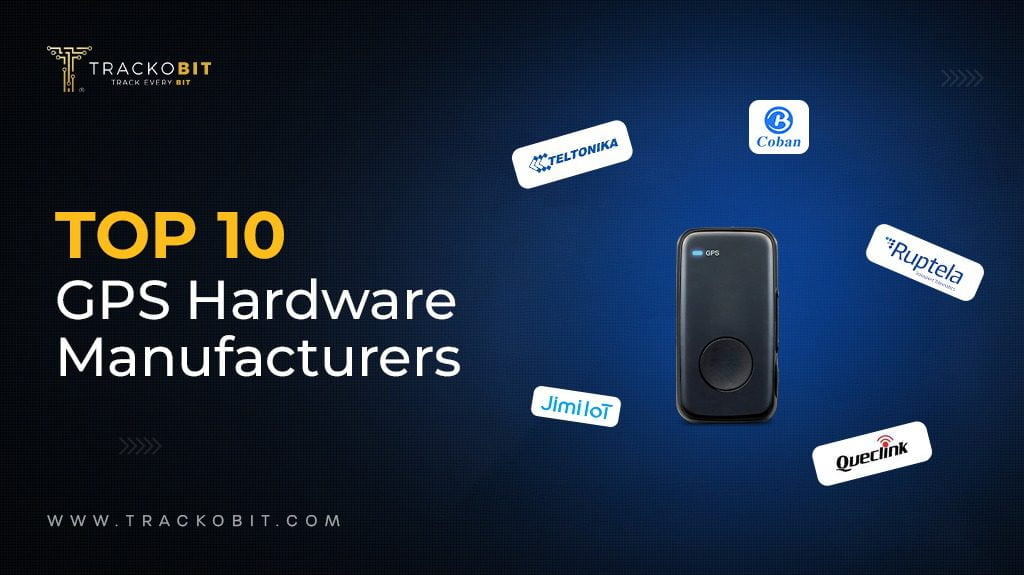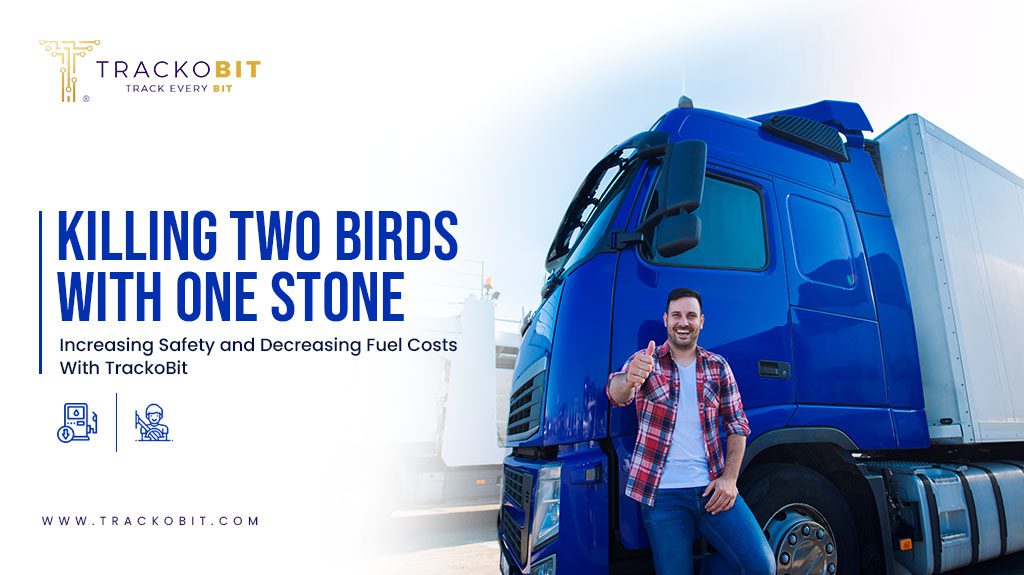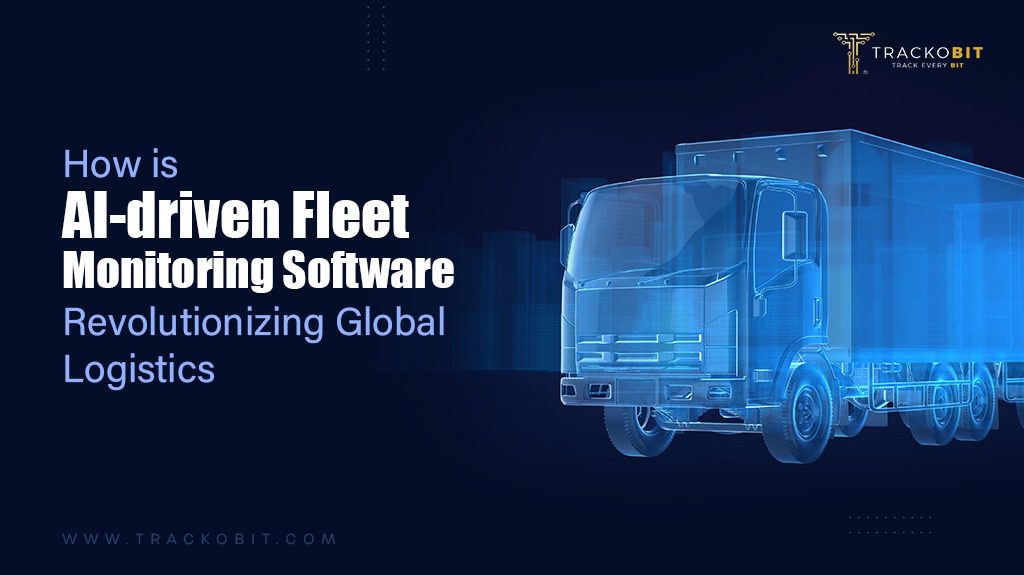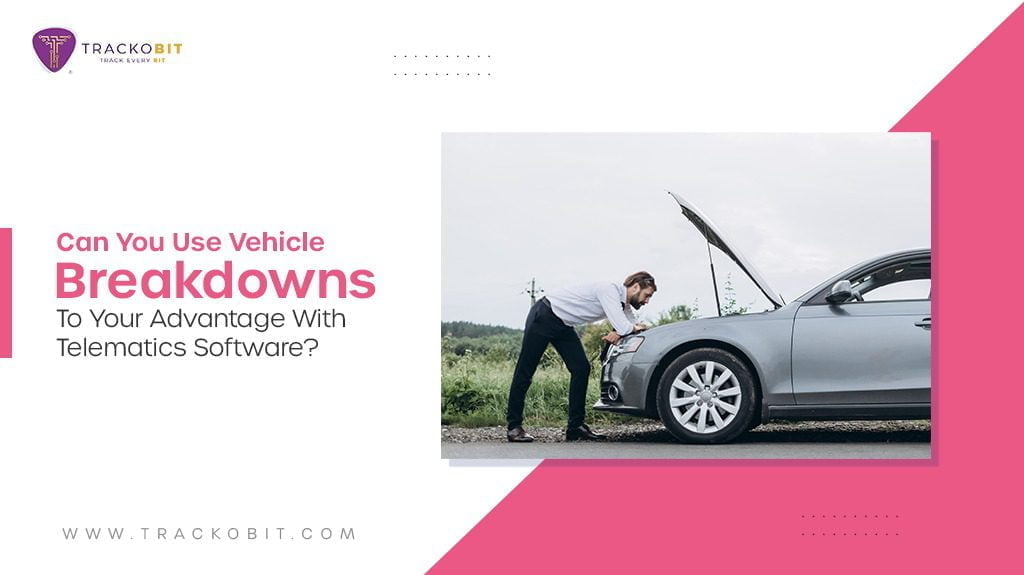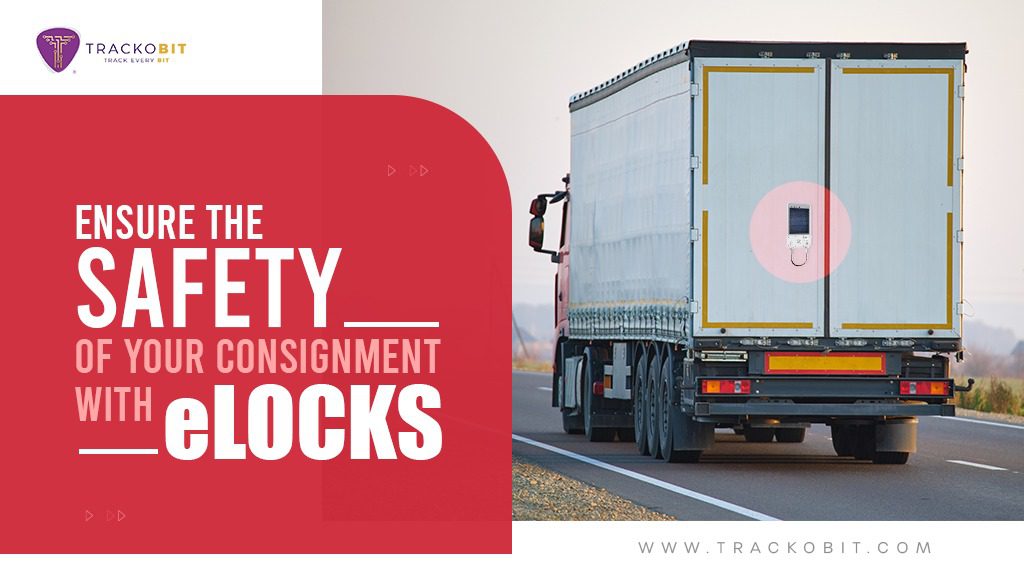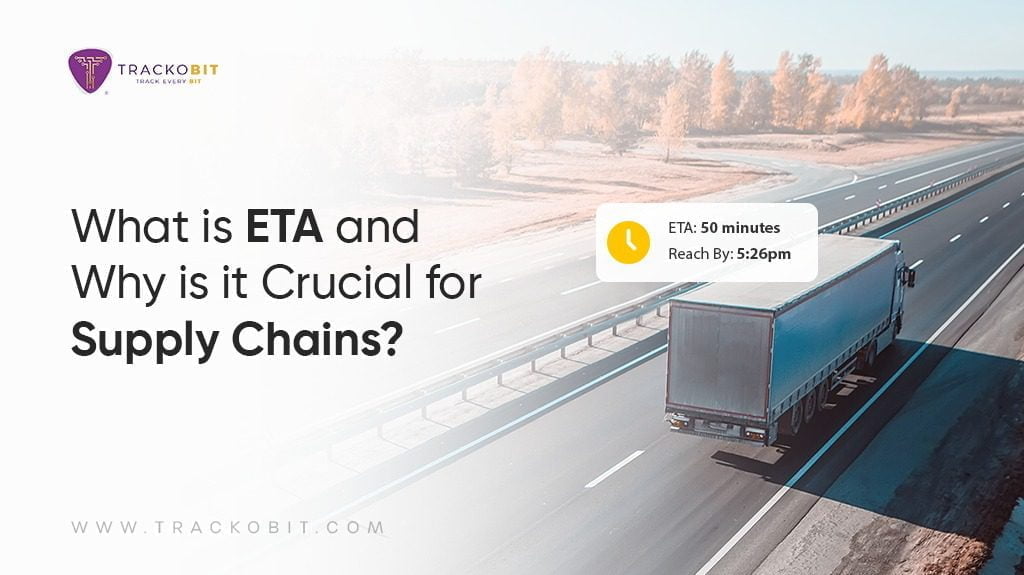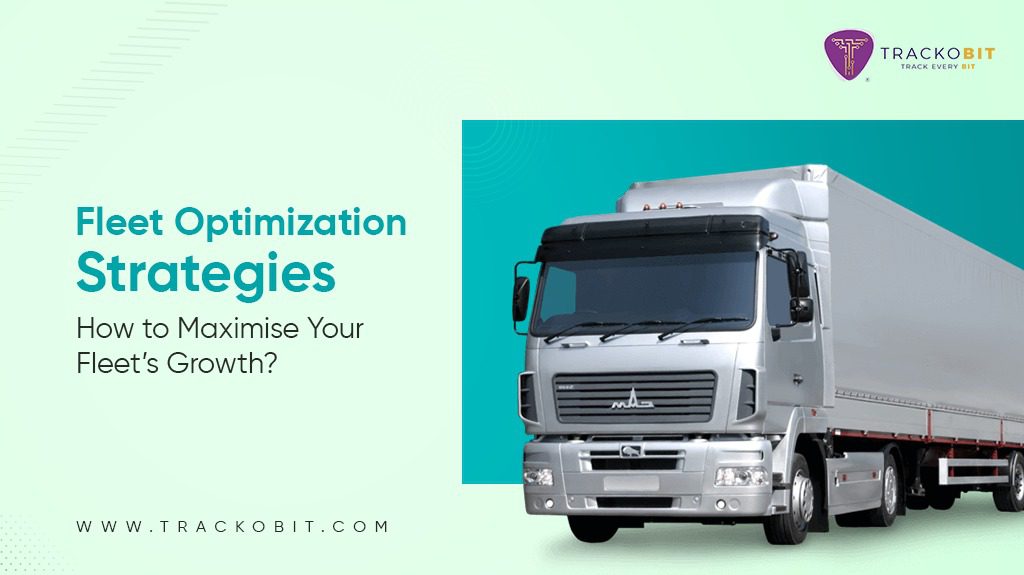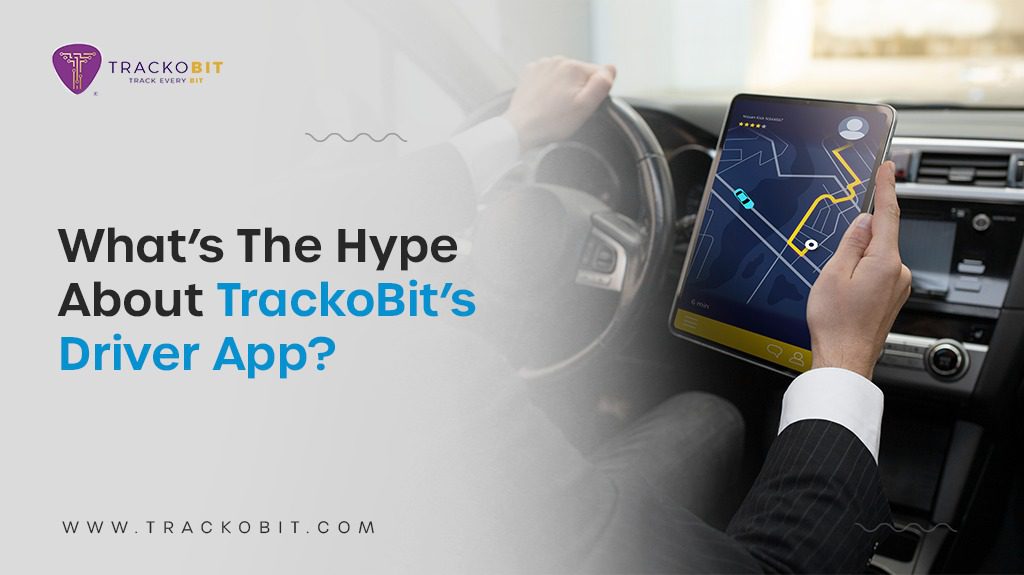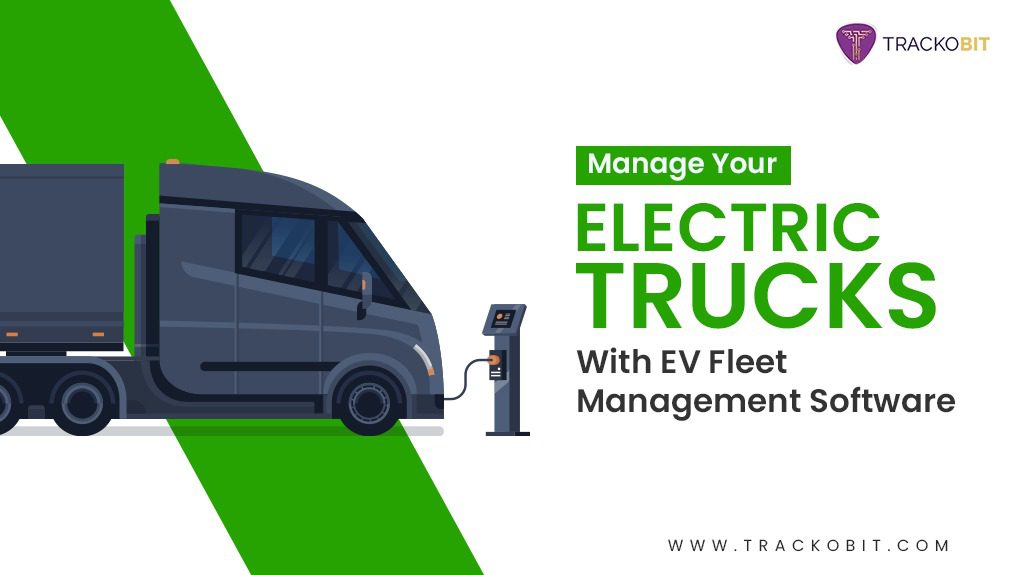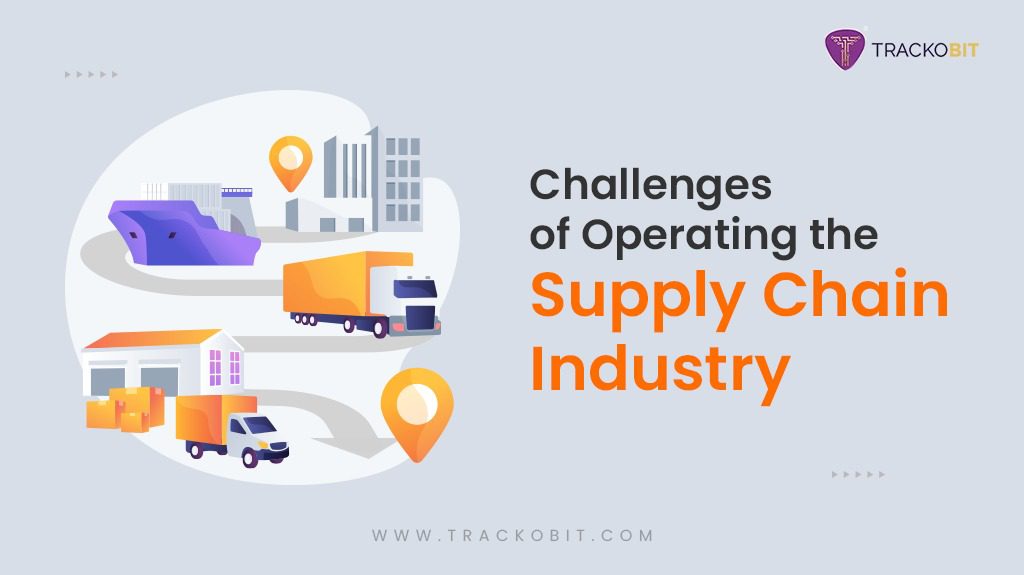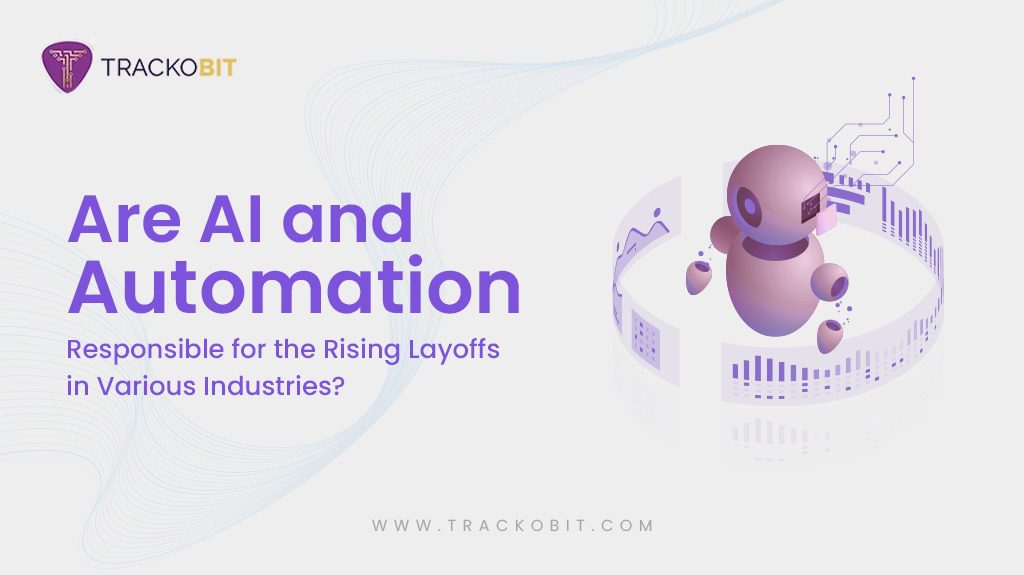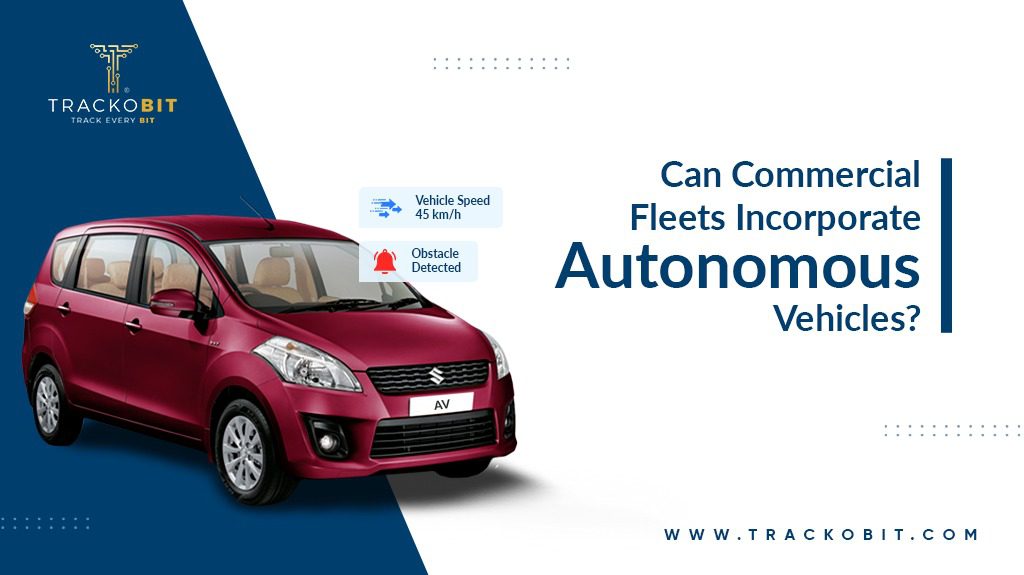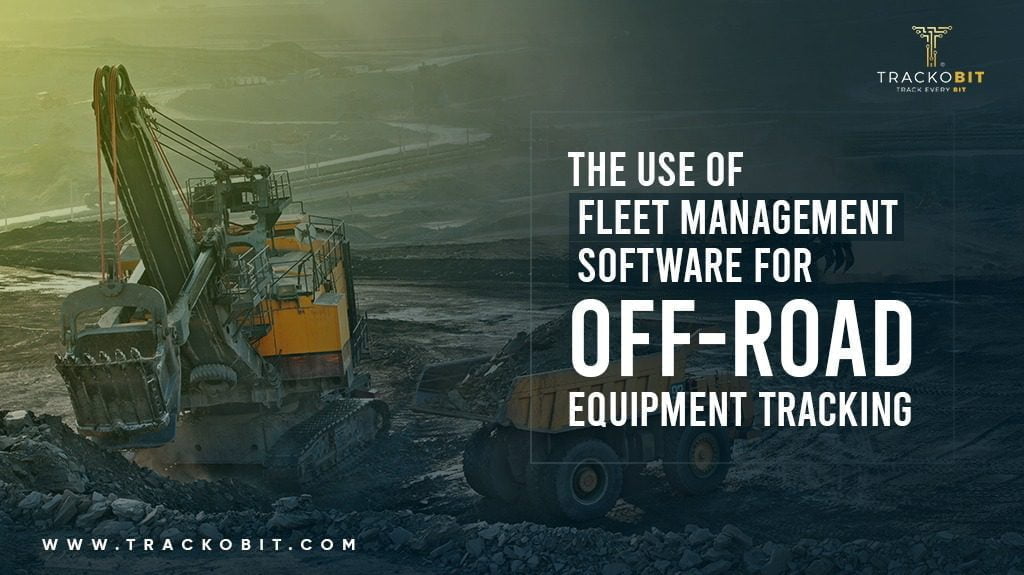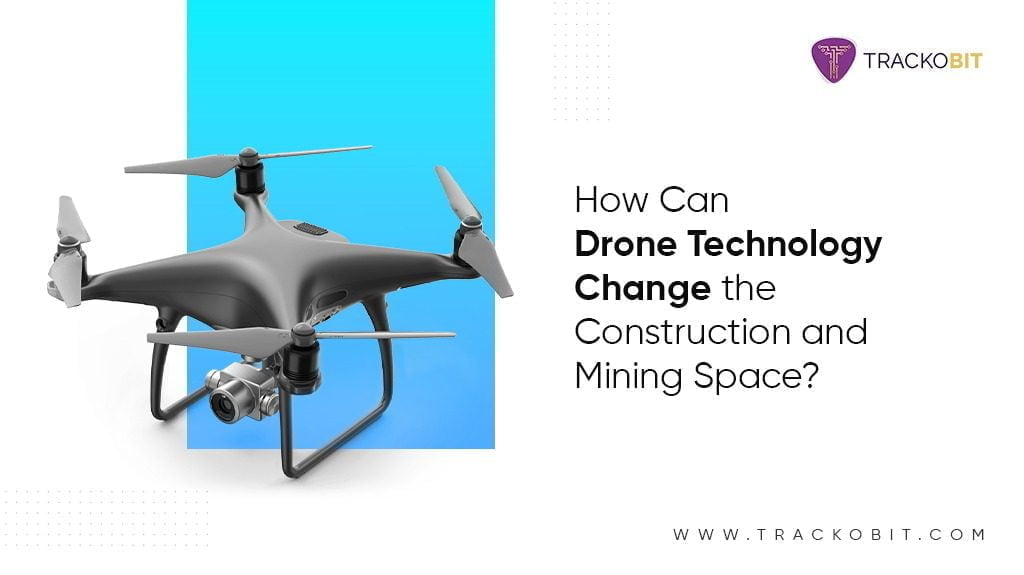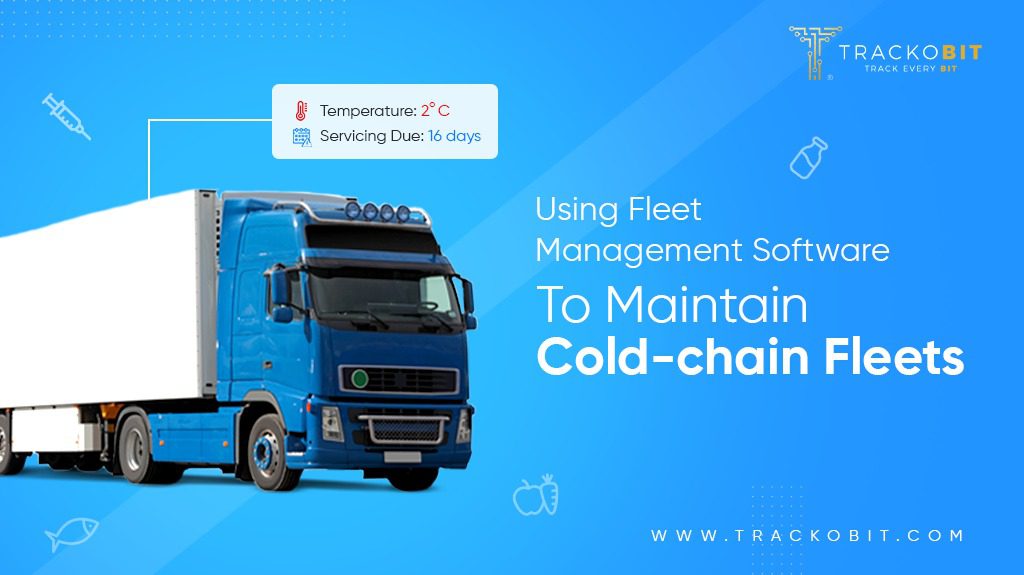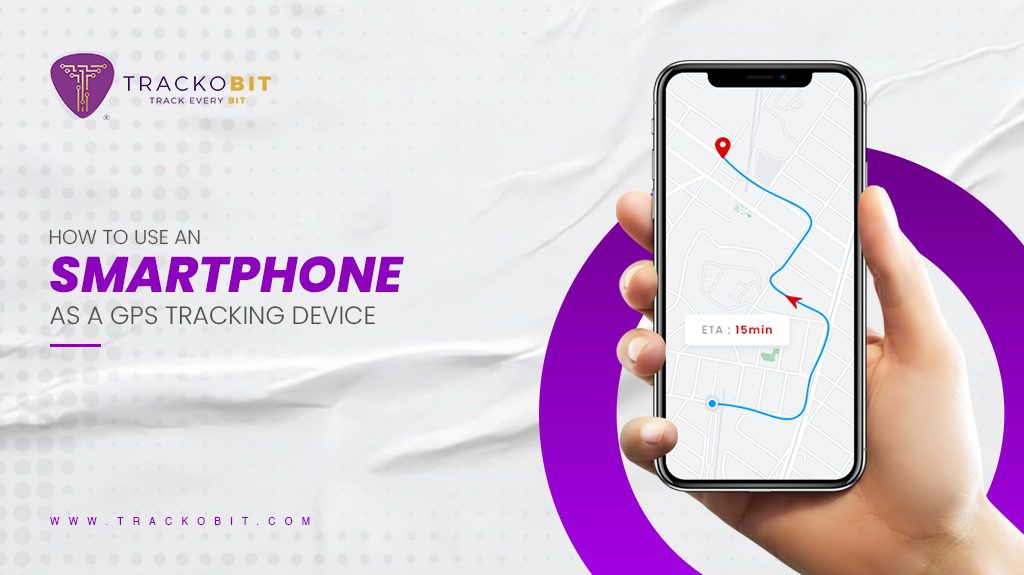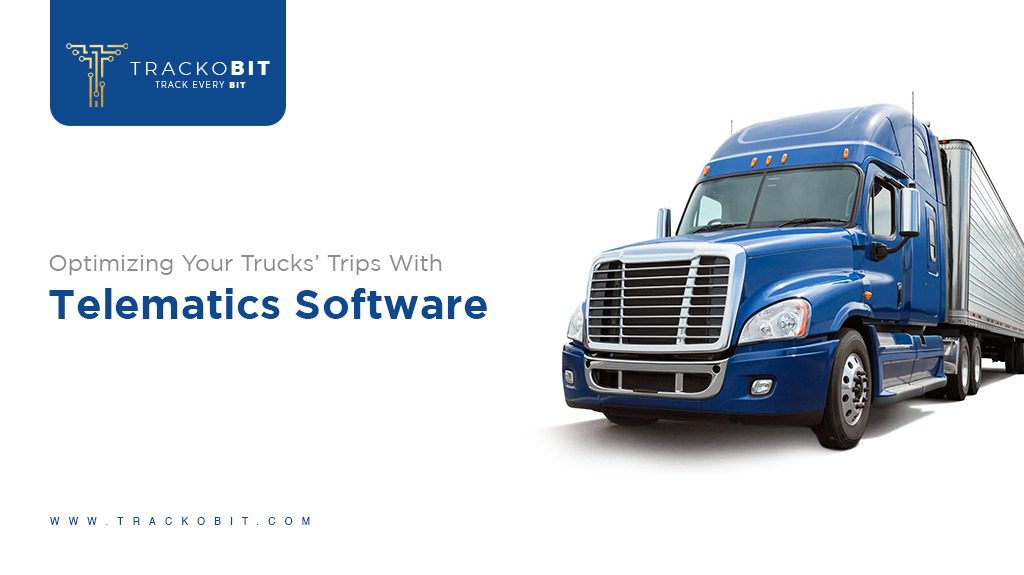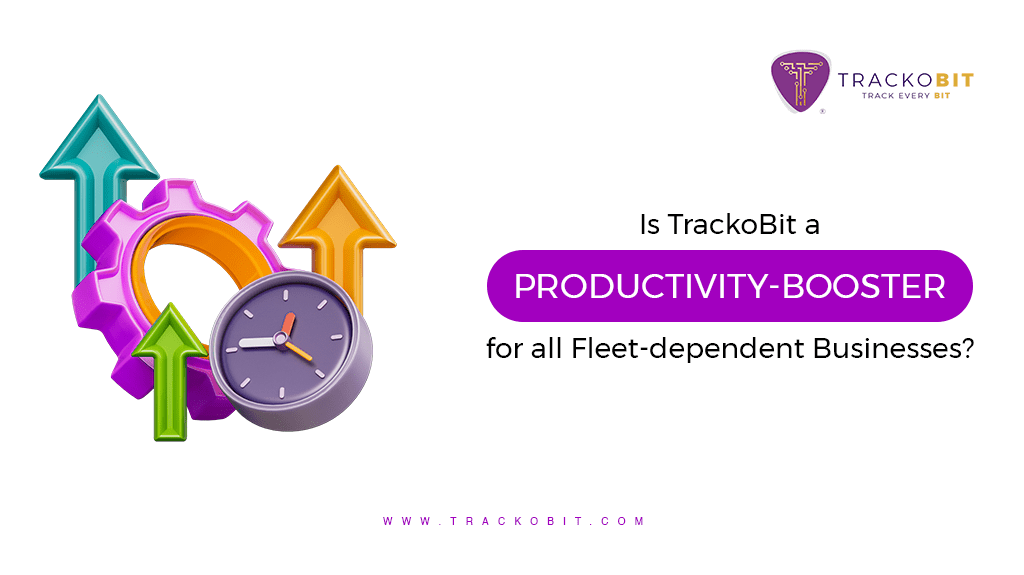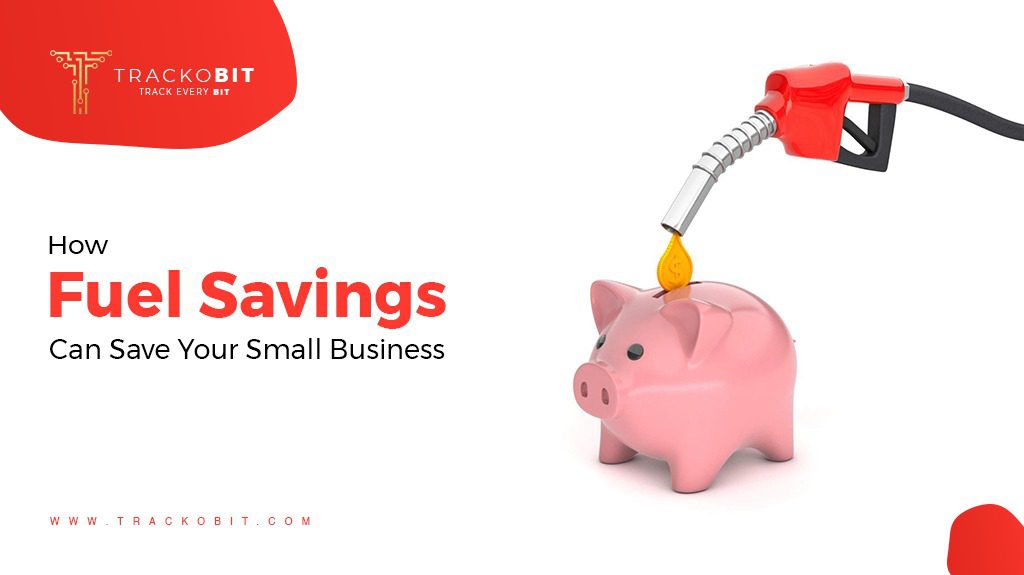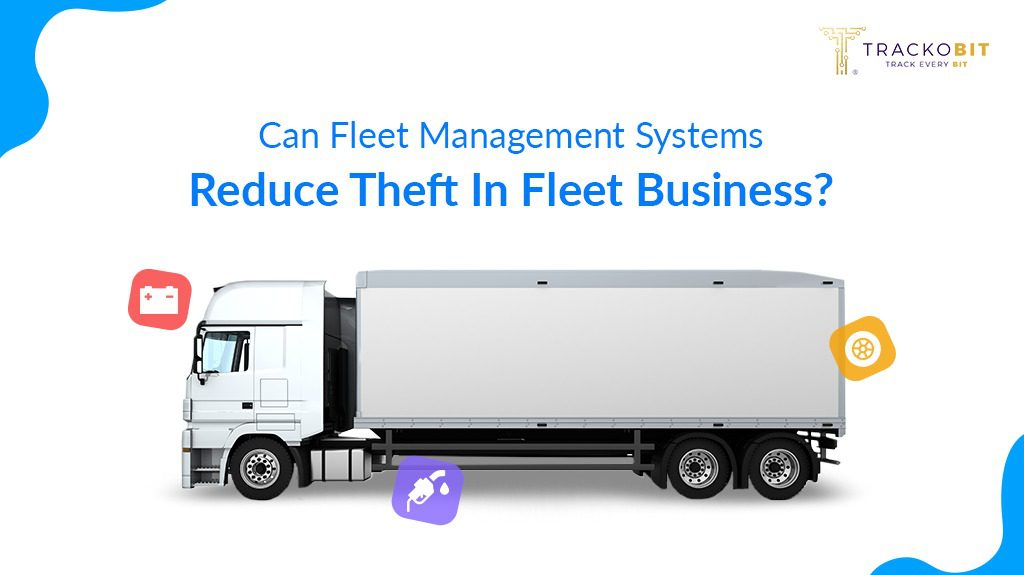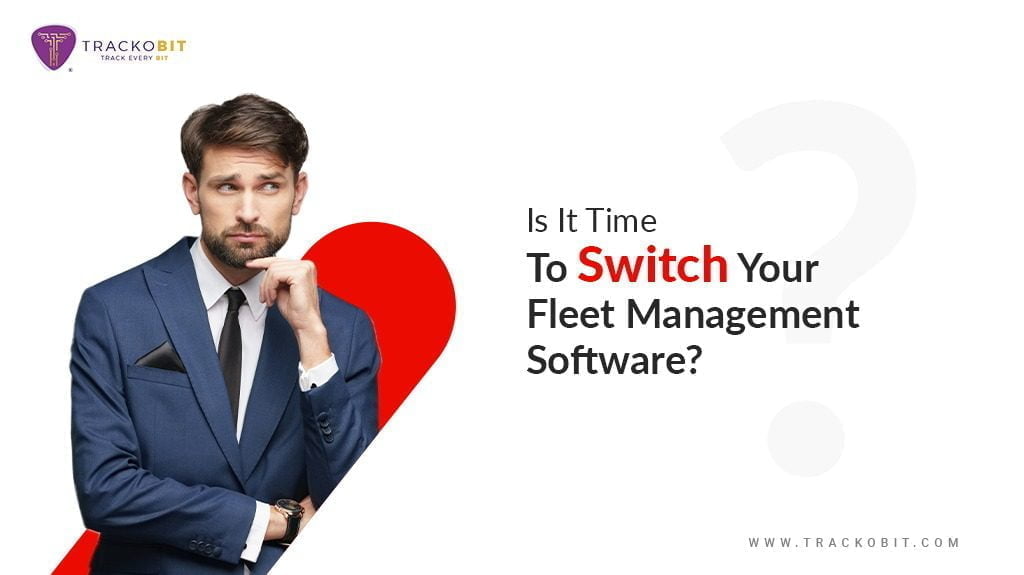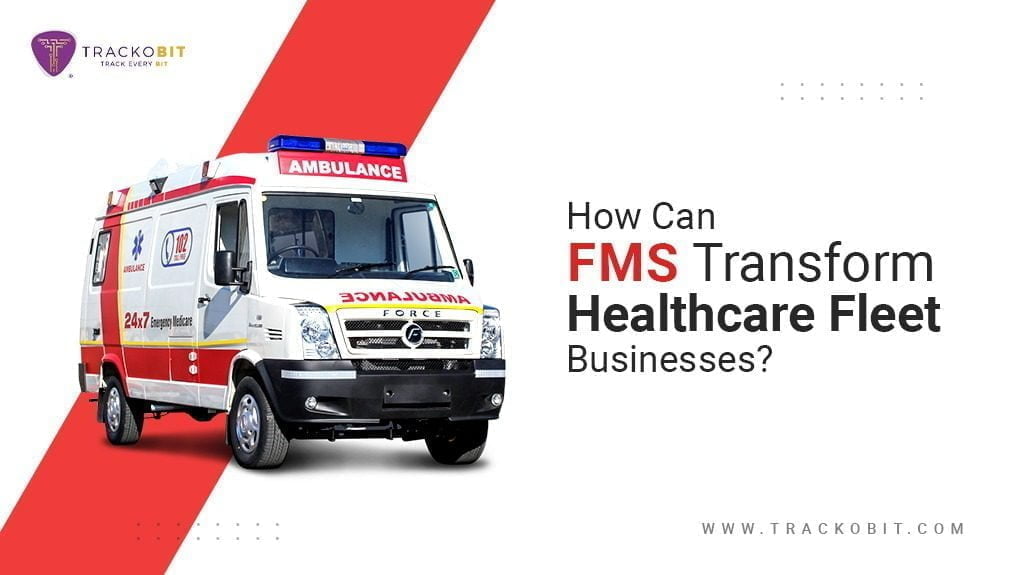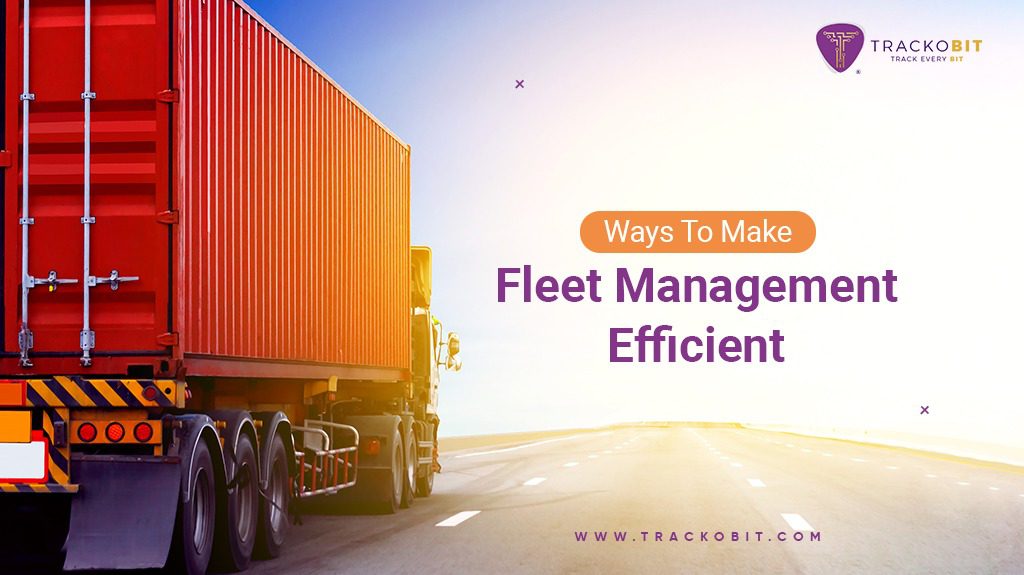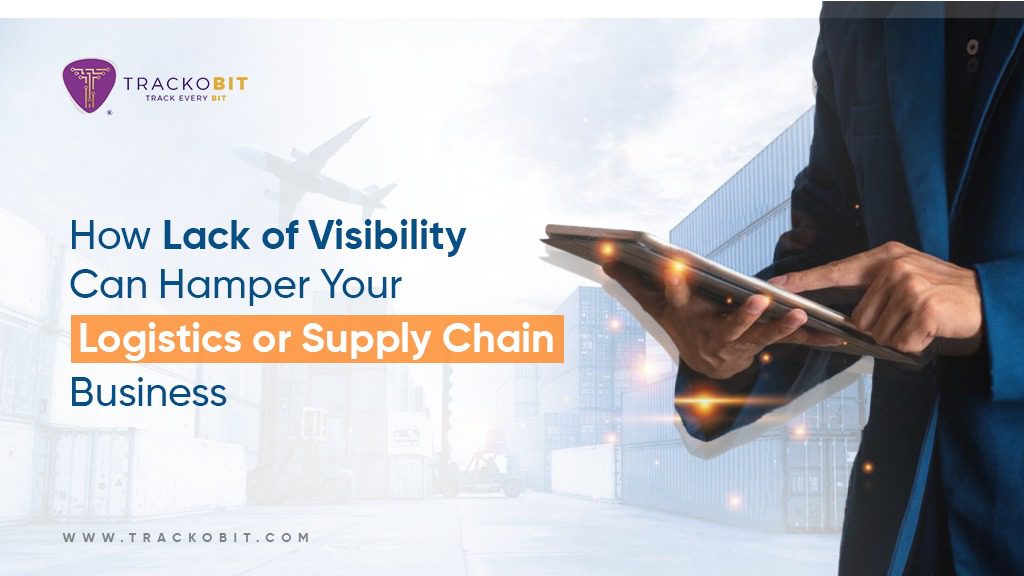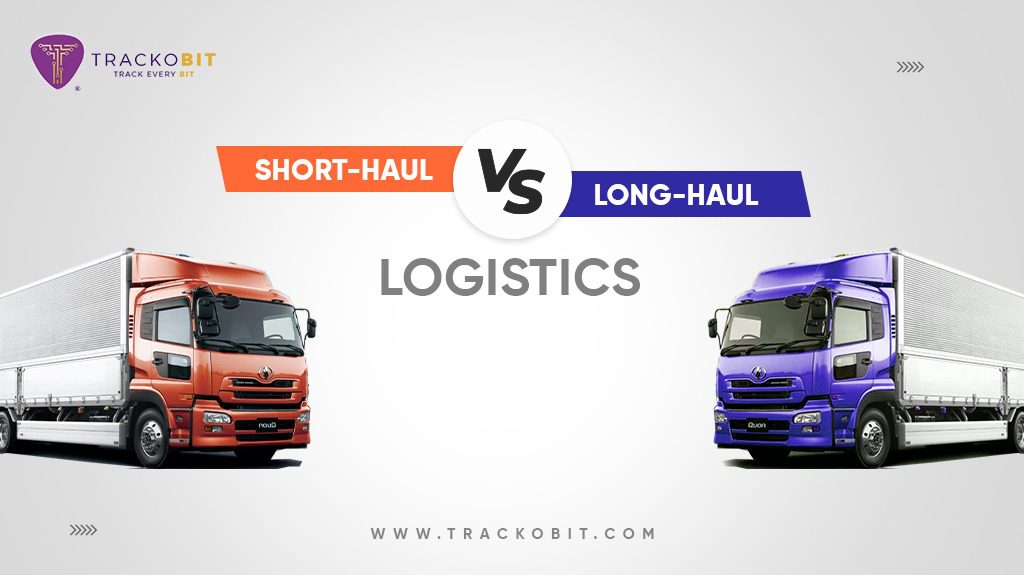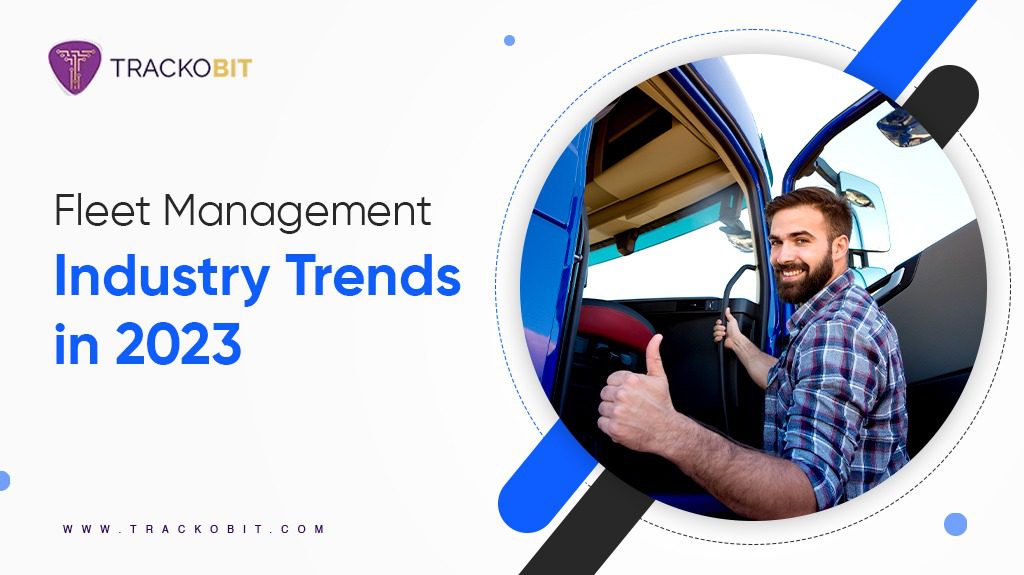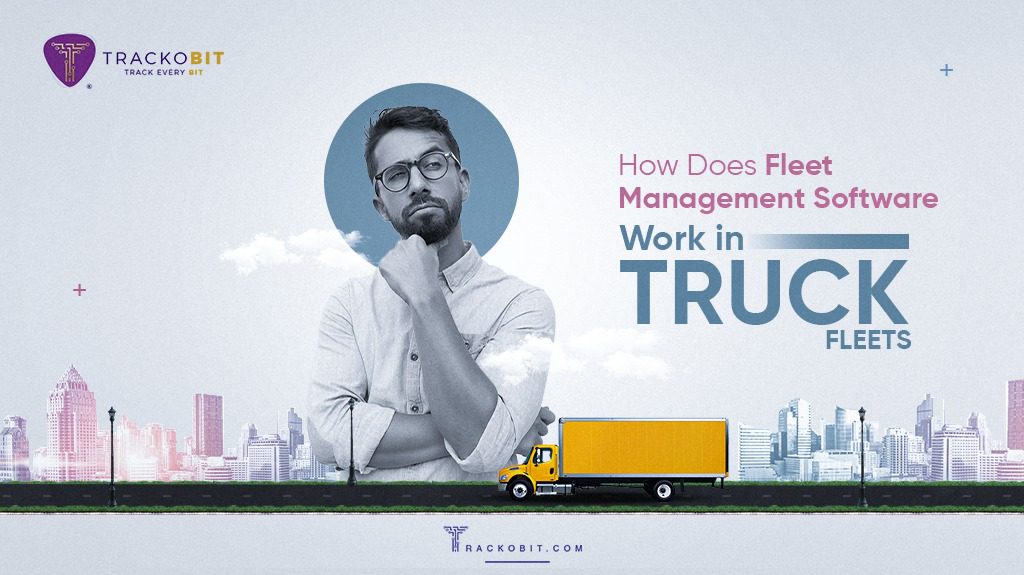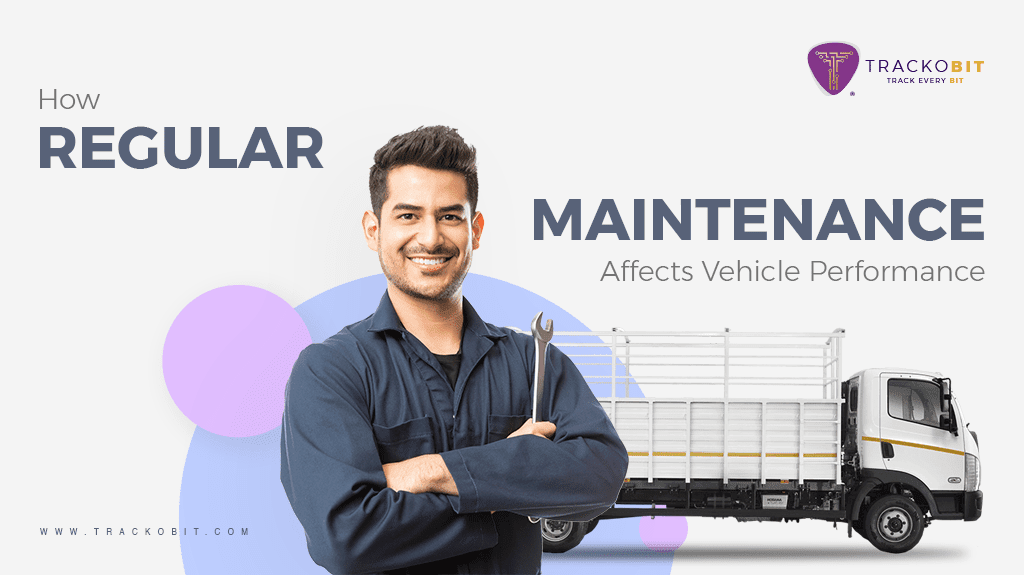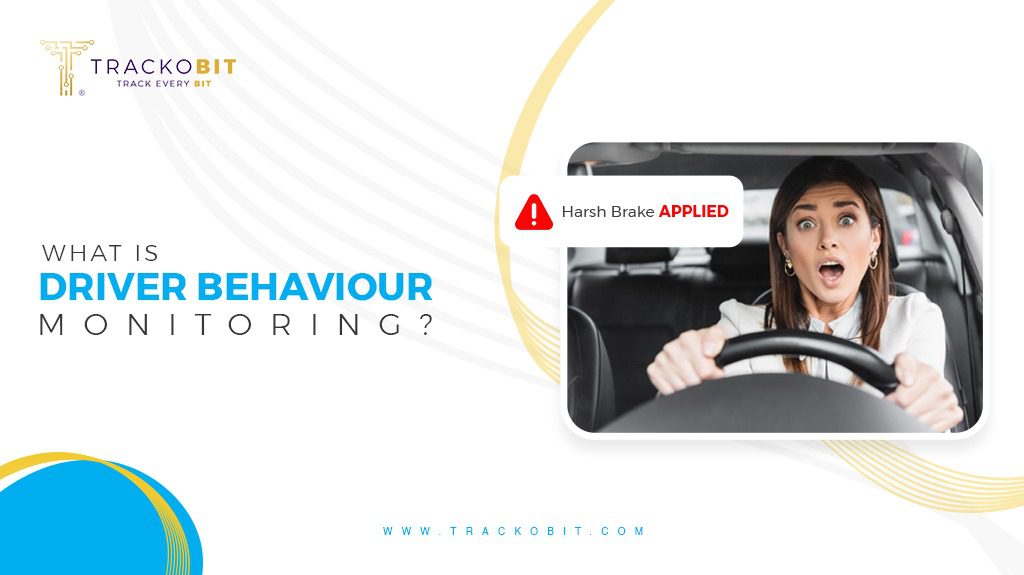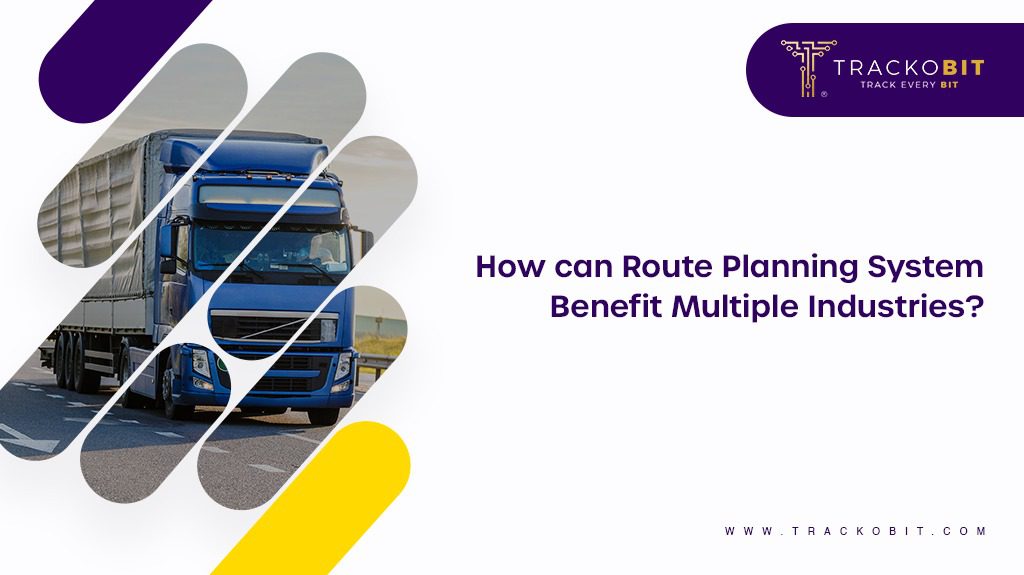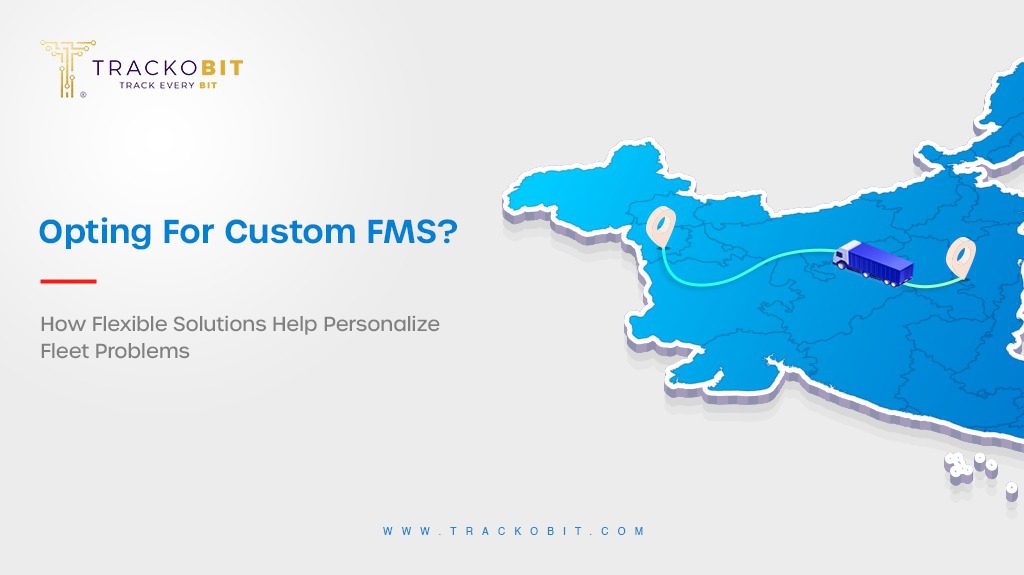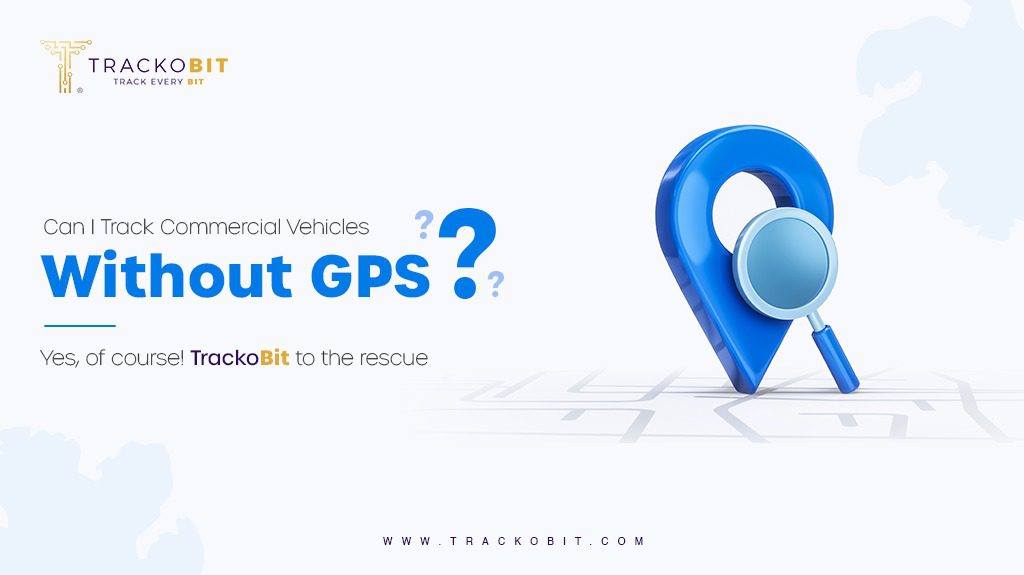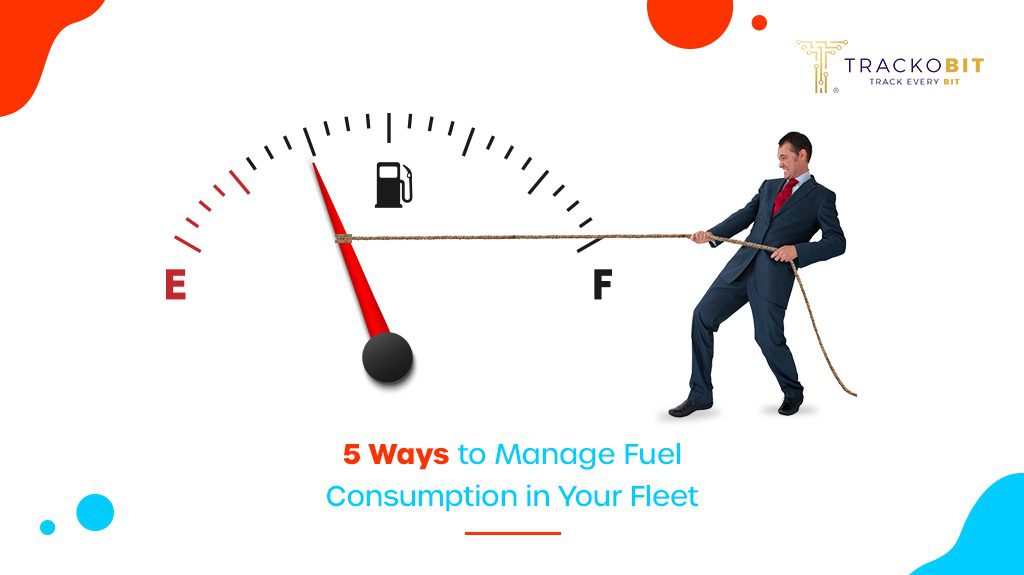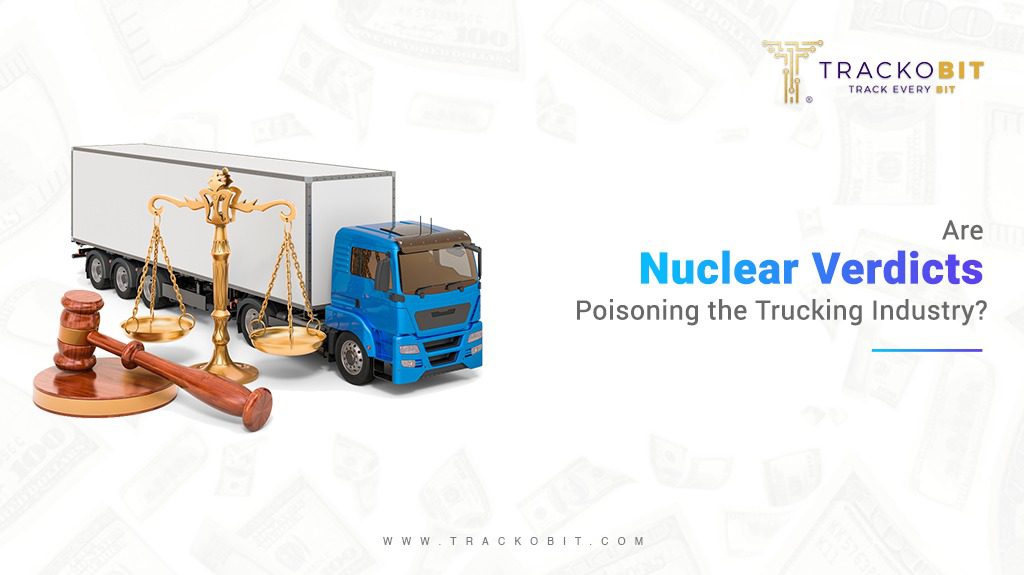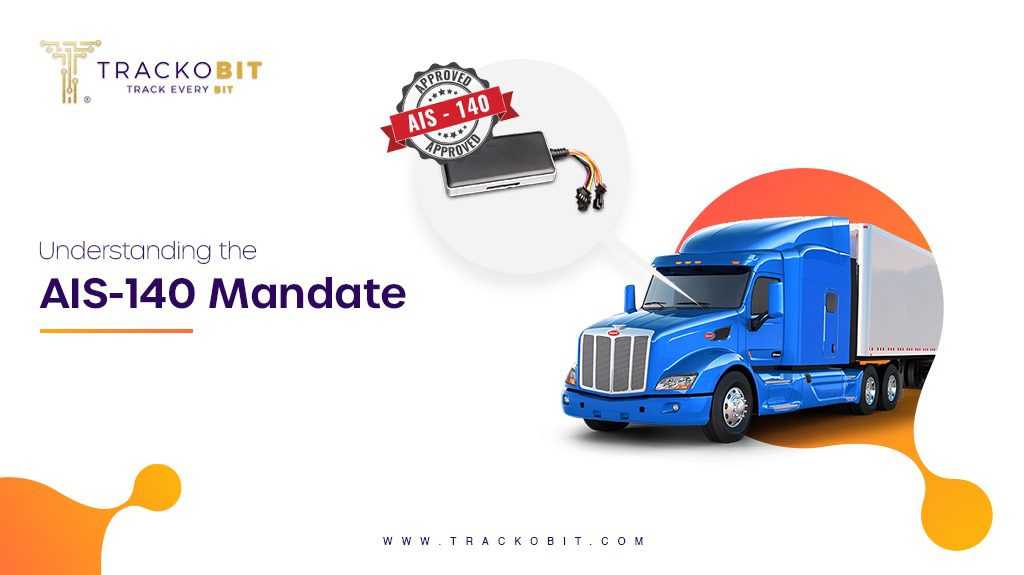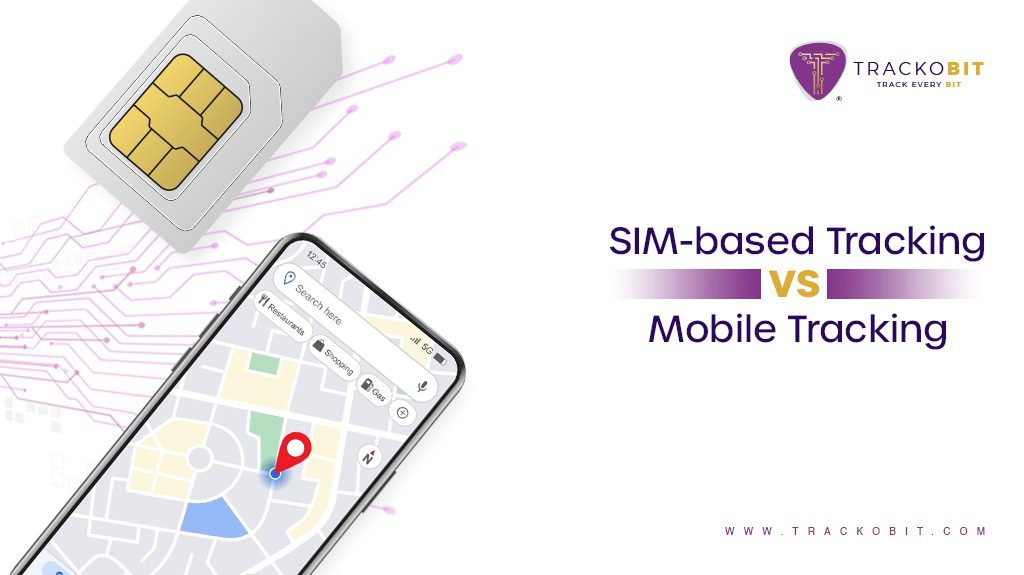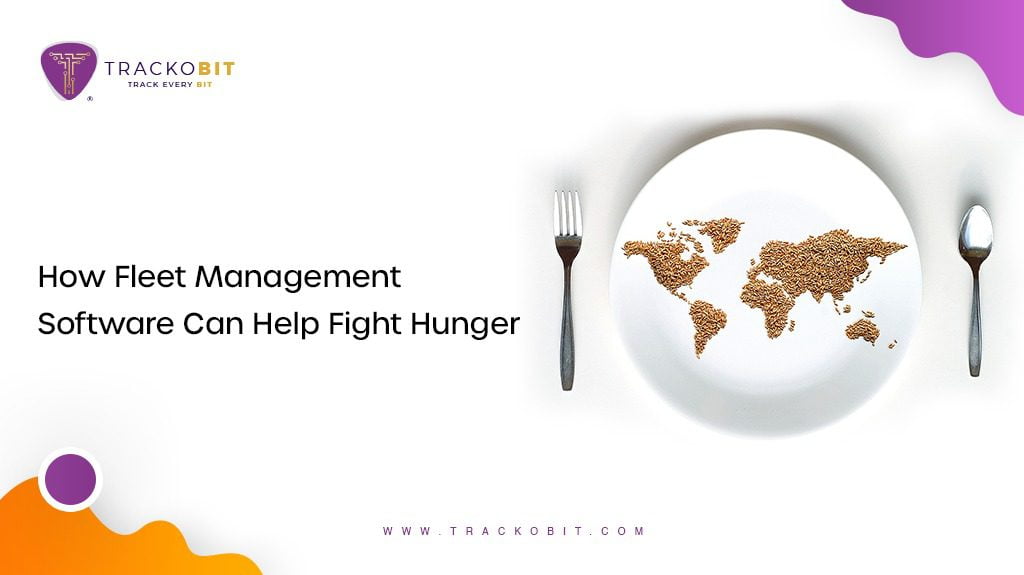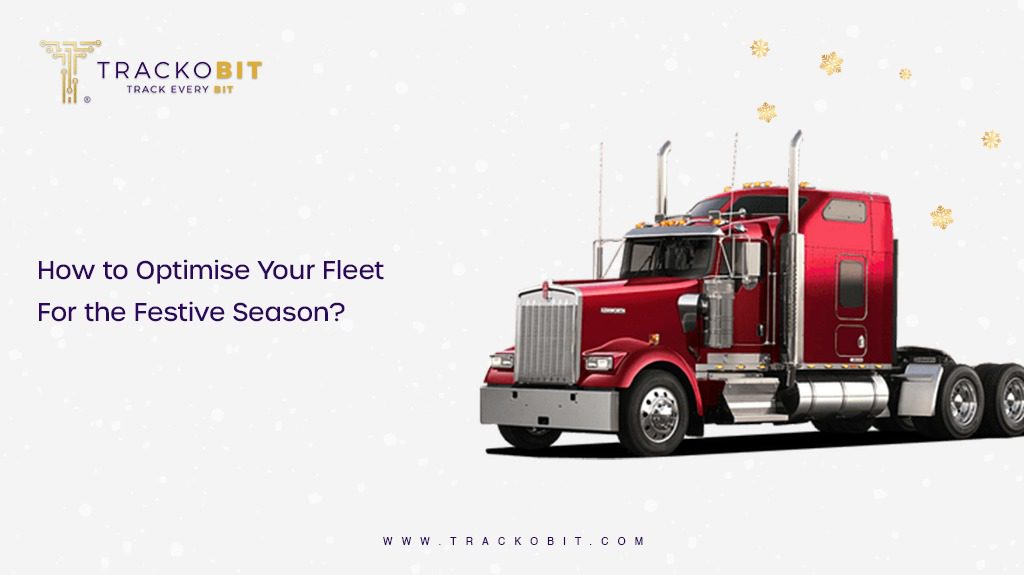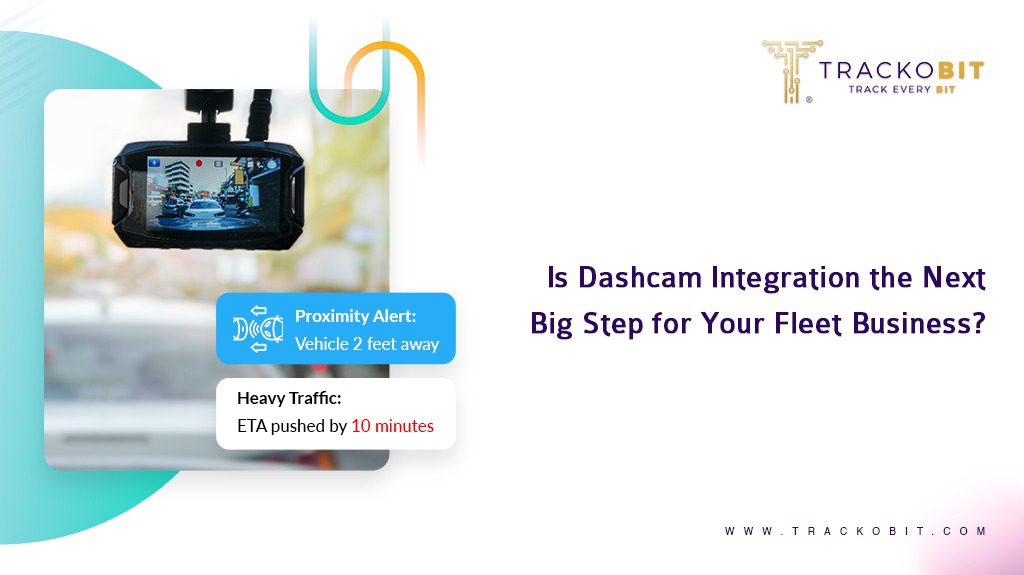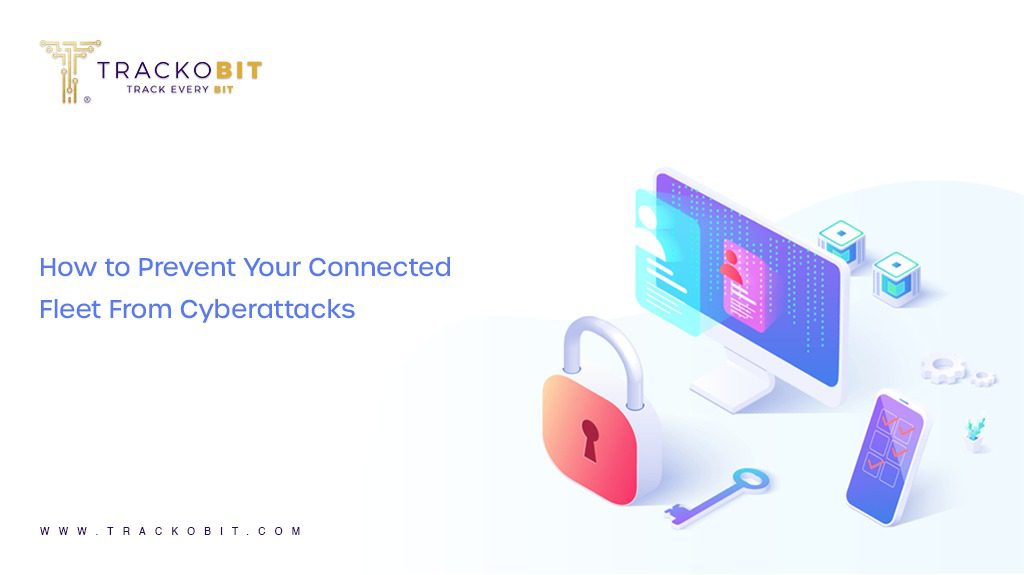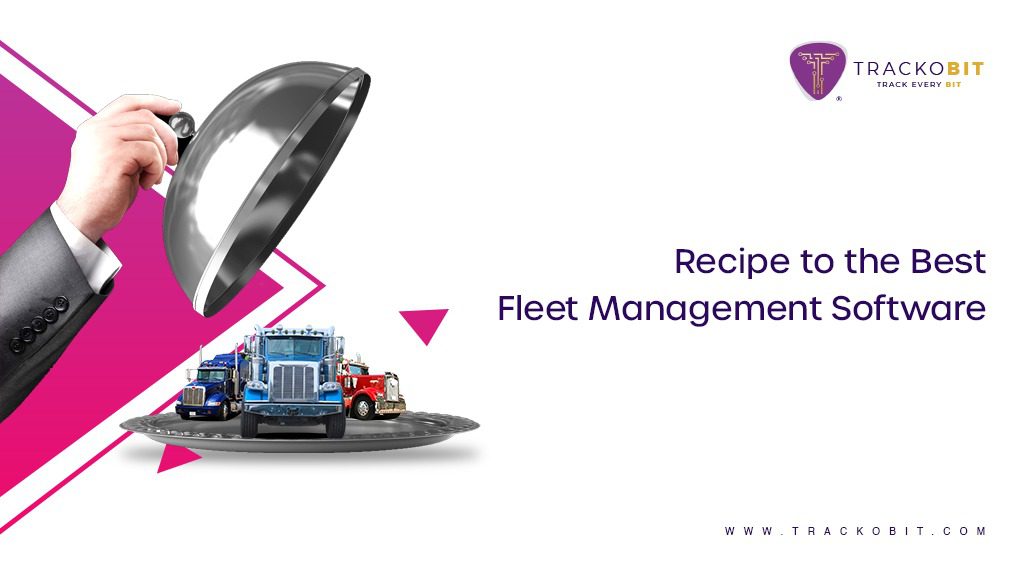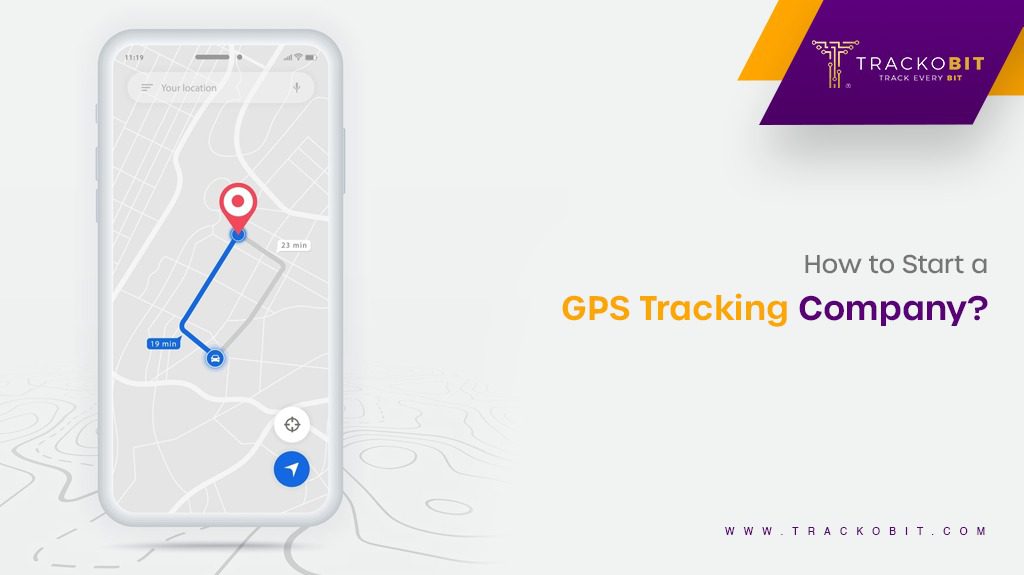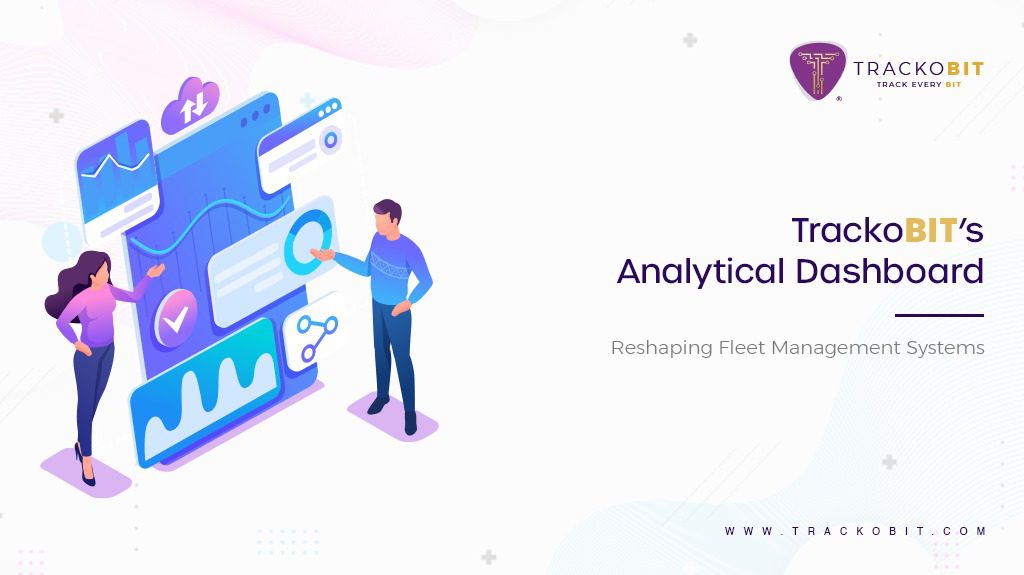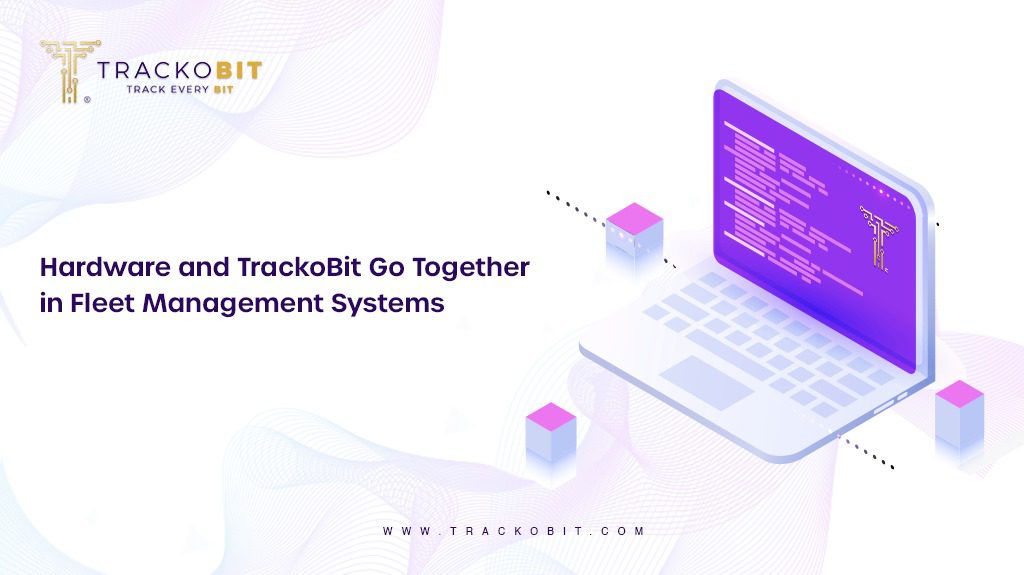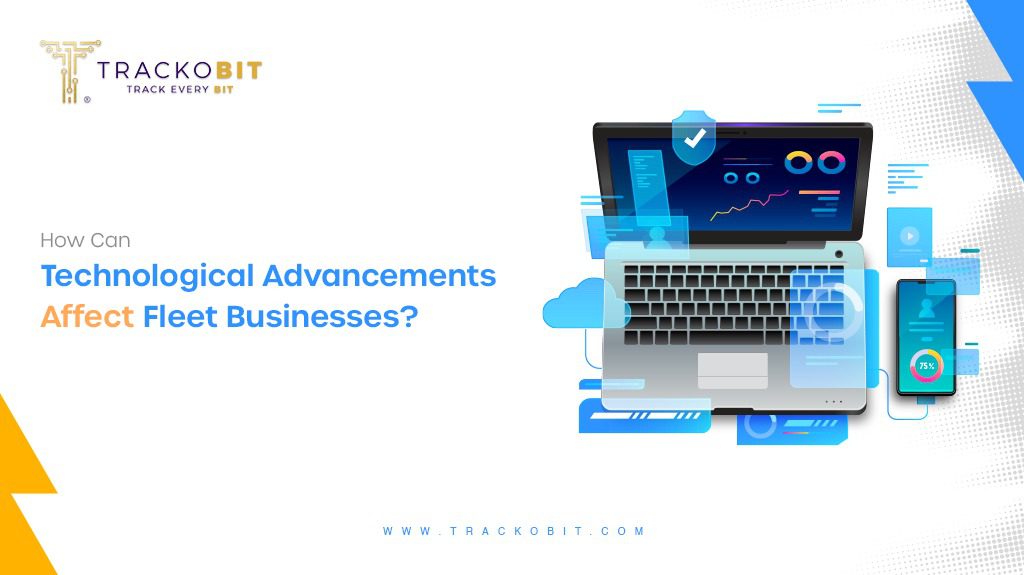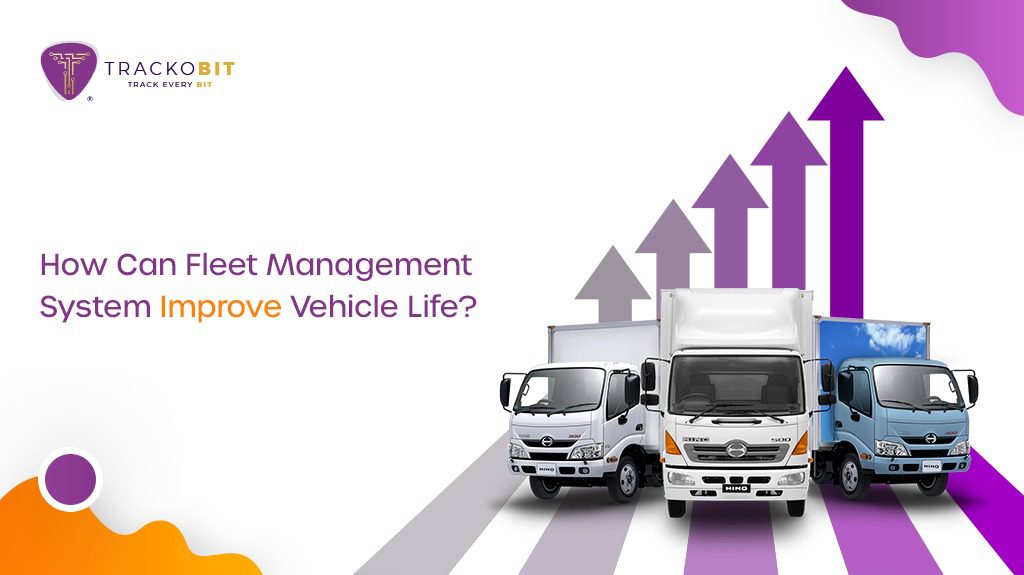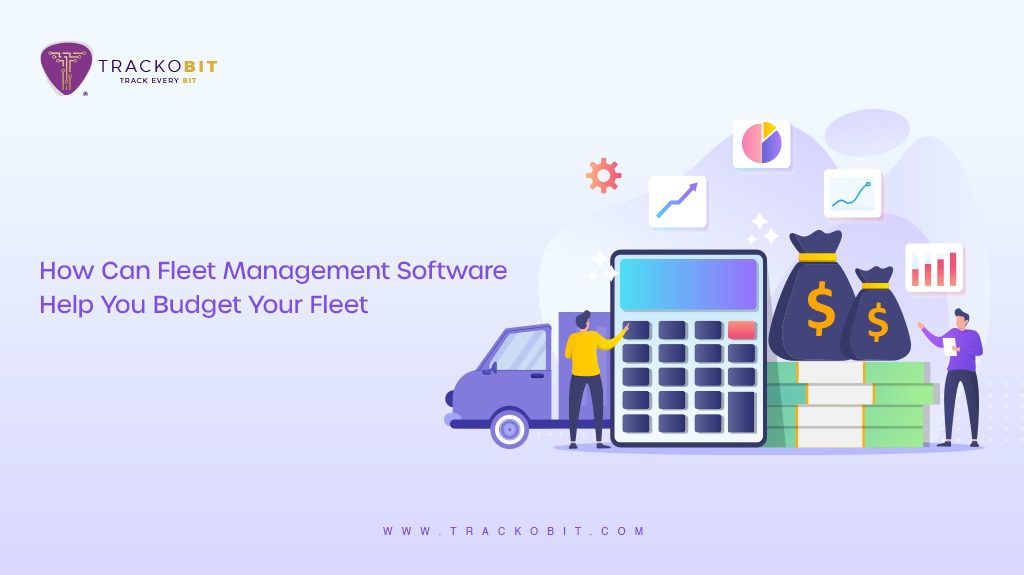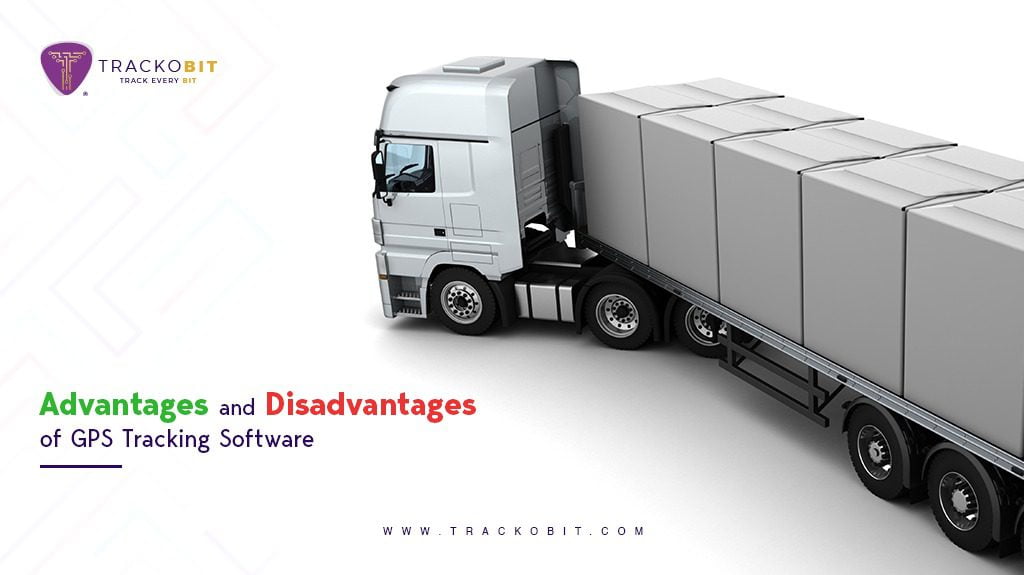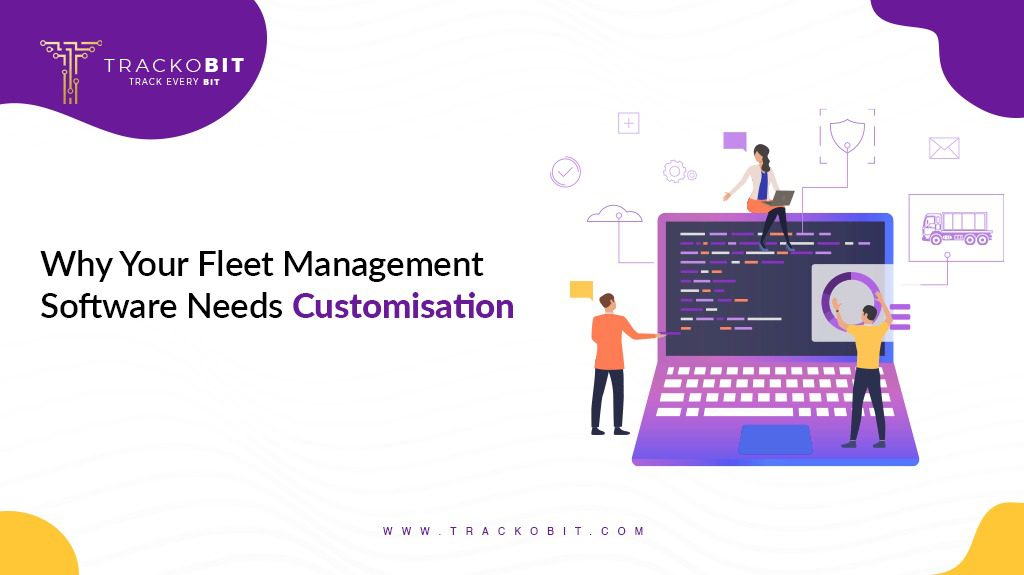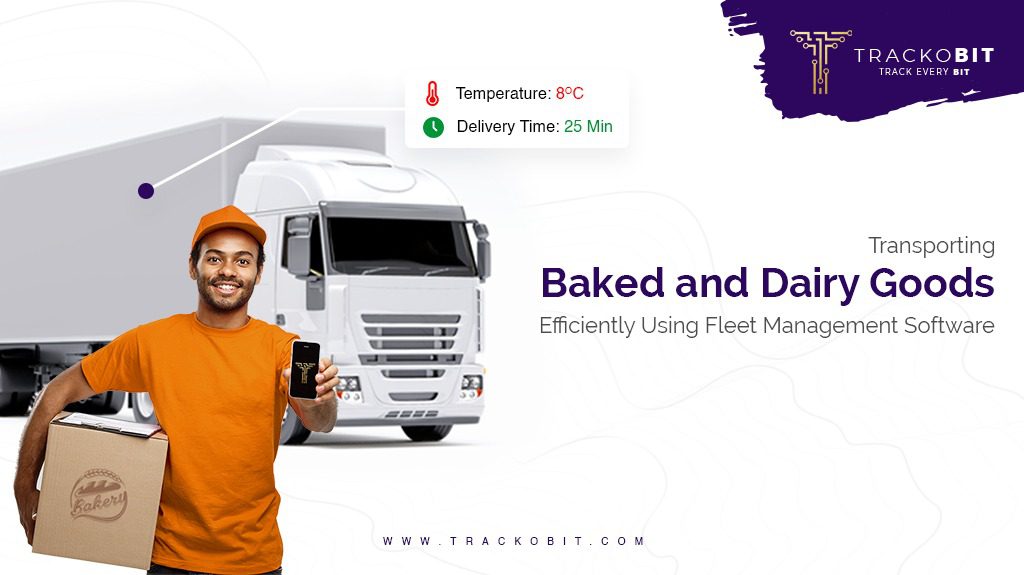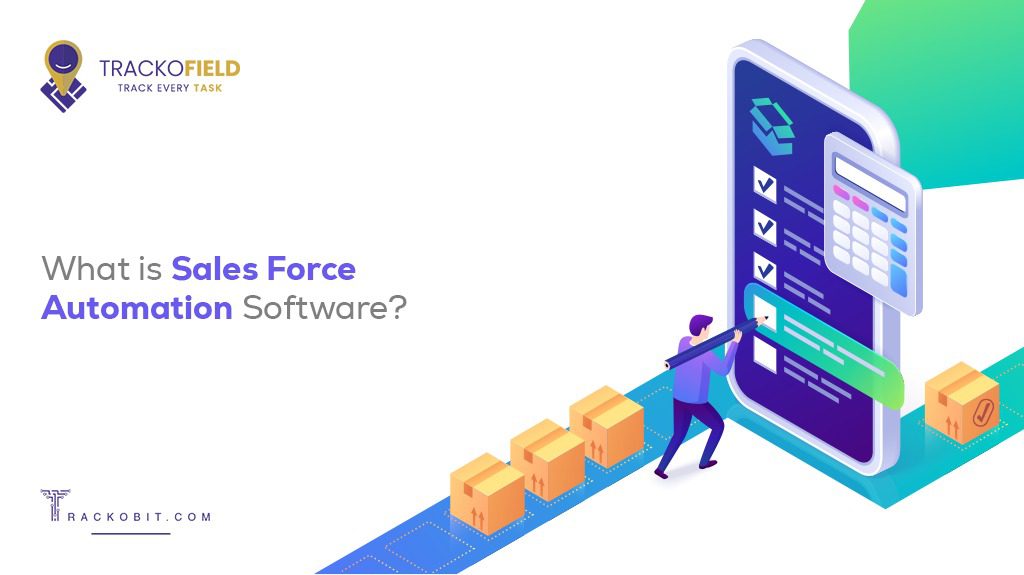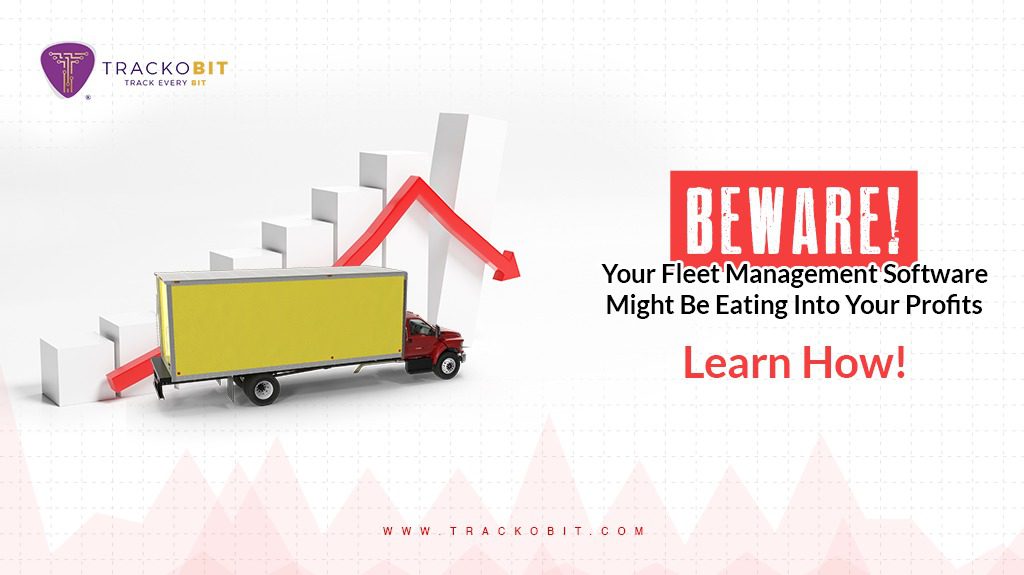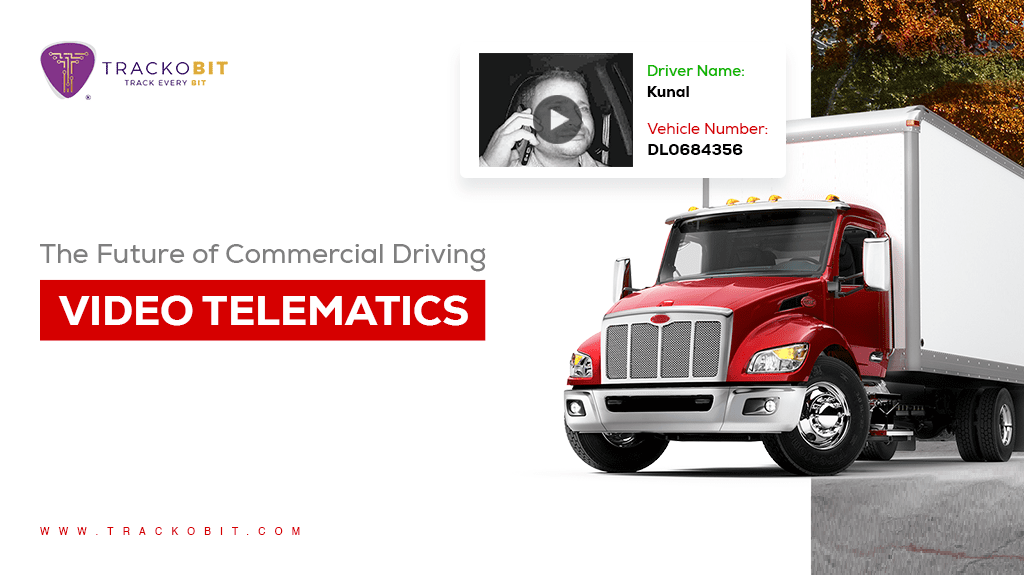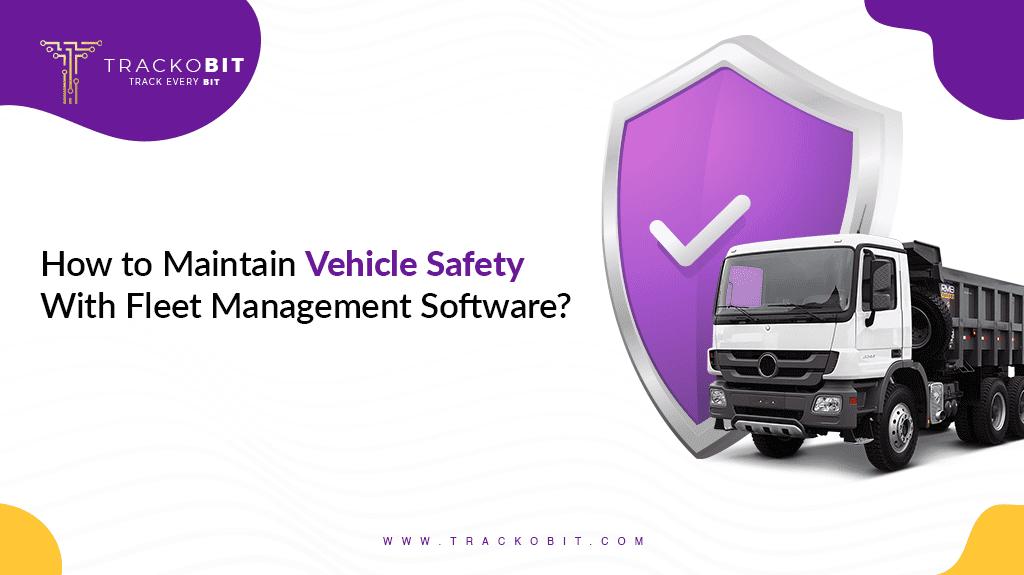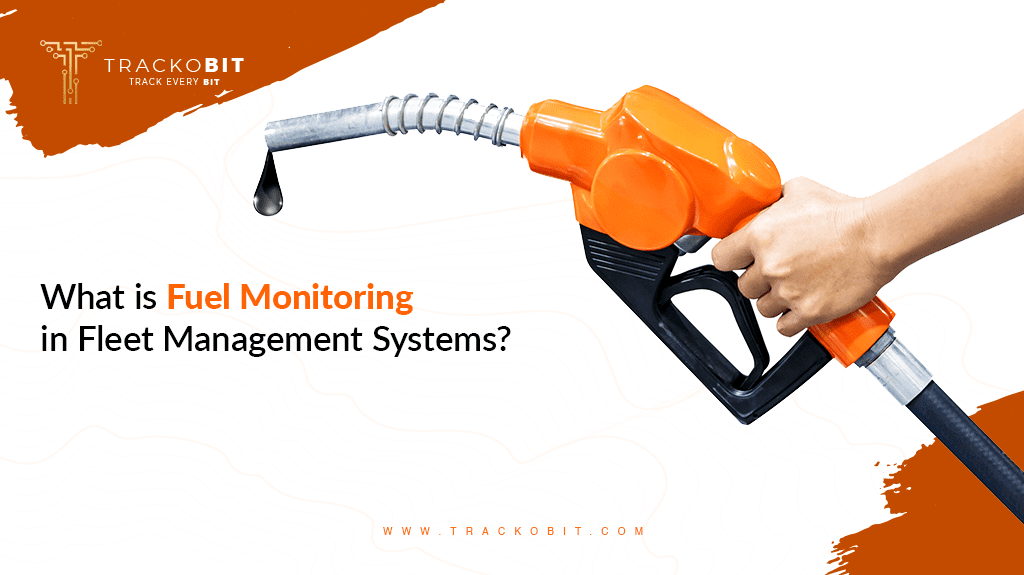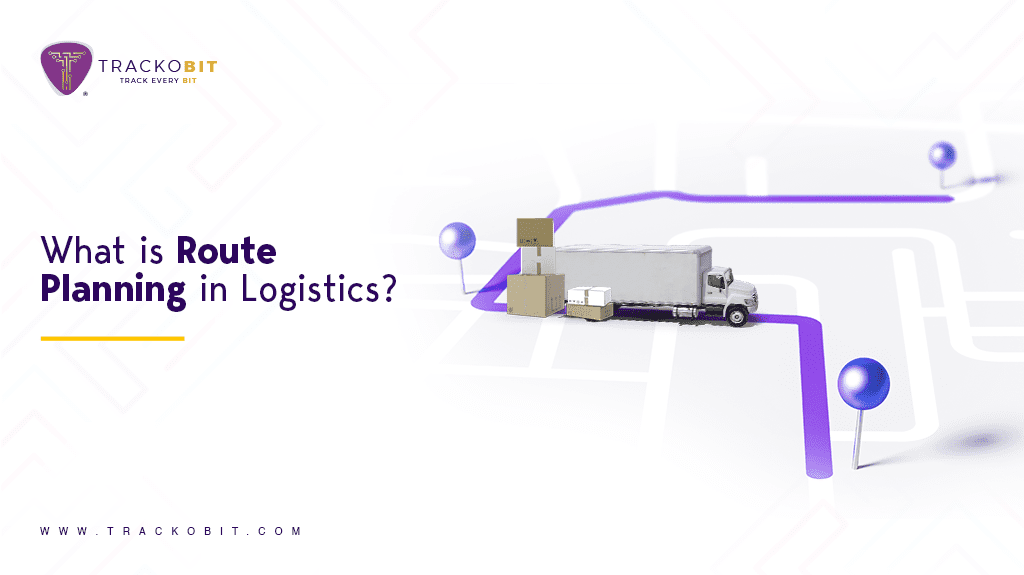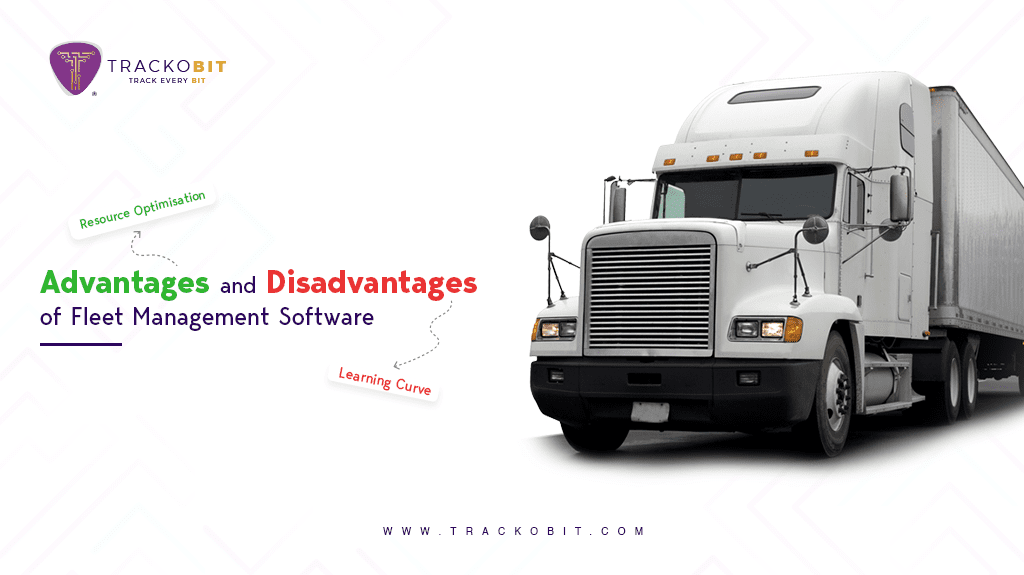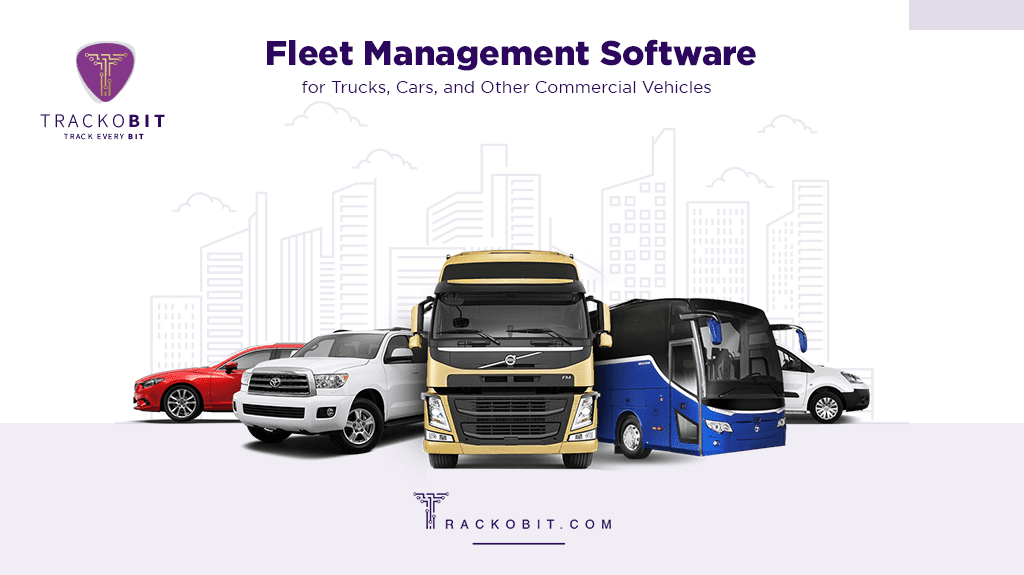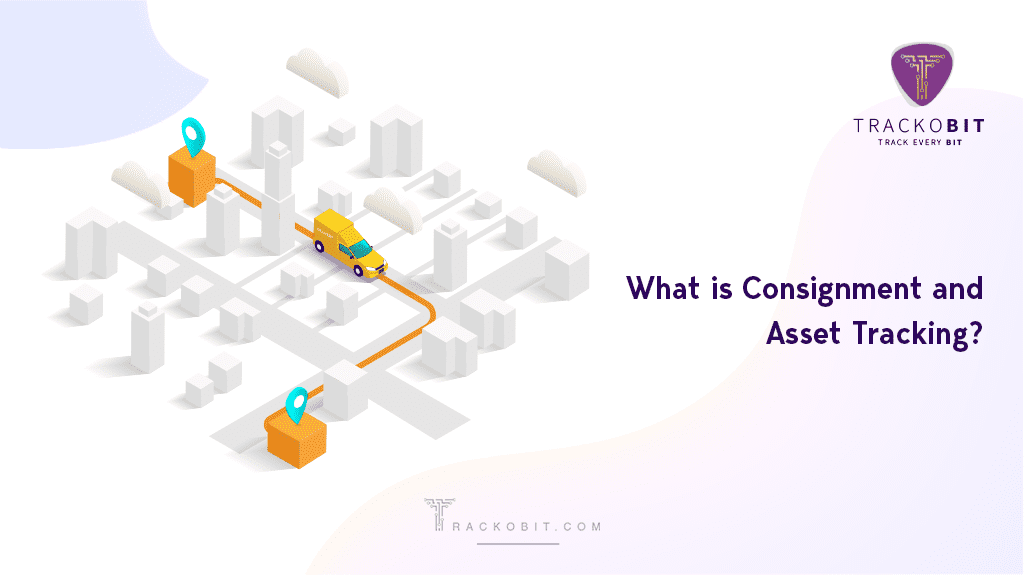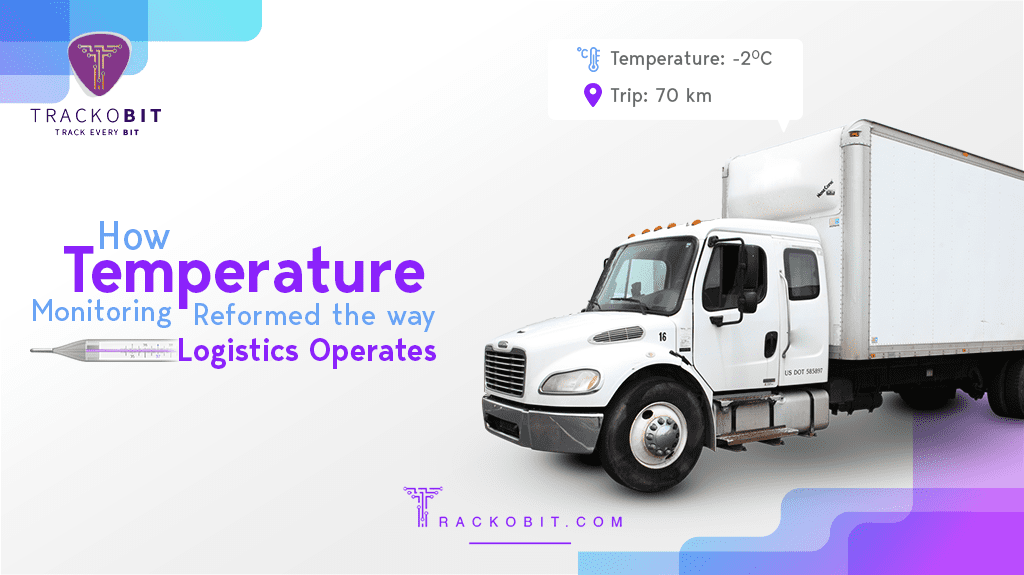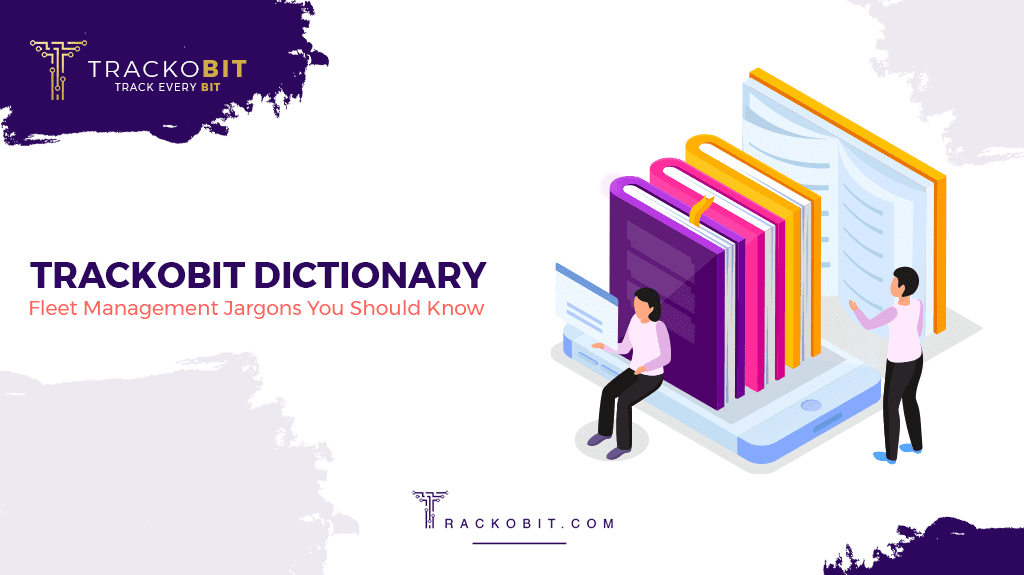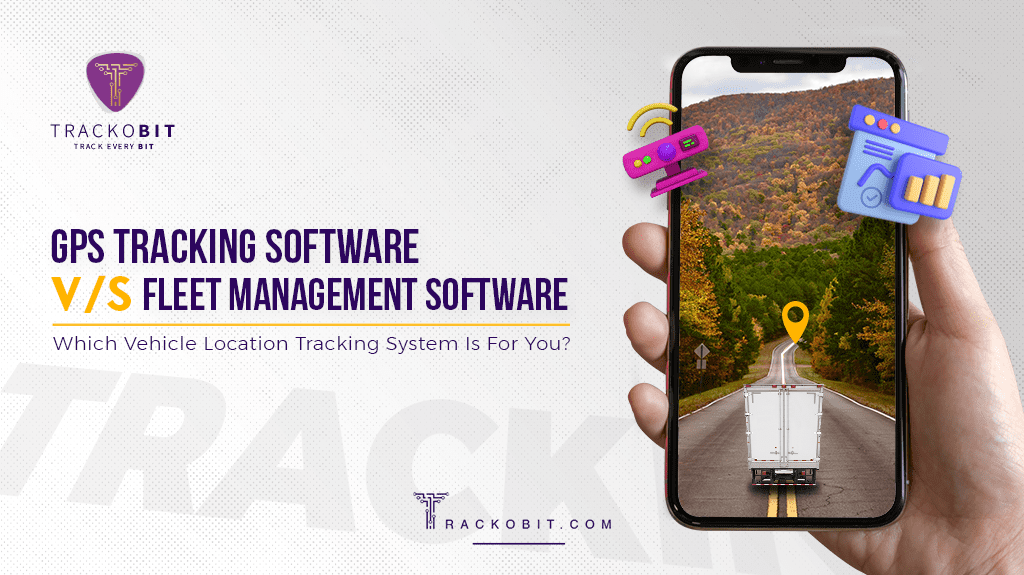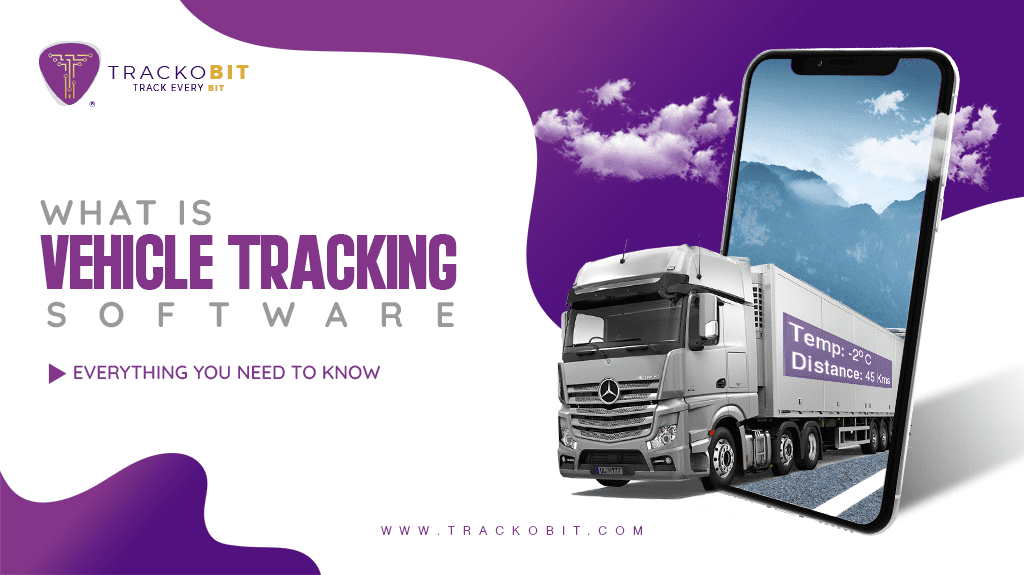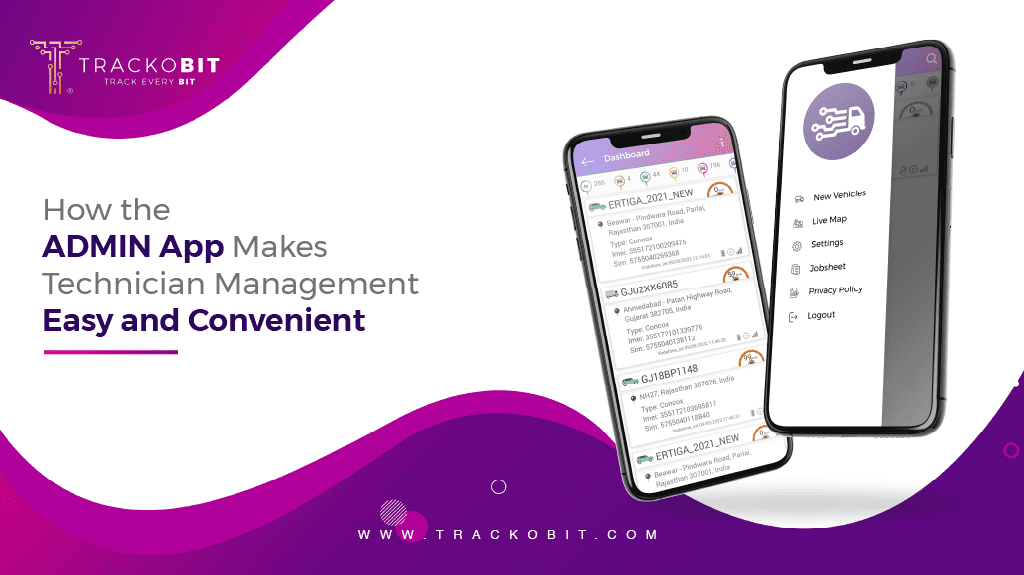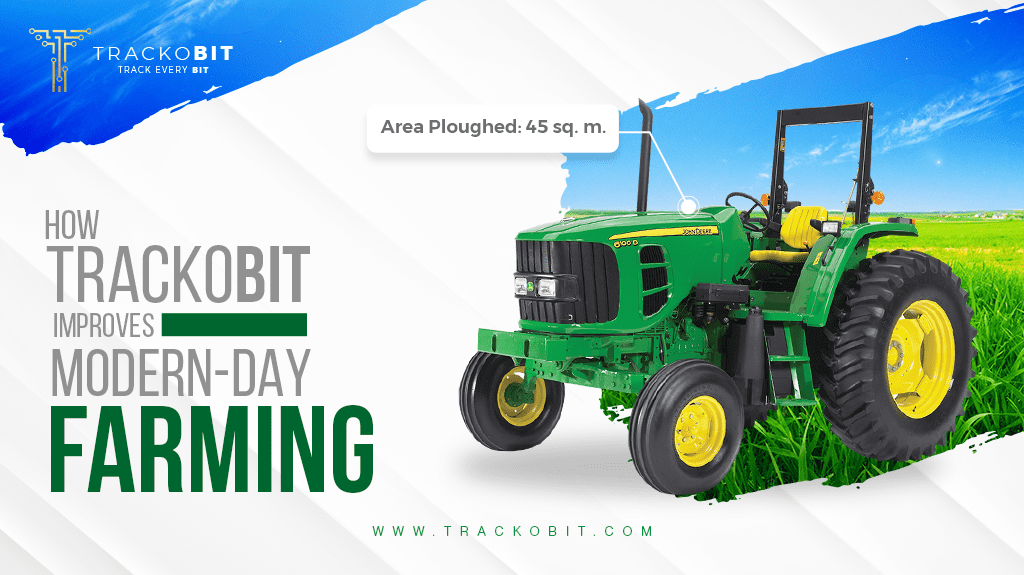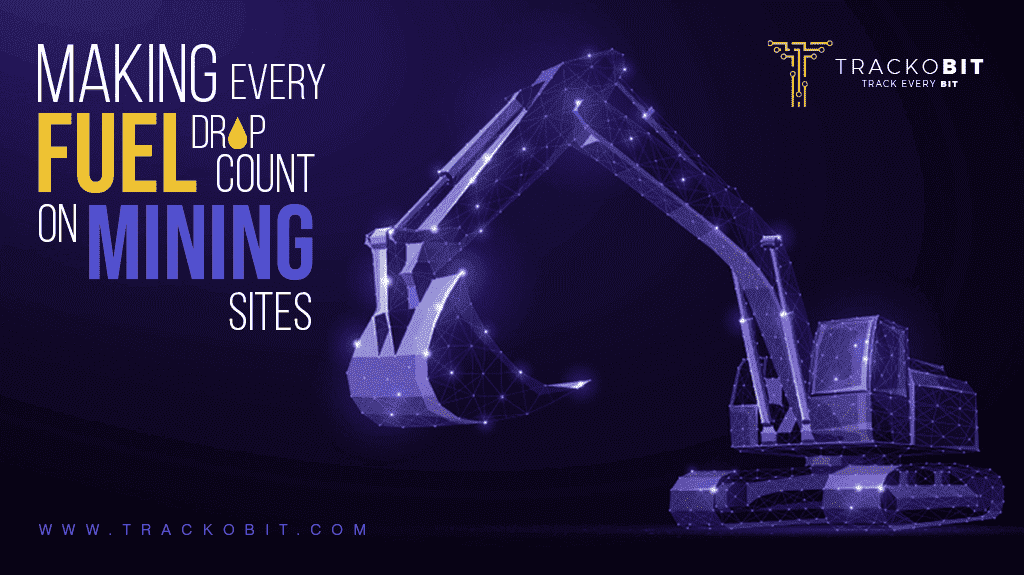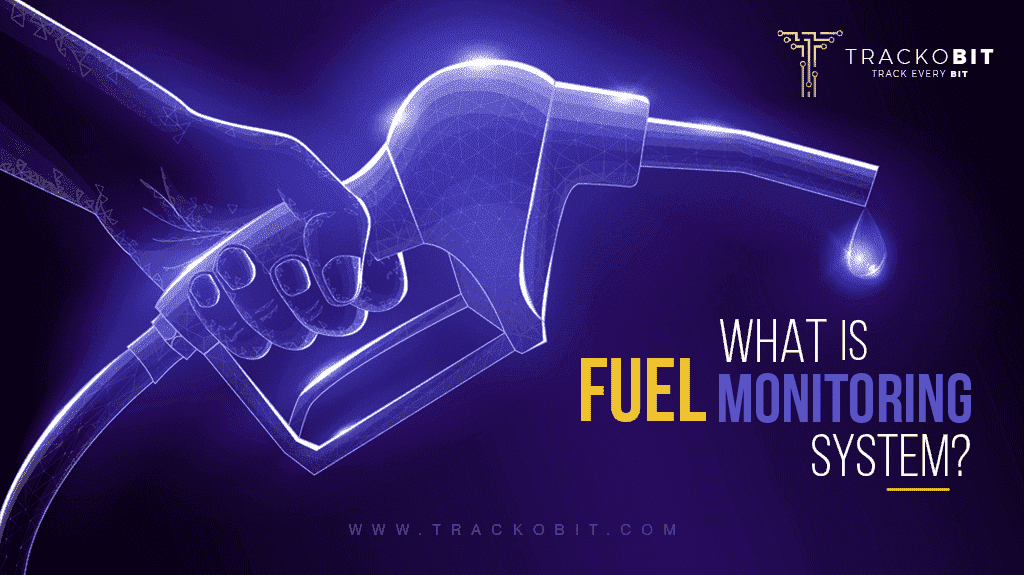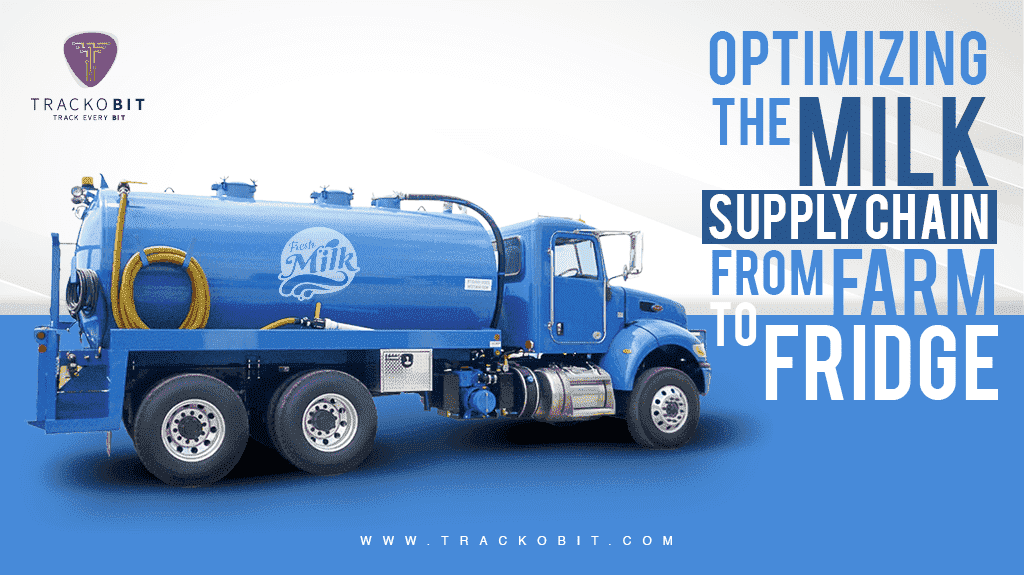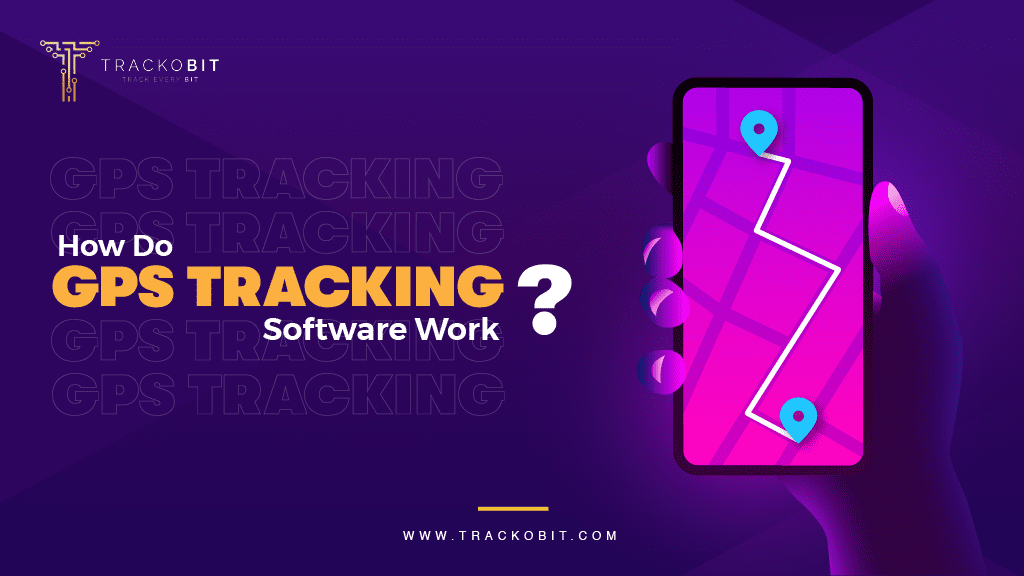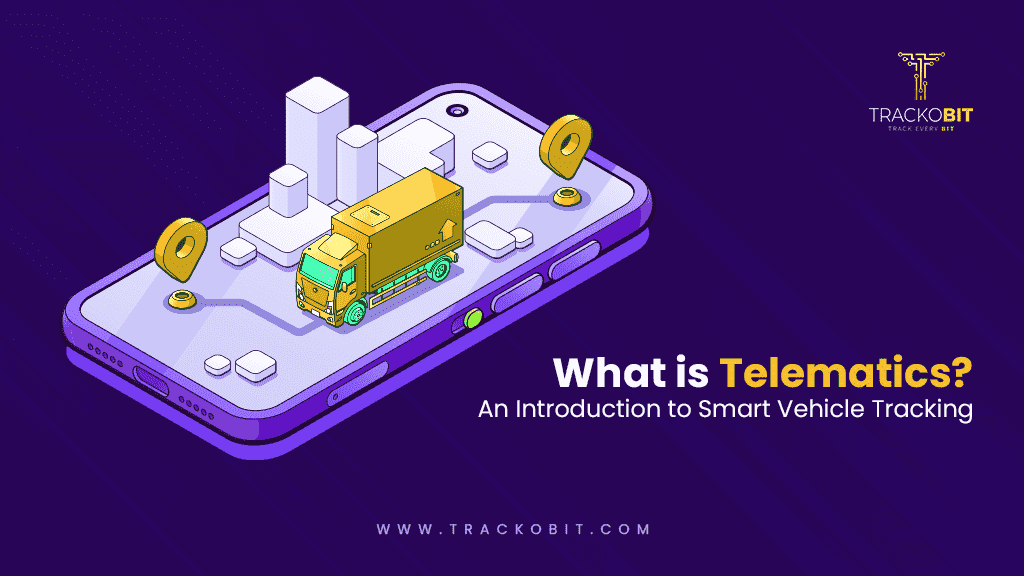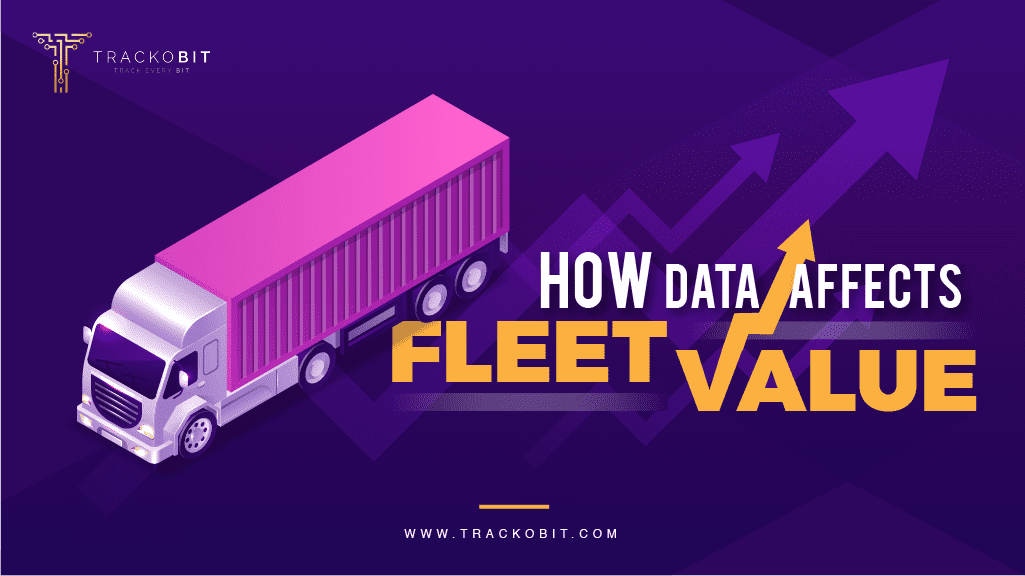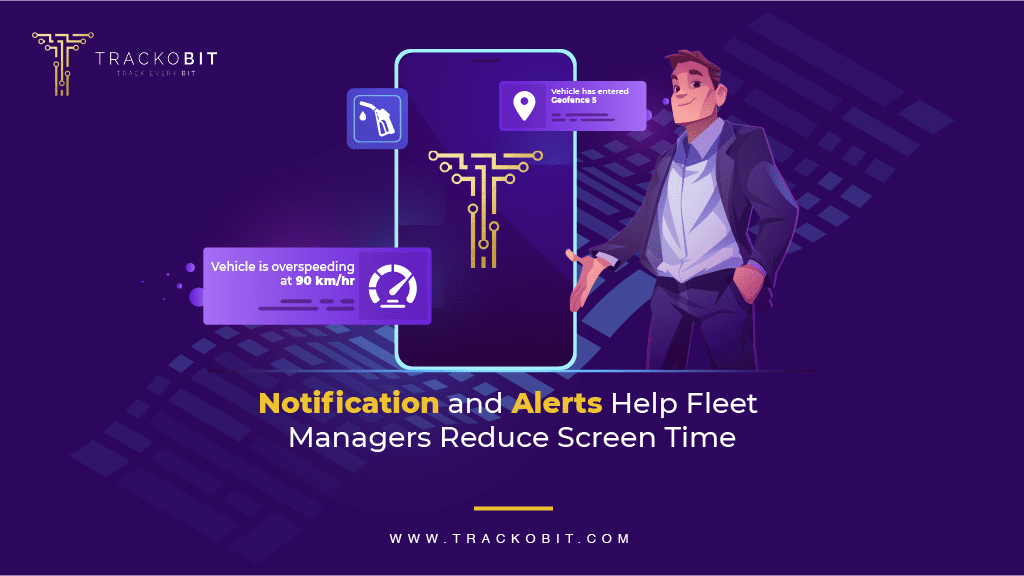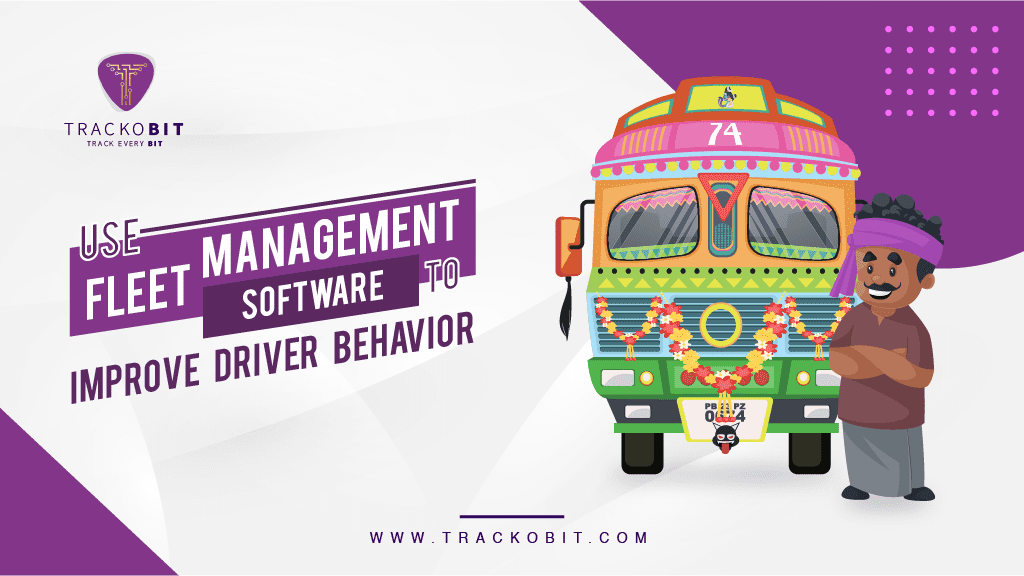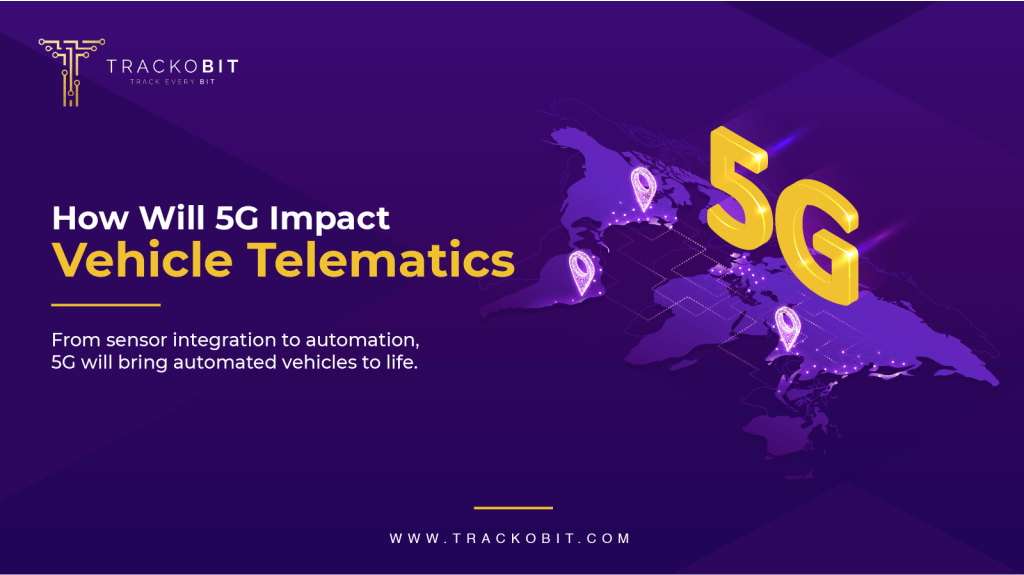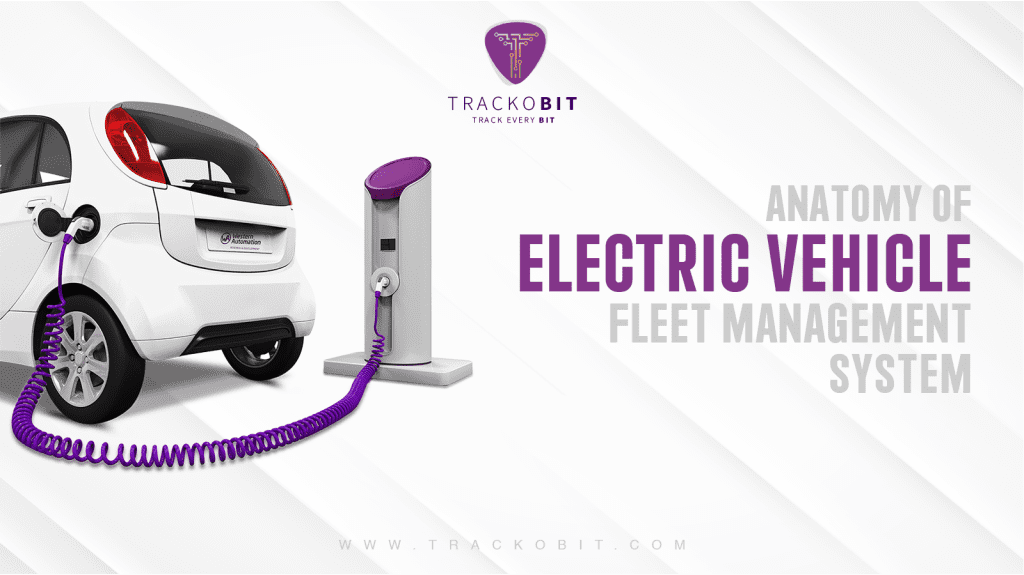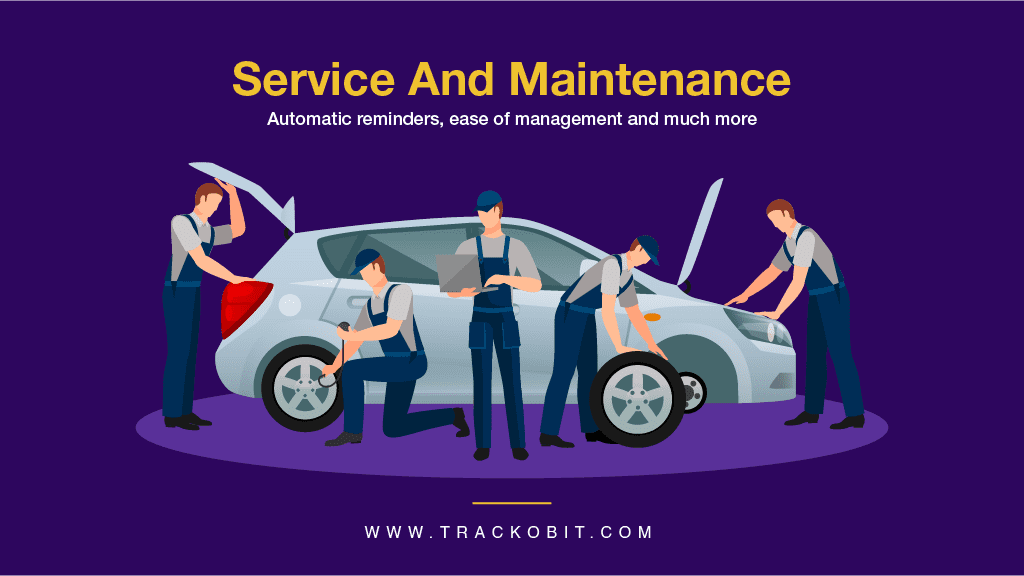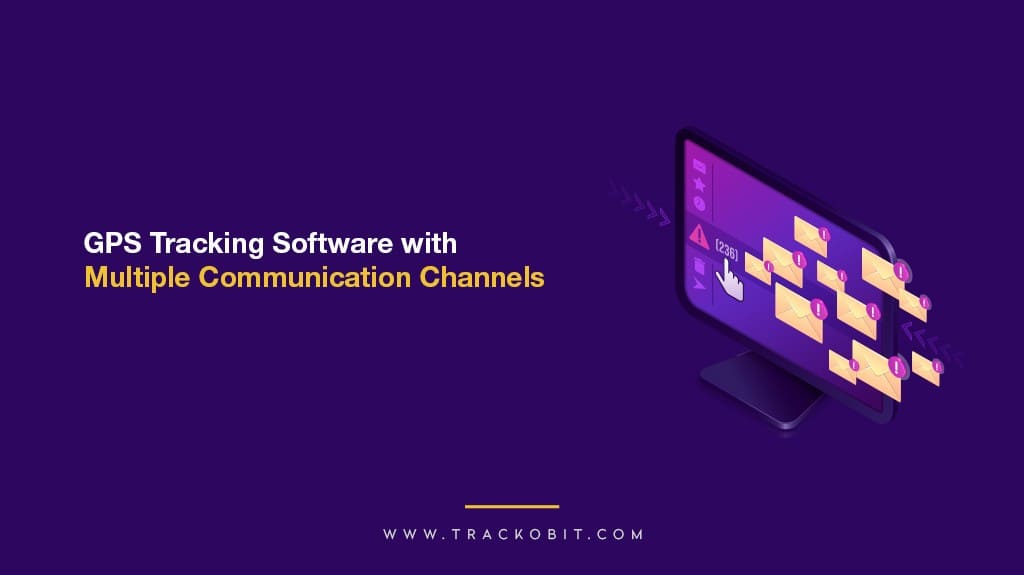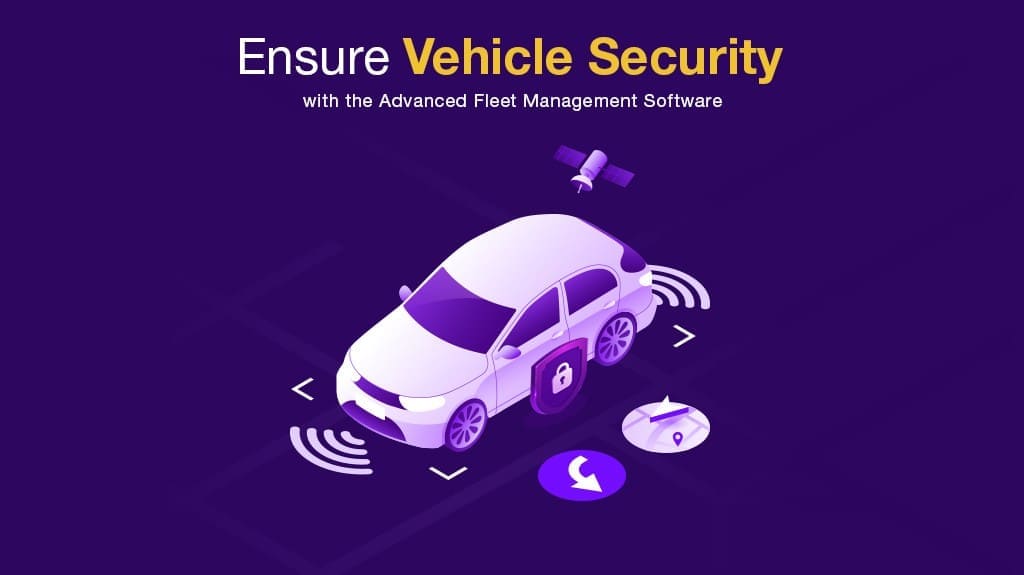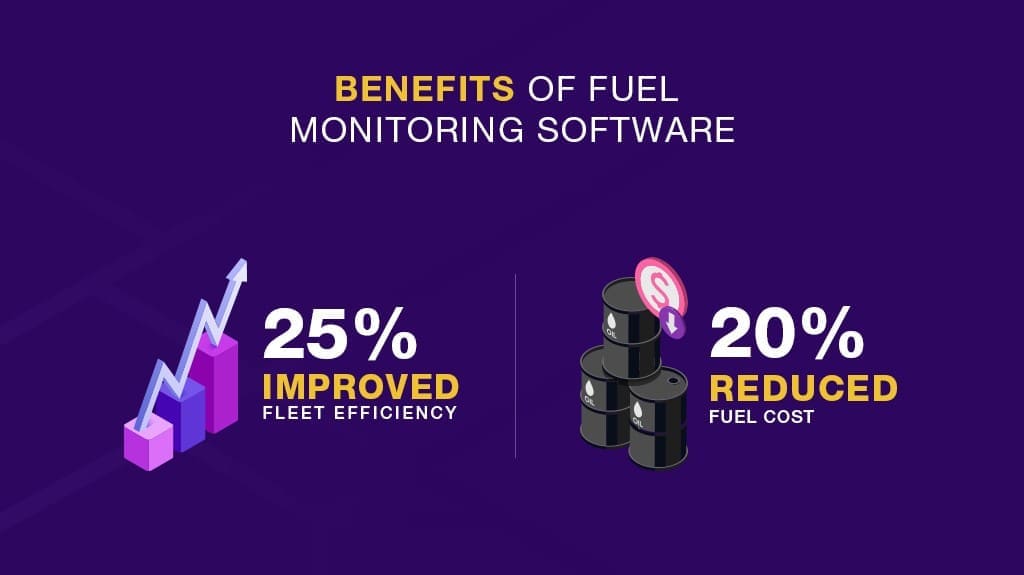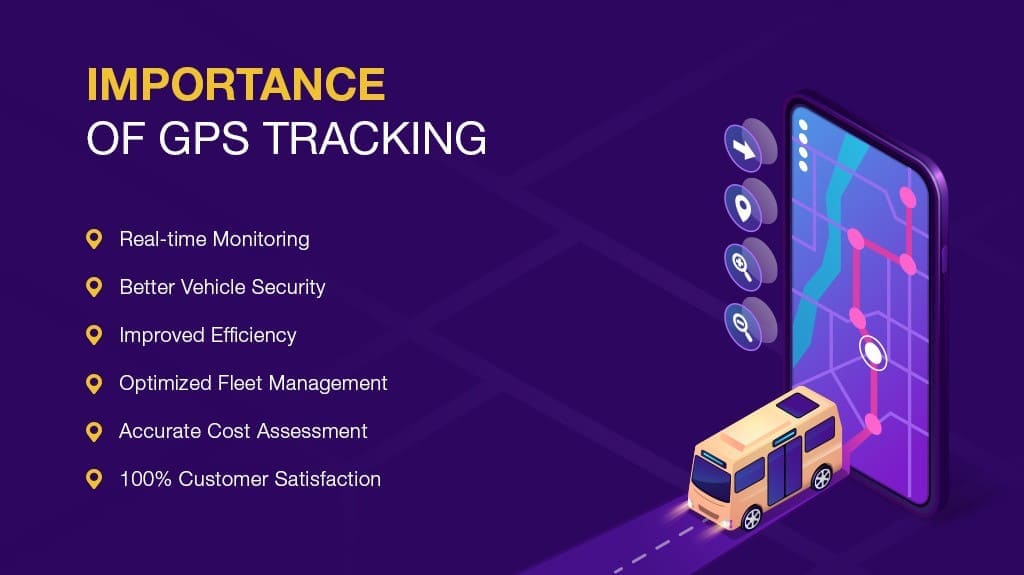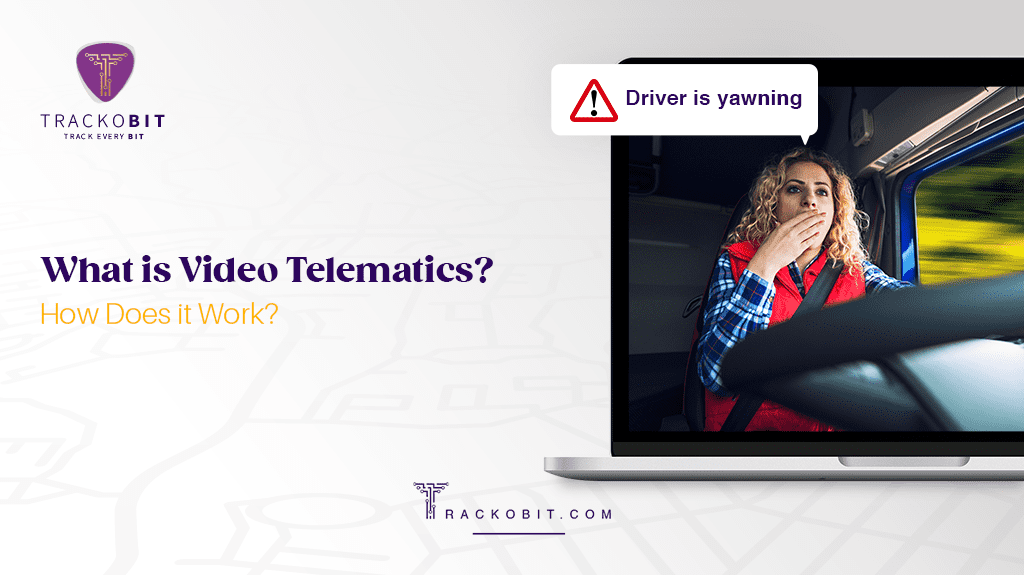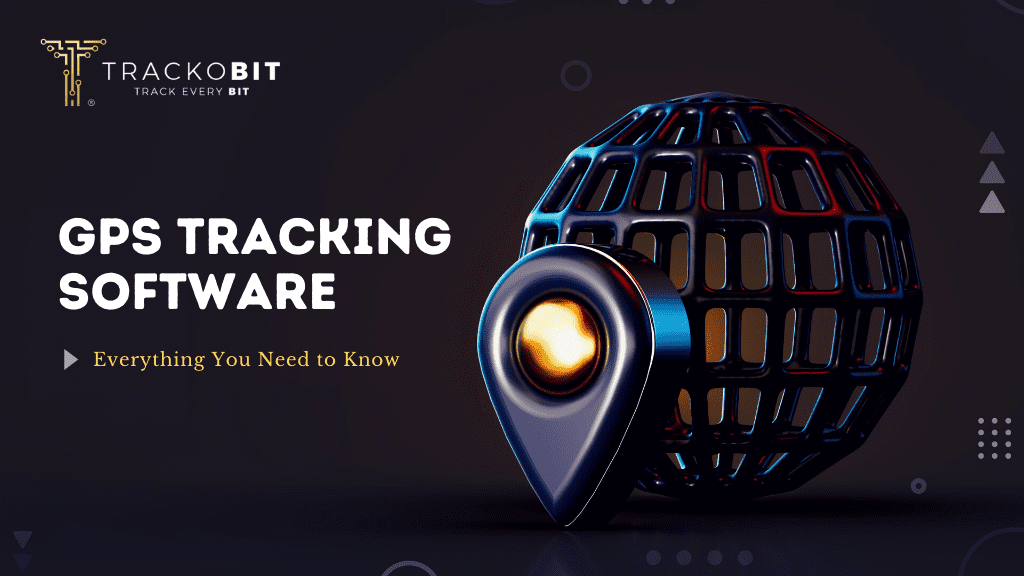Choosing the Right Fleet Management Software: Everything You Need to Know
- Author:Ayushi Nagalia
- Read Time:6 min
- Published:
- Last Update:November 22nd, 2023
Categories
Table of Contents
ToggleCategories
- Asset Tracking
- Company
- Dispatch Management
- Driver Behaviour
- Electric Vehicle
- Employee Management
- Field Sales And Service
- Fleet Management
- Fuel Management
- GPS Software
- GPS Trackers and Hardware
- Last Mile Delivery
- Lead Management
- Leave And Attendance
- More
- Roster Management
- Route Optimisation
- Route Planning
- Sensor Integration
- Task and Workflow
- Tech and Beyond
- Telematics
- Topical
- TrackoBit
- TrackoBit Industries
- TrackoField
- TrackoField Industries
- TrackoMile
- TrackoMile Industries
- Vehicle Tracking
- Video telematics
- What's New
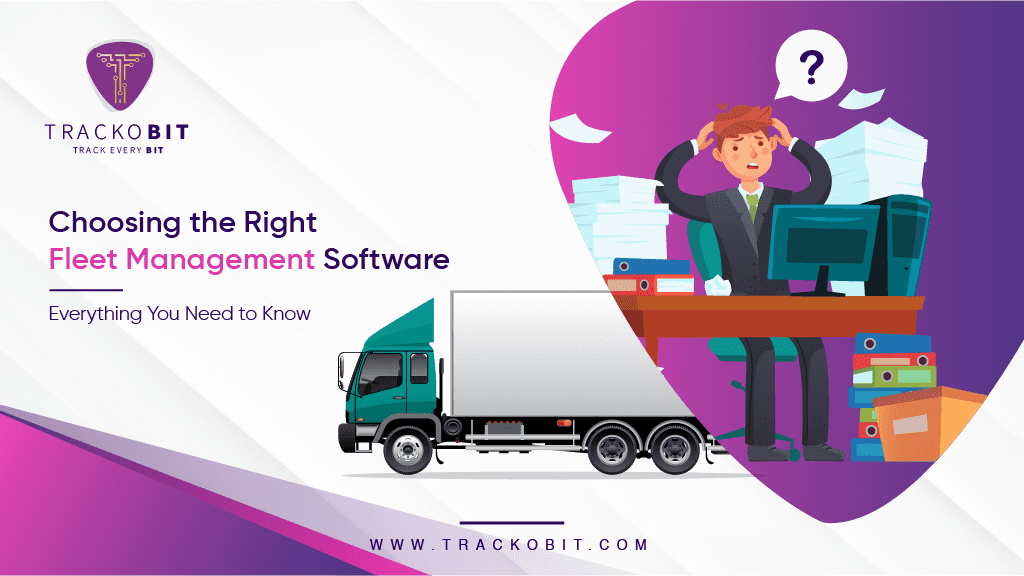
Fleet management systems have grown immensely in recent years. So much so that you will need sophisticated software to collect, manage, and effectively use all possible data.
Table of Contents
ToggleIt is only then that you can make the most out of your fleet management journey.
The software you choose largely impacts overall fleet performance and effectiveness. So, you need to be careful while choosing the right fleet management software for your business.
Things to Look For While Choosing the Best Fleet Management Software
Choosing the right software can be challenging because of the variety and competition in the SaaS market. Don’t worry, though! We are here to help you make the right decision. Here are a few things you should carefully review before you choose the one you’d like to work with.
1. Industry
Be aware of the tracking features and functions required in your industry. Once you have identified your requirements, you can see if the software you like solves all your concerns.
Here are a few industries covered by fleet management software along with their special requirements:
- Logistics and Transport: Features such as route deviation alerts, real-time ETAs, fuel monitoring, on-board vehicle analysis, and driver behavior analysis are important for the logistics and transport industry.
- Field Force: FFM requires a two-face app for different levels of employees. You should look for features such as task management, attendance, chat integration, and expense management along with real-time GPS tracking facilities.
- Construction: The construction industry requires real-time emergency alerts, load sensing, engine hour monitoring, and smart geofences. Software strength indicators such as low downtime and mixed asset management should be your priorities.
- Agriculture: The agriculture industry requires smart geofences for data-driven farming supervision of cultivated areas. Safety features such as engine on/off indicators and immobilization are an added benefit.
- Pharmaceutical: When running a pharmaceutical fleet, you will need cabin temperature controls and route optimization. Medical equipment transportation needs software support that obviates downtime or lags.
- FMCG: For vehicles carrying FMCG consignment, vehicle security and cabin temperature management become imperative. The ideal software offers accurate ETAs along with load sensors and proofs of delivery through alerts or geofences.
- Public Transport: Public transport requires driver behavior analysis. The better the drivers, the better and safer the public transport service! Moreover, panic button integration and route planning will enhance the software experience.
- Waste Management: Waste management requires strict route planning and load sensing along with a longer history record.
- Rental Vehicles: Features such as travel summary reports, driver behavior analysis, on-board vehicle diagnostics, and fuel management play an important role in rental vehicle management.
2. Essential Features
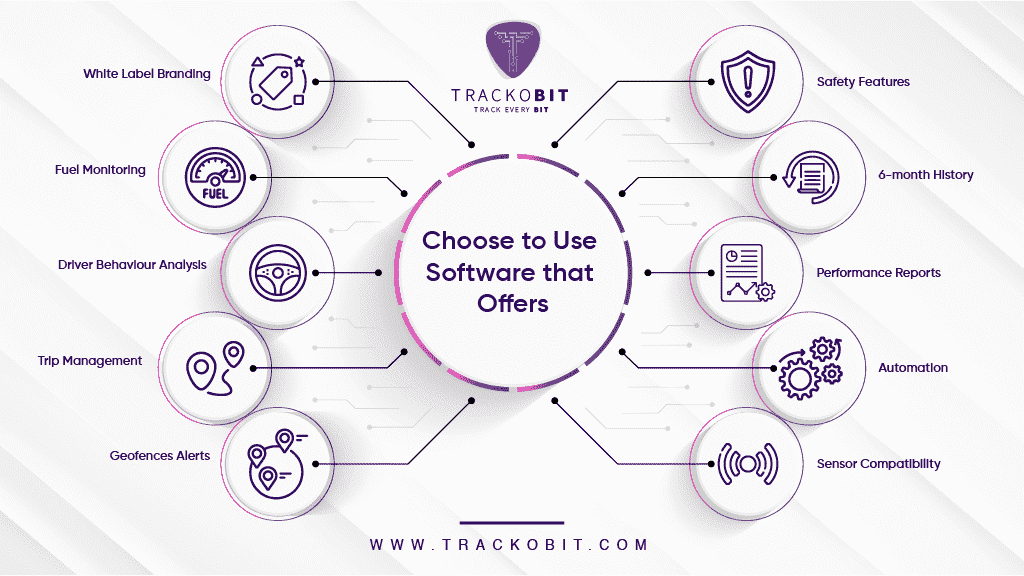
When looking to enhance your fleet management system, you should consider if it offers the features that will take your fleet management game a step further.
- White Label: Why advertise another company when you can operate the software in your name? If your fleet management software is going to become popular news, it is best to choose a white-label software service that will do all the technical stuff for you but will allow the software to be branded in your business’ name.
- Fuel Monitoring: Fuel monitoring features such as instant drainage reports and real-time fuel monitoring paired with precise reports make fuel management much easier. Fuel monitoring is imperative to avoid wastage and its subsequent impact on the environment and fleet economy.
- Driver Management: Driver behaviour analysis leads to massive cost savings. Therefore, your fleet management should be able to help you single out rash drivers from the good ones. You can then train problematic ones to drive effectively and safely to improve efficiency.
- Trip Management: Software allows you to plan and map trips according to smart insights through geospatial information. Trip management is a great way to get your drivers to stop taking unnecessary halts or longer routes.
- Geofences: Geofences are a great way of keeping track of your vehicles even when you are not looking at the vehicle movement in real-time. Moreover, geofences can be used for rental business supervision and driver behaviour analysis among other things.
- Alerts: Things such as theft alarms, geofence alerts, maintenance alerts, and route deviation alerts are crucial. These alerts allow you to manage your fleet without being glued to your fleet management system.
- Safety Features: Using software for fleet management allows you access to safety features such as remote immobilization, battery safety alarm, and theft alarms. It is best to invest in software that increases fleet efficiency and safeguards both your vehicles and consignment.
- Performance Reports: Through performance review reports, you can improve the business and metric analysis required for your trade.
- History: Most software only have database capability to store 1-2 months of total fleet data. However, for comprehensive performance reports, you will need software that can store up to 6 months of data history.
- Sensor Compatibility: Using IoT and OBD sensors such as accelerometers and tyre pressure monitors gives you a better image of the vehicle and driver performance. Moreover, cabin temperature monitors are imperative for cold-chain logistics.
- Automation: The future of telematics lies in machine learning and automation. Therefore, smart ETAs, automatic reporting, alerts, etc. make a significant impact on your overall fleet efficiency and user experience.
3. Ease of Use
Are you turning to software fleet management directly from a completely manual format? Many fleet managers feel apprehensive about this shift because of how difficult getting the hang of software can be. Therefore, you should choose software that has an interface you can understand and use.
First of all, the software should be built with a user-friendly approach in mind. However, if the software provider offers the following three things, it is likely to be ideal for you:
- A strong support team with spectacular availability
- Basic training to clients regarding basic troubleshooting
- Complete customization according to your comfort of use.
4. Customer Support
As mentioned previously, any software that offers good customer support leads to ease of usability. You should always check what a software company’s support team looks like. Here are a couple of questions you can ask before making a decision:
- Do they have a dedicated support team?
- Is the support team readily available at reasonable hours?
- How will I get through technical issues at unreasonable hours when the support team is not available?
- Is the support paid or complementary?
Only when you are satisfied with all the above answers can you consider using the software in question.
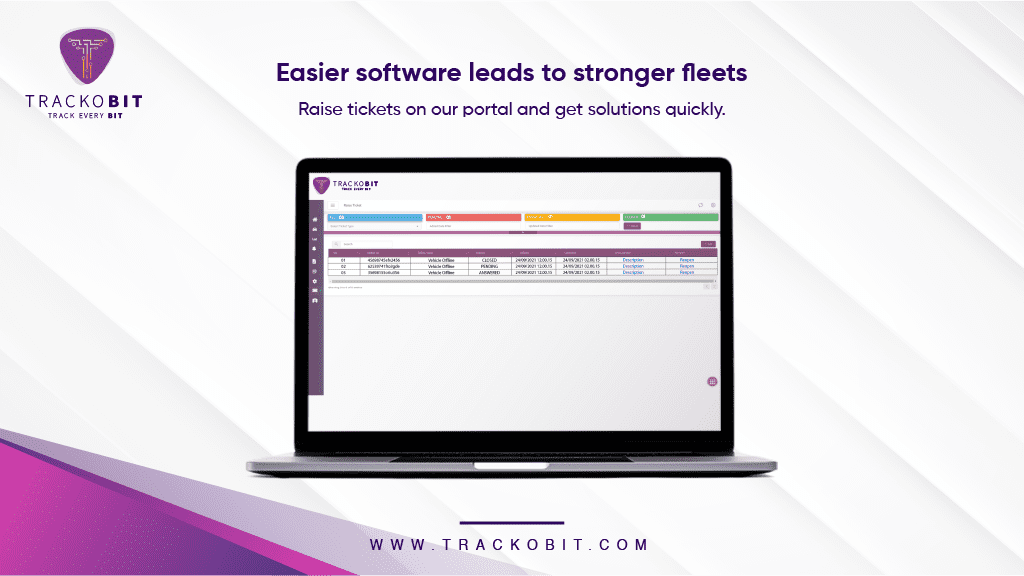
5. Speed and Robustness
During software demos, observe how well and quickly any software collects, processes, displays, and syncs data.
While software crashes are terrible, a lag in software is no better and takes away the essence of ‘real-time’ from real-time GPS tracking systems. You should put preference into the software with the least downtime.
Moreover, you need to check how immune those software are against viruses and cyber attacks. This is especially important to avoid constant crashes or data theft.
6. Upgrades and Scalability
The best way to know if the software is good for your business is if their actions favor your growth and scalability.
You might start using fleet management systems with a small fleet of 10 vehicles. However, you might slowly rise to a fleet of 100 or 1000, or even more! Therefore, the software you choose should have space and data processing capability for your growing business.
Your software provider should be dedicated to conducting R&D and providing upgrades to solve your industry-specific problems.
7. Budget
When it comes to choosing the right software for a business, you should keep the difficult metrics of budget in mind. We suggest you figure out what you need from Trackobit software-based fleet management, shortlist two or three software you like. Later, compare their prices to get the one that matches your budget perfectly.
While forming a fleet management budget, however, it is important to note that software will eventually reduce your expenses. Therefore, you can form a price benchmark considering the future savings as well.
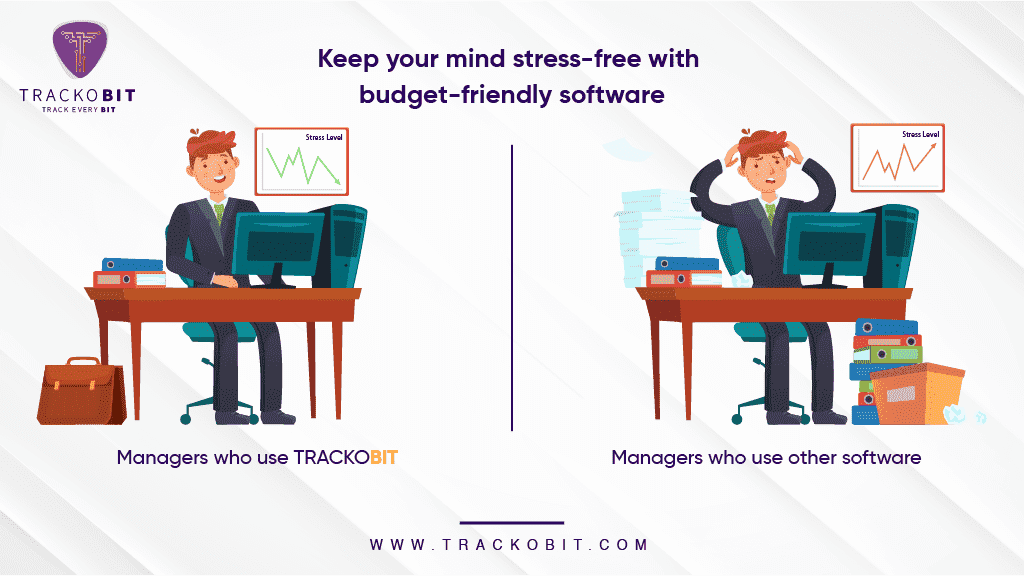
Parting Words
Fleet management can be made as simple and as complicated as you let it be. If you use the right software, your job can become as simple as breathing. However, using outdated software will only lead to more difficulty as compared to manual fleet management.
Make sure that you consider all the things mentioned in our checklist and come to an informed decision!
Ayushi Nagalia
Ayushi Nagalia is a Senior Content Specialist at TrackoBit. She is passionate about music, writing, and reading. When not abusing her keyboard, you will find her lost in her playlists or organizing things.
Related Blog
-

Why is Fleet Asset Tracking Software Important? (Top Reasons + Use Cases Listed)
Nandita Gupta 18 April 2024Asset tracking software is an all-rounder that lets you live track your powered or unpowered assets like trailers, containers, consignments. Discover how it ensures your assets are end-to-end protected and walking on the shortest routes!
-

How do Construction Companies Use GPS Tracking Systems?
Anvesha Pandey 12 April 2024Unfold how GPS tracking system helps construction industries maximize the visibility and efficiency of multiple equipment, right from towers to earth-moving equipment, service vehicles, and heavy trucks.
-

What is Logistics Management?
Tithi Agarwal 8 April 2024Logistics management is a component of supply chain management that is vital for meeting customer demands through the effective planning and optimised transportation of goods from origin to final destination.
-

7 Smart Tactics to Improve Fleet Management ROIs – Secret to More Profits
Nandita Gupta 2 April 2024Explore how investing in a fleet management system can help businesses minimise their operational costs & challenges while maximising ROI tenfolds.
-

Is GPS Fleet Tracking Software Suitable for Small Business?
Anvesha Pandey 28 March 2024Wondering how GPS fleet tracking solutions can turn out to be beneficial for your small business? This piece of writing delves into how you can save costs and maximize profits with the technology.
-

Advantages and Disadvantages of Advanced Driver Assistance Systems
Nandita Gupta 28 March 2024Do you know each year approx. 1.19 million people die due to road crashes? That’s concerning!
-

What is a Driver Monitoring System & How Does it Work?
Anvesha Pandey 22 March 2024Driver monitoring systems with fleet management software is a multi-faceted procedure to protect your fleet and drivers. Here’s the working of efficient driver monitoring systems.
-

What is EV Fleet Management Software? Benefits & Features
Nandita Gupta 21 March 2024Learn what is EV fleet management software and how it helps in remotely managing, monitoring, and maintaining EV fleets while preventing operational costs and breakdown.
-

How Does IoT Vehicle Tracking Systems Improve Driver Safety?
Anvesha Pandey 13 March 2024Curious to know about the world of IoT and how this technology is safeguarding your drivers? If yes, this piece is you. Explore how IoT has amped up the level of driver safety.
-

Top 11 Fleet Management Software Providers in 2024
Anvesha Pandey 11 March 2024Are you one of those fleet managers who wish to incorporate fleet management software, but are confused about which one to opt for? Then this guide is for you as it delves into the top 11 options available for you.
-

7 Key Benefits of GPS Tracking System
Anvesha Pandey 7 March 2024Are you keen to know what are GPS Tracking systems and how they benefit your fleet operations? This comprehensive guide lets you know starting from its meaning to the array of benefits the system provides.
-

Understanding the Differences Between GPS Tracking and Telematics
Anvesha Pandey 28 February 2024Confused between telematics and GPS tracking technology? Read on to learn how these two are similar and dissimilar in terms of functions, data collection, and more factors.
-

Electronic Logging Devices- A Closer Look
Anvesha Pandey 16 February 2024Searching for a guide to learn everything about electronic logging devices? In this piece, discover how ELDs work and help fetch accurate information about driving time, engine speed, etc. The exact cost is explained inside!
-

AI Dashcams- Working, Features, and More!
Anvesha Pandey 5 February 2024Googling about AI dashcams? Wait, Here is a detailed guide on everything revolving around AI dashcams, from their definition to the need to incorporate one, Everything!
-

What is Line Haul Transportation?: Explained
Tithi Agarwal 1 February 2024Line haul transportation – the perfect solution to getting the goods delivered from one port to another depot in less time and cost. Discover what it is and its benefits in this article.
-

What is a Driver Scorecard? Why is it Important?
Nandita Gupta 30 January 2024Explore what is a driver scorecard in fleet management solutions. Know how scoring drivers is the best way to improve driver performance and save on hefty maintenance costs.
-

What is Geofencing? Types & How It Works?
Anvesha Pandey 24 January 2024Googling about geofencing? Here is a guide that is going to answer all your 5Ws and 1H’s about everything revolving around geofencing.
-

Why is My Engine Idling High? Answering the Most Asked Question
Anvesha Pandey 17 January 2024High engine idling can be a concerning issue which can add to heavy fuel bills. Read on the potential reasons and solutions to deal with them.
-

Advantages and Disadvantages of Dashcam
Tithi Agarwal 10 January 2024Are you on the fence about installing dashcams in the vehicles? Well, here is a detailed list of the advantages and disadvantages of dashcams that will help you make your decision.
-

What is Hotshot Trucking?
Tithi Agarwal 2 January 2024Here is a quick guide to getting your load delivered quicker- hotshot trucking. The new trending solution to delivering time-sensitive and smaller load on time.
-

10 Best Dash Cam for Vehicles – With Quality & Affordability
Nandita Gupta 20 December 2023Here are the top 10 high-end, reasonably priced dash cameras for vehicle tracking. Which one is the best choice? Let’s find out!
-

Only 5 Ways to Stop Diesel Theft! Time to Save Money
Nandita Gupta 6 December 2023Experiencing constant diesel theft from your fleet? Or fearing one day you might? Here are 5 smart ways to stop diesel theft (without delay). Act before you are required to react.
-

6 Types of Vehicle GPS Trackers – For Fast & Accurate Tracking
Nandita Gupta 30 November 2023Here are the top 6 GPS trackers that help ensure real-time visibility and safety of the fleet with precision and accuracy.
-

6 Ways GPS Tracking Ensures Asset Protection
Tithi Agarwal 29 November 2023Discover how GPS trackers in combination with GPS tracking software is helping you not only protect but also optimise asset utilisation in 6 ways. Let’s get rolling.
-

How to Navigate Logistics Challenges During Festive Season Sale
Tithi Agarwal 24 November 2023Black Friday and Christmas are around the corner, the busiest and most chaotic time for logistics businesses. Know which last-mile delivery strategies can help ensure smoother operations.
-

Top 8 GPS Jammers Myths Busted – For Full & Final
Nandita Gupta 22 November 20238 Myths around GPS jammers busted in this piece! Are they legal to use, costly, and easy to own? Find your answers within 5 minutes!
-

Implementing Real-time Tracking For Fleet Management
Tithi Agarwal 26 October 2023Looking for ways to improve and optimise your fleet operations? Then real time tracking in combination with fleet management software is the real deal as it provides visibility into every aspect of the fleets.
-

Top 5 Supply Chain Technologies Boosting eCommerce Industry
Nandita Gupta 25 October 2023Read which top 5 supply chain technologies are worth adopting for eCommerce brands like yours in 2023 to increase efficiency, resiliency, and responsiveness.
-

Top 6 Green Fleet Technologies for Sustainable EV Fleet
Nandita Gupta 18 October 2023Explore which 6 technologies for a sustainable EV fleet to expect next for a carbon-neutral nation. How sustainable EV Fleet management is the need of the hour!
-

What is Real-Time GPS Tracking?
Tithi Agarwal 16 October 2023Real time GPS tracking is vital for businesses that have on-the-field employees, remote assets and vehicles. Tracking them helps to improve and optimise operations.
-

Top 12 Fleet Management KPIs – Bookmark Before 2024 Ends
Nandita Gupta 13 October 2023Explore the top 12 fleet management KPIs that will help you determine your logistics company’s operational, financial, and strategic achievements.
-

9 Reasons to Buy a GPS Tracker for Vehicles
Tithi Agarwal 6 October 2023GPS trackers for vehicles can do away with all your worries when it comes to optimising and gaining the visibility of the vehicles on the road. When combined with a vehicle tracking solution, the results are mind-blowing!
-

What is Pharmaceutical Cold Chain Monitoring? How it Ensures Drug Safety?
Nandita Gupta 5 October 2023Find how pharmaceutical cold chain monitoring systems with continuous temperature tracking and alert systems ensure the safe transportation of temperature-sensitive medicines. Without risking drug efficacy and patient safety.
-

4 Best Route Planner Alternatives (Better than MapQuest)
Nandita Gupta 4 October 2023Find out which MapQuest route planner alternatives are way better in offering optimised navigation and route planning for streamlining any travelling or logistics needs.
-

Top 7 Leading Telematics Companies
Tithi Agarwal 4 October 2023Investing in the best telematics software can help elevate and optimise your fleet operations. Here is a list of the top 7 telematics companies to choose from.
-

How AI Is Accelerating the Future of Automotive Industry
Tithi Agarwal 29 September 2023AI is steering the automotive industry towards an exciting future, empowering self-driving dreams, fortifying safety, foreseeing vehicle maintenance, and championing eco-friendliness.
-

What is Route Mapping – Learn Its Significance, Working, and Benefits
Diksha Bhandari 28 September 2023Get all your queries related to route mapping answered in this blog – Definition, applications and route planning software vs. route mapping software.
-

What is a Fuel Card? 10 Ways How It Helps Save Money
Nandita Gupta 25 September 2023Find how fuel cards are the best way to save money and achieve the fuel efficiency your business deserves.
-

What Is Direct-Store Delivery (DSD)? What Are Its Benefits?
Tithi Agarwal 22 September 2023Direct Store Delivery (DSD) is the perfect method for manufacturers and retailers looking to shorten the supply chain cost and duration. Here’s how it works-
-

How to Add Multiple Stops in MapQuest Route Planner?
Nandita Gupta 21 September 2023MapQuest’s Route Planner with the option to add multiple stops lets your business organise multiple deliveries and take charge of your operational costs.
-

The Role Of TPMS In Preventing Tire Blowouts And Crashes
Yashita Sinha 20 September 2023Explore how TPMS can do wonders in safeguarding your vehicles by preventing tyre blowouts, reducing road accidents and enhancing road safety by maintaining the optimum pressure in tyres.
-

Top 7 Fleet Management Software 2023 – Redefining Logistics
Nandita Gupta 19 September 2023Explore which top 7 fleet management software helps companies organize, manage, and coordinate vehicles from a single platform.
-

What is Location Based Tracking? How it Works? Its Applications
Nandita Gupta 8 September 2023Discover how real-time location based tracking enhances a business’s operational efficiency in fleet management, targeted marketing, and customer experiences. Is it as precise as GPS tracking? Let’s find out!
-

How to Choose the Right GPS Trackers in 2024? 5 Things to Consider!
Nandita Gupta 1 September 2023Choosing the right GPS trackers can make a huge difference in real-time location tracking, ensuring efficient fleet management, and secure monitoring of valuable assets.
-

What is the Future of Trucking Industry? (8 Upcoming Trends!)
Ayushi Nagalia 31 August 2023The future of trucking industry is headed towards smart, autonomous, and electric vehicles. But to what extent? Find out in the blog.
-

11 Popular Myths About Vehicle Maintenance
Tithi Agarwal 25 August 2023There are a lot of myths surrounding vehicle maintenance, which is costing fleet and vehicle owners money and vehicle health. It’s time we clear the air.
-

How to Maintain Fleet Vehicles in Light of Rising Costs?
Yashita Sinha 24 August 2023Rising prices can increase the pressure on fleet managers to efficiently juggle expenses. Learn how to maintain fleet vehicles in light of rising costs.
-

What Is Asset Tracking? Importance, Benefits & How It Works
Tithi Agarwal 18 August 2023Say goodbye to playing hide and seek with your assets as asset tracking software ensures complete visibility of your consignments in real time.
-

10 Best Truck Routing Software of 2023
Ayushi Nagalia 17 August 2023TrackoBit is one of the best truck routing software that’ll enhance your fleet operations. Choose the right match by checking features, scalability, and budget.
-

Telematics For Agriculture And Farming Industry
Ayushi Nagalia 16 August 2023Telematics for agriculture looks like precision farming, automated wage calculation, and safer vehicle-cattle harmony on multiple farms.
-

6 Reasons Why Automated Route Planning Better Than Manual
Nandita Gupta 14 August 2023In the age of AI and automation, do you still resort to manual routing? Switch to automated route planning today, and see your fleet efficiency skyrocket.
-

How Are EV Fleet Management Software Tackling Key Barriers to EV Adoption?
Ayushi Nagalia 26 July 2023The future of commercial fleets is green and using EV fleet management software is the way to step into the future now! Get solutions to all significant EV adoption challenges at ease.
-

8 Tips On How To Ensure Fleet Safety
Tithi Agarwal 25 July 2023The top 8 ways to improve fleet safety are by implementing telematics software, gamifying learning processes, adopting fleet management software technology and much more.
-

What Is An OBD GPS Tracker And How Can You Use It?
Ayushi Nagalia 24 July 2023OBD GPS Trackers are revolutionary plug-and-play devices that fit right into your vehicle’s OBD-II port to collect all possible data about what is happening under the hood!
-

How Tire Pressure Monitoring Systems Reduce Fuel Consumption
Ayushi Nagalia 19 July 2023Tyre pressure monitoring systems are much more than just keeping your vehicles in check. They improve vehicle performance, reduce fuel consumption, boost fleet safety, and much more!
-

How Fuel Management Software Overcomes 4 Key Challenges?
Tithi Agarwal 17 July 20234 challenges that fuel management software can help you overcome are lack of visibility, excess fuel consumption, detecting fuel pilferage, and more.
-

7 Competitive Advantages of Field Service Management Technology
Tithi Agarwal 14 July 2023In this blog, we have discussed the top seven advantages of field service management software that will surely strike a positive chord with you.
-

7 Best GPS Route Planning Software (2024)
Ayushi Nagalia 13 July 2023Planning to execution, dispatch to delivery – route planning software is crucial for fleet-centric businesses. You must find the route optimisation software that fits your business seamlessly.
-

Biggest EV Charging Challenges Fleet Managers Face
Ayushi Nagalia 7 July 2023Weak infrastructure and low charging speeds pose EV charging challenges for fleet managers. But nothing that cannot be solved with fleet management software!
-

7 Tips To Improve Fleet Sustainability With Fleet Management
Tithi Agarwal 6 July 2023Using sustainable fleet management methods by switching to greener options like electric vehicles, biodiesel, preventive maintenance, and route planning will help your operations be eco-friendly.
-

How IoT is Improving GPS Tracking and Location-based Service
Diksha Bhandari 4 July 2023IoT is fueling the modern-day industrial revolution towards automation. Explore how IoT is improving GPS tracking and location-based services for good.
-

How To Choose The Best GPS Tracking Software For Your Business
Tithi Agarwal 3 July 2023Choosing a GPS tracking software that will suit your business’s requirements is vital. Also, considering the additional features and credibility of the provider when selecting cannot be ignored.
-

Vehicle Health Monitoring System: Benefits, Features & How it Works?
Ayushi Nagalia 27 June 2023Vehicle health can make or break your fleet. Make sure you always opt for the ‘make’ with good vehicle health monitoring systems.
-

Expectations From Next Generation Fleet Technology In 2024
Tithi Agarwal 26 June 2023Next generation fleet technology in 2024 is offering to automate decision-making and enhance visibility so that nothing passes unnoticed by the manager’s eagle eyes.
-

How to Reduce Idle Time for Your Fleet?
Ayushi Nagalia 23 June 2023Vehicle idling can be a lethal problem for both the business and the environment. But you can use GPS tracking software to get rid of that idling in your fleet.
-

Top Ways To Improve Worksite Productivity With Telematics Solutions
Tithi Agarwal 21 June 2023Telematics solutions tracks your fleet and monitors the data gathered from the sensors. Which will help you in improving the productivity and performance of the fleet.
-

9 Tips To Save Your Business Money With GPS Tracking Software
Tithi Agarwal 19 June 2023GPS tracking will help you save money, ensure optimal fleet operation, and provide key metrics and data to improve your fleet’s trips.
-

Top 10 White Label GPS Tracking Platforms – 2024 Edition
Diksha Bhandari 14 June 2023You do not have to dive into the ocean of GPS Tracking software to find the best. We have collated a list of the top 10 white label GPS tracking platforms for you. Check it out!
-

How Can GPS Tracking Improve Your Last-mile Deliveries?
Tithi Agarwal 8 June 2023By channeling the power of GPS tracking and real-time data, you are setting yourself to take your last-mile delivery business to the next step!
-

What is Cold Chain Monitoring and Why is it Essential?
Tithi Agarwal 2 June 2023Cold chain monitoring becomes an indispensable part of the supply chain when it comes to transporting and monitoring time and temperature-sensitive products.
-

Why GPS Truck Tracking is a Must-have For Fleet Operators?
Ayushi Nagalia 1 June 2023GPS truck tracking is a complex task that can only be handled well with the help of the right software. However, you need to take care of the GPS truck tracking app you ultimately put your faith in.
-

How Fleet Management Solutions Can Help Reduce Costs
Tithi Agarwal 26 May 2023We know just the best way to bring down your fleet operational expenses and increase its success rate/ efficiency – Fleet management solutions.
-

What Are Fuel Level Sensors? Comprehensive Guide 2024
Diksha Bhandari 25 May 2023Discover the world of fuel level sensors and their potential to take your fleet management to new heights! Know everything from importance, applications, and types of fuel monitoring devices.
-

Improve Fleet Efficiency With Truck Tracking System
Tithi Agarwal 23 May 2023Maximize efficiency and minimize costs with the truck tracking system, which might be the key to beating your competition as well!
-

Using GPS Tracking in Transportation & Logistics Industry
Tithi Agarwal 18 May 2023Using GPS tracking systems in transportation and logistics industry can be the way for you to gain visibility of your fleet’s on-ground activity.
-

What Are The Benefits of Driver Behaviour Analysis Using AI?
Ayushi Nagalia 17 May 2023The benefits of Driver Behaviour Analysis using AI are very similar to using autonomous vehicles to save time and effort. It is the only right thing to do to make fleet functions more efficient!
-

Why Is Fleet Management Important for Businesses?
Ayushi Nagalia 17 May 2023Unravelling the importance of data-driven fleet management in this time and age of technology. Learn why is fleet management important to stay ahead of the curve.
-

Best Route Planning Software for Route Optimization in 2023
Tithi Agarwal 16 May 2023Stop manually planning your feet’s trips. Instead, hop on to the best route planning software for route optimization and better fleet management!
-

What is Advanced Driver Assistance System (ADAS)?
Ayushi Nagalia 15 May 2023Advanced Driver Assistance System (ADAS) allows the automobile industry to ascend towards automation and safe driving. It can act as an extra pair of eyes for the drivers!
-

How to Choose the Best Fuel Management Software For Your Fleet?
Ayushi Nagalia 12 May 2023Discovering the best fuel management software systems can help optimise your fleet’s performance, improve efficiency, and reduce costs through real-time tracking. So, are you ready to save time, fuel, money, and energy?
-

Tire Pressure Monitoring System – Working, Benefits and Cost
Diksha Bhandari 10 May 2023Are you a beginner in the fleet business and want to know everything about Tire Pressure Monitoring Systems? This blog post will enlighten you about the definition, working, benefits and importance of TPMS.
-

What are the Qualities of a Great Fleet Manager?
Diksha Bhandari 9 May 2023What’s the definition of a great fleet manager? Discover the qualities, skills, and qualifications that would make you a successful fleet manager.
-

How To Master Route Management In 2023
Tithi Agarwal 5 May 2023It’s 2023, the perfect time to master the art of route management by channeling the power of route management software.
-

How Can Fleet Businesses Calculate Their Cost per Mile?
Drishti Dua 4 May 2023Fleet businesses can struggle with their fleet budgeting. A good start for this process is to calculate their cost per mile. Learn how a fleet management system can aid this calculation.
-

How Are Route Planning and Route Optimisation Not The Same?
Ayushi Nagalia 3 May 2023Using the terms route planning and route optimization tools from fleet management software is a mistake you just avoid to get the most out of both the systems. Both serve their unique purposes.
-

Is Idling Affecting Your Fleet Operations Negatively?
Drishti Dua 3 May 2023Fleet management systems are equipped with tools to reduce true idling and track operational idling. Let us learn the difference between the two.
-

Top 10 GPS Tracking Companies In Fleet Industry
Drishti Dua 2 May 2023Integrating a trustable system with your fleet operations can be important. But what are the best GPS tracking companies for you to choose from? Let us find out!
-

Is Electric Vehicles (EVs) the Future of Last Mile Delivery?
Tithi Agarwal 28 April 2023Adopting last mile delivery software makes your last mile delivery much more cost-effective and sustainable with EVS.
-

Top 10 GPS Hardware Manufacturers 2024 – TrackoBit
Drishti Dua 21 April 2023Having good hardware is just as important to a fleet business as the software part of it. While TrackoBit can take care of all things software, here is a list of the most trusted GPS tracking companies for hardware manufacturers.
-

How To Reduce Fuel Costs While Boosting Fleet Safety
Ayushi Nagalia 19 April 2023Boosting fleet functions can be delivering 100 more consignments than last month. It can also be reducing expenses while delivering only 50 consignments. Reduce fuel consumption while increasing fleet security with Fleet Management Software like TrackoBit!
-

How is AI-driven Fleet Monitoring Software Revolutionizing Global Logistics?
Tithi Agarwal 18 April 2023Channelize the power of AI-driven fleet management software to ensure that your fleet reaches its destination without a hiccup.
-

Can You Use Vehicle Breakdowns To Your Advantage?
Ayushi Nagalia 17 April 2023Managers seek to recover the losses caused by vehicle breakdowns. But using fleet management software to develop a data-driven approach is more impactful in the long-term.
-

Ensure the Safety Of Your Consignment With eLocks
Tithi Agarwal 12 April 2023eLocks are a way that you can blindly rely on to get your consignment across. Its real-time notifications, whenever locked/unlocked, lets you breathe in peace.
-

What is ETA and Why is it Crucial for Supply Chains?
Ayushi Nagalia 11 April 2023People tend to ignore the importance of ETAs after they adopt hyper-advanced Fleet Management Software like TrackoBit. But that is a mistake you don’t want to be making!
-

Fleet Optimization Strategies: How to Maximise Your Fleet’s Growth?
Drishti Dua 7 April 2023When you play with some building blocks, there is a structure to the way you assemble a tower. It is this hierarchy of steps that make sure that your tower does not topple at minute trembles. Optimising a fleet business to make sure that it stands profitable even in a changing market needs planning.
-

Advantages and Disadvantages of TrackoBit’s Driver App
Ayushi Nagalia 6 April 2023Your favourite fleet management software, TrackoBit, is now not only for fleet managers, but also for drivers! Improve your fleet’s connectivity with seamless data integration!
-

Fleet Gamification: Optimizing Your Fleet’s Trips
Tithi Agarwal 31 March 2023Optimize your fleet trips by incorporating a competitive spark in your drivers through gamification and ensure safe driving practices.
-

Manage Your Electric Trucks With Electric Fleet Management Software
Tithi Agarwal 29 March 2023Go green and bring down your trip costs with electric trucks, and use an electric fleet management solution to optimize them.
-

Challenges of Operating the Supply Chain Industry
Drishti Dua 28 March 2023The global supply chain can face several issues that when added up might lead to losses and bad productivity. With such a huge industry, this can have repercussions on the global economy. This is why it is important to understand and mitigate these challenges.
-

Are AI and Automation Responsible for the Rising Layoffs in Various Industries?
Drishti Dua 27 March 2023With the end of the financial year 2022-23 approaching, we have seen several companies laying off major workforces in various industries. This step taken by such big players in their respective sectors has left people hunting for a reason behind such steps.
-

Can Commercial Fleets Incorporate Autonomous Vehicles?
Ayushi Nagalia 22 March 2023Automation is the truth of the future, and only with fleet management software can autonomous vehicles be truly incorporated into commercial fleets.
-

Use of Fleet Management Software for Off-road Equipment Tracking
Drishti Dua 21 March 2023Technology has been on the rise and advancements like IoT and quick access to connectivity have reformed several industries one business at a time.
-

How Can Drone Technology Change the Construction and Mining Space?
Drishti Dua 20 March 2023The picture we have of the future certainly includes several kinds of machines that can help us grow via automation. As we are headed towards said future, several kinds of inventions are coming up, streamlining industries and making operations easier than ever.
-

Using Fleet Management Software to Maintain Cold-chain Fleets
Ayushi Nagalia 17 March 2023Cold-chain fleets have become a crucial part of the global supply chain. But, maintaining and monitoring them without proper technical aid is nearly impossible. That is why you need fleet management software to make sure that they function the right way and serve the intended purposes.
-

How to Use an Old Smartphone as a GPS Tracking Device
Diksha Bhandari 7 March 2023Smartphones are called smart for a reason! They are giving GPS trackers a run for their money. Can you use a smartphone as a GPS Tracking device? Find out here.
-

Optimizing Your Trucks’ Trips With Telematics Software
Tithi Agarwal 3 March 2023Truck telematics is your thing if you are looking for ways to monitor your trucks from afar with detailed metrics and full-blown diagnostics.
-

Is TrackoBit a Productivity-booster for All Fleet-dependent Businesses?
Ayushi Nagalia 28 February 2023As long as your business needs vehicles to run any aspect of operations, you should use TrackoBit. It will help you increase productivity, efficiency, profitability, and visibility.
-

Fuel Savings Are Critical For Small Business Survival
Ayushi Nagalia 24 February 2023Fuel prices have risen and are on their way to reaching an explosive high in the near future. In such a situation, small businesses find it difficult to cope with the pressure of operational costs.
-

Can Fleet Management Systems Reduce Theft In Fleet Business?
Ayushi Nagalia 20 February 2023Theft, be it of any kind is never a good look for fleet businesses. This is why fleet management systems include features and solutions to tackle this issue in the most effective ways possible.
-

Is It Time To Switch Your Fleet Management Software?
Ayushi Nagalia 16 February 2023In the fast-paced Industry 4.0 revolution, technology gets obsolete very swiftly. This blog will show you when it’s time to say goodbye to your existing Fleet Management Software and choose to run your operations with a better system.
-

Fleet Management Software Can Help Healthcare Industry
Drishti Dua 13 February 2023Fleet management software can play a huge role in optimising the healthcare industry fleet businesses. This includes the challenges faced by both the ambulance and cold-chain fleets.
-

Ways to Make Fleet Management Efficient
Drishti Dua 7 February 2023Fleet management requires a lot of planning. This is why managers need to invest in telematics systems to ensure data-based operations.
-

How Lack of Visibility Can Hamper Your Logistics or Supply Chain Business
Diksha Bhandari 2 February 2023Uncover the importance of visibility in the supply chain and logistics industry. What role does fleet management software play in that?
-

Short-haul Logistics vs Long-haul Logistics
Drishti Dua 30 January 2023Short-haul and Long-haul logistics both have varying operations which means that their challenges also differ. This is why the way they employ Fleet Management Systems also differs.
-

Fleet Management Industry Trends in 2023 – Learn More
Drishti Dua 24 January 2023The year 2023 is going to be one of innovations and development for the fleet management industry. This is why it is important to look at the upcoming industry trends and plan accordingly.
-

Fleet Management Software for Trucks: Guide 2024
Diksha Bhandari 17 January 2023Let’s find out how top fleet management software work in truck fleets with an advanced tech stack and sophisticated solutions in hand.
-

How Regular Maintenance Affects Vehicle Performance
Ayushi Nagalia 10 January 2023Fleet maintenance can be beneficial for both, the fleet business and the environment alike. This is why the fleet management system helps companies ensure that their fleets are in good shape.
-

Ultimate Guide to Driving Behavior Monitoring In Your Fleet
Ayushi Nagalia 6 January 2023Driver Behaviour Monitoring with Fleet Management Software is a multi-faceted procedure benefitting not just driving, but overall fleet safety, sustainability, and performance!
-

Assessing the Benefits of Route Planning Systems for Various Industries
Ayushi Nagalia 13 December 2022Route Planning System can help the logistics, waste management, state safety, mining and FMCG industries. They can help mitigate challenges like delayed trips, lacking communication and so on.
-

Why You Should Always Opt For Custom Fleet Management Software
Ayushi Nagalia 9 December 2022Understanding Through Flexible Route Management Solutions
-

How to Track Vehicles Without GPS?
Drishti Dua 2 December 2022There are ways fleet businesses can track their vehicles in the absence of GPS devices. They can use SIM-based tracking that uses cellular networks to monitor a vehicle’s journey.
-

5 Ways to Manage Fuel Consumption for Fleet Businesses
Drishti Dua 29 November 2022A Fleet management system can help fleet businesses manage their fuel cost. It aids decision-making by presenting actionable insights.
-

Are Nuclear Verdicts Poisoning the Trucking Industry?
Ayushi Nagalia 18 November 2022Imagine. You put all your savings and efforts into a business in a high-risk industry. Both profits and expenses are volatile. Everything is going well and you have managed to build a million-dollar company.
-

What Is AIS 140 and Why is it Mandatory in India?
Drishti Dua 16 November 2022In the last couple of years, the Indian government has taken pivotal steps toward optimising the transportation industry. The aim is to bring Indian Logistics to global standards.
-

SIM-based Tracking vs Mobile Tracking: What is Right For You?
Drishti Dua 14 November 2022With the growth in technology, tracking is no longer a simple affair. Earlier it was simple, invest in GPS Tracking Software and that’s it! But now there are so many options to choose from. Everyone wants what is best for their business.
-

How Fleet Management Software Can Help Fight Hunger
Diksha Bhandari 8 November 2022More than 800 million people sleep on empty stomachs around the globe. It’s more than 10% of the world’s population. Feeling privileged? Yes, we are. Here’s another interesting thing…
-

How to Optimise Your Fleet For the Festive Season?
Drishti Dua 4 November 2022Festivals are a time of joy, and for the logistics industry, this joy comes in the form of higher profits. But these profits are useful only if the businesses know how to preserve and maintain good operational habits.
-

Is Dashcam Integration the Next Big Step for Your Fleet Business?
Drishti Dua 1 November 2022Do you wish to be able to see your vehicle’s activities in real time? But how can that happen, especially when said vehicle is out of your line of sight? The answer to your prayers is simple, dashcams integration with your fleet management system!
-

How to Prevent Your Connected Fleet From Cyberattacks
Drishti Dua 21 October 2022The fleet business market is all about Connected and Automated Vehicles (CAV) these days. But overexposed automobiles with little to no security implementations are a burden more than an asset to any company.
-

Complete Recipe to the Best Fleet Management Software
Drishti Dua 10 October 2022Disclaimer! This recipe can change the way your fleet functions, for the better.
-

Guide 101: How to Start a GPS Tracking Company
Drishti Dua 3 October 2022Are you thinking about starting your own GPS tracking company? The growing numbers this industry is displaying these days are attracting several new players to this sector, looking for their big break. Don’t know where to start?
-

TrackoBit’s Unique Dashboards Reshaping Fleet Management Systems
Drishti Dua 30 September 2022“You never get a second chance to make a first impression.” We could not agree more with Will Rogers.
-

Hardware and TrackoBit Go Together in Fleet Management Systems
Ayushi Nagalia 21 September 2022The world is getting smart and so are all gadgets and devices. Technology has taken over our routines and can be seen everywhere.
-

How Technology and Government Policies Are Endorsing Futuristic Mobility
Drishti Dua 16 September 2022The recent passing of TATA group’s former chairman, Cyrus Mistry has given way to many rules being changed for better road safety.
-

How Can Fleet Management System Improve Vehicle Life?
Drishti Dua 12 September 2022When we look right at the essence of a fleet, the question arises – what makes a fleet profitable?
-

How Can Fleet Management Software Help You Budget Your Fleets
Drishti Dua 29 August 2022A business’ expenditure capacity is the backbone of its operations. It dictates both their qualitative and quantitative decisions. It is predicted that in the coming years, managing a fleet will be way more expensive than today.
-

Advantages and Disadvantages of GPS Tracking Software
Ayushi Nagalia 25 August 2022What good is a fleet of vehicles if instead of gaining profits it incurs losses? After all, without proper GPS tracking systems and decent management, companies risk losing 55% of their productivity and profitability.
-

Why Your Fleet Management Software Needs Customisation
Ayushi Nagalia 22 August 2022With a CAGR of 18.3%, the fleet management software market is rising exponentially. Businesses are beginning to realise the true potential of using technology for fleet automation and there is no going back.
-

How To Simplify Dairy Transportation Using Fleet Management Software
Drishti Dua 18 August 2022We have all consumed some form of perishable goods in our lifetime. Exhibiting a CAGR of 5.4%, the FMCG industry is expected to exceed USD 15 Billion by 2025 globally.
-

What is Sales Force Automation Software?
Ayushi Nagalia 8 August 2022Your workforce management software is great for managers. But, does it offer sales force automation? No? Then it’s probably time to ditch it.
-

5 Ways in Which Your Fleet Management Software is Harming Business Profits
Ayushi Nagalia 1 August 2022With a CAGR of about 18.3%, demand for fleet management software is on the rise. Manual fleet management has now gone out of the window and smart managers recognize the role automation plays in sustaining their businesses in the long run.
-

Video Telematics: The Future of Commercial Fleet Management Software
Ayushi Nagalia 25 July 2022“Conformity is the jailer of freedom and the enemy of growth.” – John F. Kennedy
-

How to Maintain Vehicle Safety With Fleet Management Software?
Ayushi Nagalia 11 July 2022In India alone, 24.3% of accidents occur due to careless or rash driving. Moreover, there have been at least 36,177 reported cases of motor vehicle theft in the country in the last year.
-

What is Fuel Monitoring in Fleet Management Systems?
Ayushi Nagalia 5 July 2022Fuel is the biggest cost in any fleet. Depending on the nature of the business, it can surpass even vehicle acquisition costs at times. It is the biggest fleet function to flow cash out of fleet managers’ hands.
-

What is Route Planning in Logistics?
Ayushi Nagalia 28 June 2022Intangible resources are generally limited and oftentimes negated, yet cause a massive impact on your fleet’s bottom line.
-

Advantages and Disadvantages of Fleet Management Software
Ayushi Nagalia 10 June 2022Fleet management solutions come with their own sets of advantages and disadvantages. Read this blog to know more!
-

Fleet Management Software for Trucks and Other Commercial Vehicles
Diksha Bhandari 6 June 2022Managing one car sometimes takes a toll on us when it breaks down. Now, think of a fleet owner who owns hundreds of commercial vehicles that are on the run all the time.
-

What is Consignment and Asset Tracking?
Ayushi Nagalia 1 June 2022The world is getting digital. For the trucking and shipping industry, automating consignment and asset tracking with GPS tracking software is the way to fit into the future.
-

How Temperature Monitoring Reformed the way Logistics Operates
Diksha Bhandari 26 May 2022Daily-use products such as fruits, vegetables, medicine, and, dairy products require temperature monitoring to reach you in fresh form and cold-chain logistics makes it possible every single day.
-

TrackoBit Dictionary: Fleet Management Software Terms Users Must Know
Ayushi Nagalia 20 May 2022Every industry has a set of jargon that nobody from the outside seems to understand. However, without that jargon working within the industry can be tricky.
-

GPS Tracking Software V/s Fleet Management Software
Ayushi Nagalia 17 May 2022Are you new to the world of vehicle tracking systems? Are you wondering if there is any difference between GPS tracking software and fleet management software?
-

What is Vehicle Tracking Software: Everything You Need to Know
Ayushi Nagalia 12 May 2022In a highly digitised world, working without vehicle tracking software is like running a marathon with a blindfold. You’re bound to hit roadblocks and stumble along the way!
-

How the ADMIN App Makes Technician Management Easy and Convenient
Diksha Bhandari 10 May 2022The ADMIN app is a digital space accessible to GPS operators, clients, and technicians.
-

How TrackoBit Improves Modern-day Farming
Ayushi Nagalia 5 April 2022An agricultural farm is dependent on vehicles. Regardless, most people don’t associate agriculture with fleet management and restrict the latter to FMCG, logistics, etc.
-

What Are Geofences in GPS Tracking Software?
Ayushi Nagalia 28 March 2022The purpose of your GPS tracking software is to keep real-time watch on your vehicles, right?
-

Why Every Drop Counts in Fuel Management for the Mining Industry
Ayushi Nagalia 21 March 2022Did you know that mining trucks can consume about 350 liters of diesel per hour? That is about 150 times higher fuel consumption than an average sedan!
-

What is Fuel Monitoring In GPS Tracking Software?
Ayushi Nagalia 14 March 2022Fuel feeds the fleet to function but also makes cash flow out of the manager’s hands.
-

Optimizing the Milk Supply Chain From Farm to Fridge
Ayushi Nagalia 1 March 2022Have you ever opened a carton of milk and were sure that it had gone bad? Milk can either be highly nutritious or a carrier of stomach infections, depending on the condition it reaches your gut.
-

How Do GPS Tracking Software Work?
Ayushi Nagalia 22 February 2022The modern fleet management software offers a myriad of features to boost fleet efficiency. However, none of those features would have existed without the plain old GPS tracking systems.
-

Manage Data From GPS Tracking Software With Insightful Reports
Ayushi Nagalia 18 February 2022Is your fleet management software collecting data but your profits are not increasing? The problem may lie in how you’re dealing with that data you’ve been collecting.
-

What is Telematics? An Introduction to Smart Vehicle Tracking
Ayushi Nagalia 15 February 2022We all know that humans are social animals and work best when connected. But, did you know that vehicles can be pretty interactive too?
-

Union Budget 2022: What it Means for Indian Logistics and Telematics
Ayushi Nagalia 7 February 2022Did you know? India spends 13-14% of its GDP on the logistics sector, which is the highest in the world while developed economies such as the USA and Germany use 6-7% of their GDP.
-

How Data From Fleet Management Software Affects Fleet Value
Ayushi Nagalia 4 February 2022In the coming years, data is the new oil that can lift countries and businesses to the greatest heights. However, while adding value to the business, data strengthens other assets too.
-

How Our Fleet Management Software’s Notifications and Alerts Help Managers
Ayushi Nagalia 27 January 2022Using a fleet management software might be the best decision you can take to make your fleet more functional.
-

How Fleet Management Software Helps Improve Driver Behaviour
Ayushi Nagalia 17 January 2022Fuel drives a vehicle, right? So, if your vehicle gets good quality and quantity of fuel and maintenance, it should be good to go, right?
-

How Will 5G Impact Vehicle Telematics?
Ayushi Nagalia 21 December 2021The future of telematics lies in interconnectivity and cross-networking. So yes, if you’re wondering Will 5G Impact Vehicle Telematics – it will! 5G will completely transform how vehicles and telematics systems will operate in the future!
-

Discover the Anatomy of Electric Vehicle Fleet Management System
Diksha Bhandari 15 December 2021Electric mobility is the way forward. Climate change is the biggest concern today that every country, sector, and community is fighting hand in glove.
-

Cold-Chain Supply for Better Vaccination Transportation
Ayushi Nagalia 6 October 2021We are aware of the importance of everyone getting vaccinated against Covid-19 and that about 32.3% Indians are fully vaccinated till now.
-

Using Driver Behavior Analysis For Higher Fleet Efficiency
Ayushi Nagalia 17 September 2021Do you know what the number one thing is that causes maximum fuel wastage? Inappropriate and rash driving!
-

How Our Clients are Improving Client Relations and Promoting Business
Diksha Bhandari 6 August 2021We all know customer satisfaction is key to a successful business, universally. Fleet business is no different. It is essential to keep the channel of communication active with them all the time.
-

How EV is Revolutionizing the Future of Transportation
Diksha Bhandari 26 July 2021Over the last couple of years, there has been a constant discussion on Electronic Vehicles at various national and international forums.
-

SIM-based Tracking is Helping Businesses Boost Efficiency and Profits
Diksha Bhandari 12 July 2021Technology is our superpower. It has answers to most of our problems. We are here to discuss one such problem with a foolproof solution. Ever wondered why SIM-based Tracking is gaining popularity in the Fleet Management business
-

10 MUST-HAVE Features in a GPS Tracking System
Diksha Bhandari 5 July 2021The hunt for a good GPS Tracking solution may turn out to be overwhelming yet confusing. There are so many options to choose from.
-

Route Planning Solutions can Work Wonders for Fleet Management Business
Diksha Bhandari 18 June 2021The transport and logistics business is dependent on drivers for the execution and completion of trips.
-

How ‘Service and Maintenance’ by TrackoBit is Transforming Fleet Management Business
Diksha Bhandari 12 June 2021There are many GPS Tracking software out there. How to decide which is best for us? With the advent of technology, now the use of GPS is not just limited to tracking.
-

How GPS Tracking Software helps you Reduce Carbon Footprints
Diksha Bhandari 4 June 2021It will not be wrong to call the Logistics and Transport industry the lifeline of our society. It includes the sourcing of goods, manufacturing, inventory, transportation, warehousing and much more.
-

The Next-Gen GPS Tracking Software with Multiple Channels of Communication
Diksha Bhandari 10 May 2021It takes much more than a few hours of the day and a huge bank balance to run big fleets. Managing a fleet is like raising kids that demands time, effort and a little TLC.
-

Four Must-have Features in Fleet Management Software to Ensure Complete Vehicle Security
Diksha Bhandari 29 April 2021Telematics has revolutionized the Transport and Logistics Industries to the core. Gone are the days when only tracking the vehicle was seen as a groundbreaking move for vehicle security.
-

How Fleet Owners Prevent Fuel Wastage and Reduce Fuel Costs
Diksha Bhandari 23 April 2021How often does it happen to you that the actual fuel expense exceeds the cost that you estimated? Do you feel diesel takes the biggest bite from the monthly budget of your fleet? And rising fuel prices making things worse?
-

Why GPS Tracking is Important in Fleet Business to Stay Ahead of the Curve
Diksha Bhandari 14 April 2021Technology is evolving at a lightning-fast speed. GPS Tracking itself has grown by leaps and bounds in the last couple of years.
-

What Is Video Telematics | How Does Video Telematics Work
Diksha Bhandari 30 March 2021With technology, the practical application of tech is also growing across industries. Video telematics is the by-product of evolving fleet management software.
-

What is Fleet Management Software? – Everything You Need to Know
Diksha Bhandari 23 March 2021Fleet Management is one of the most task-oriented industries that require micromanagement to the T. Fleet Management software has simplified the job to a significant extent so that Fleet managers can invest their time in cerebral tasks.
-

What is GPS Tracking Software – Comprehensive Guide 2023
Diksha Bhandari 13 March 2021What is GPS Tracking Software? We’ve crafted a consolidated guide for your perusal. Check it out to know everything and anything about GPS Tracking systems.
Stay Updated on tech, telematics and mobility. Don't miss out on the latest in the industry.
Thank you for reaching out! We'll speak to you soon.
In the meantime, why not find out more about us, explore our products, or visit our blog?

